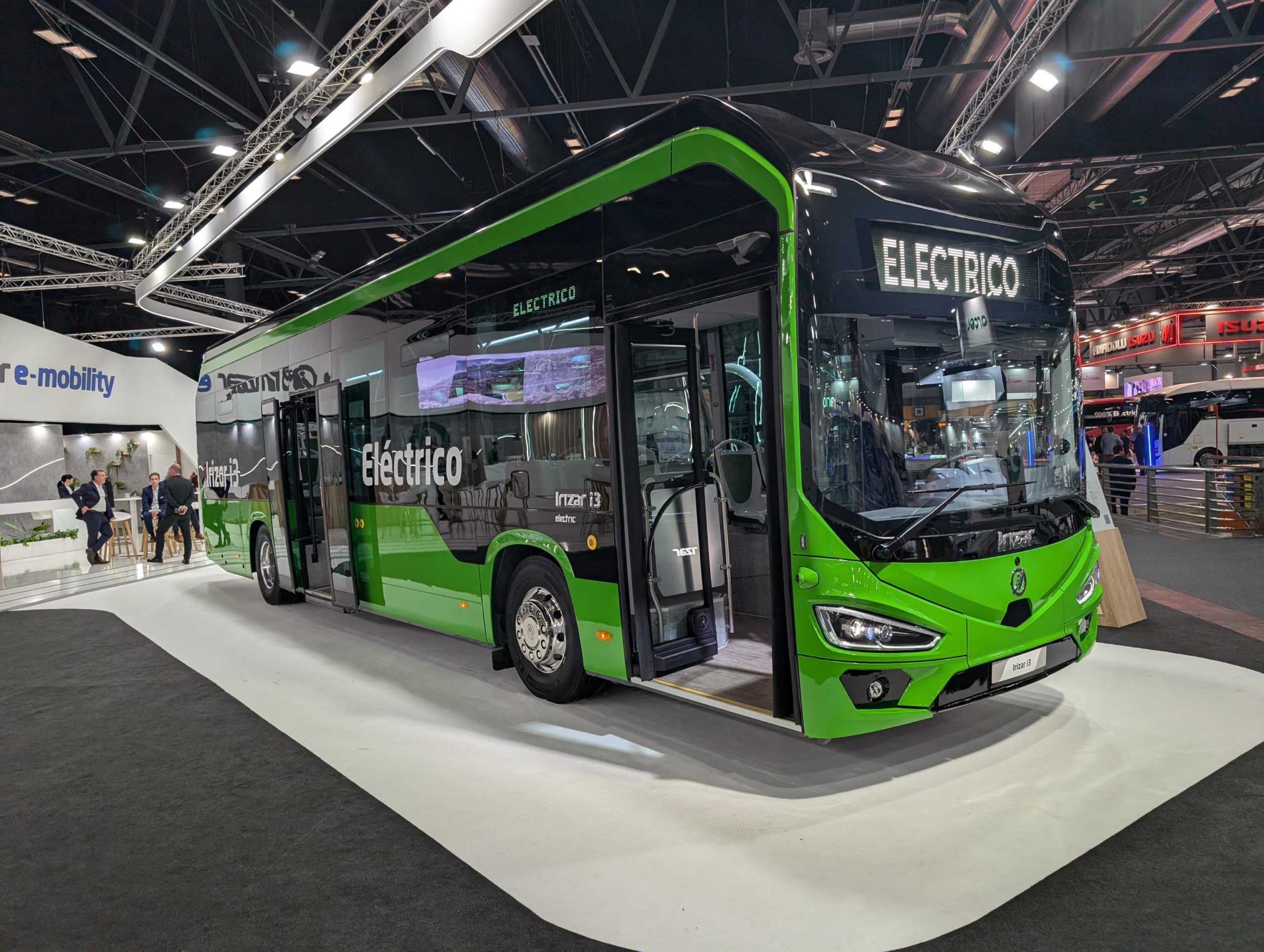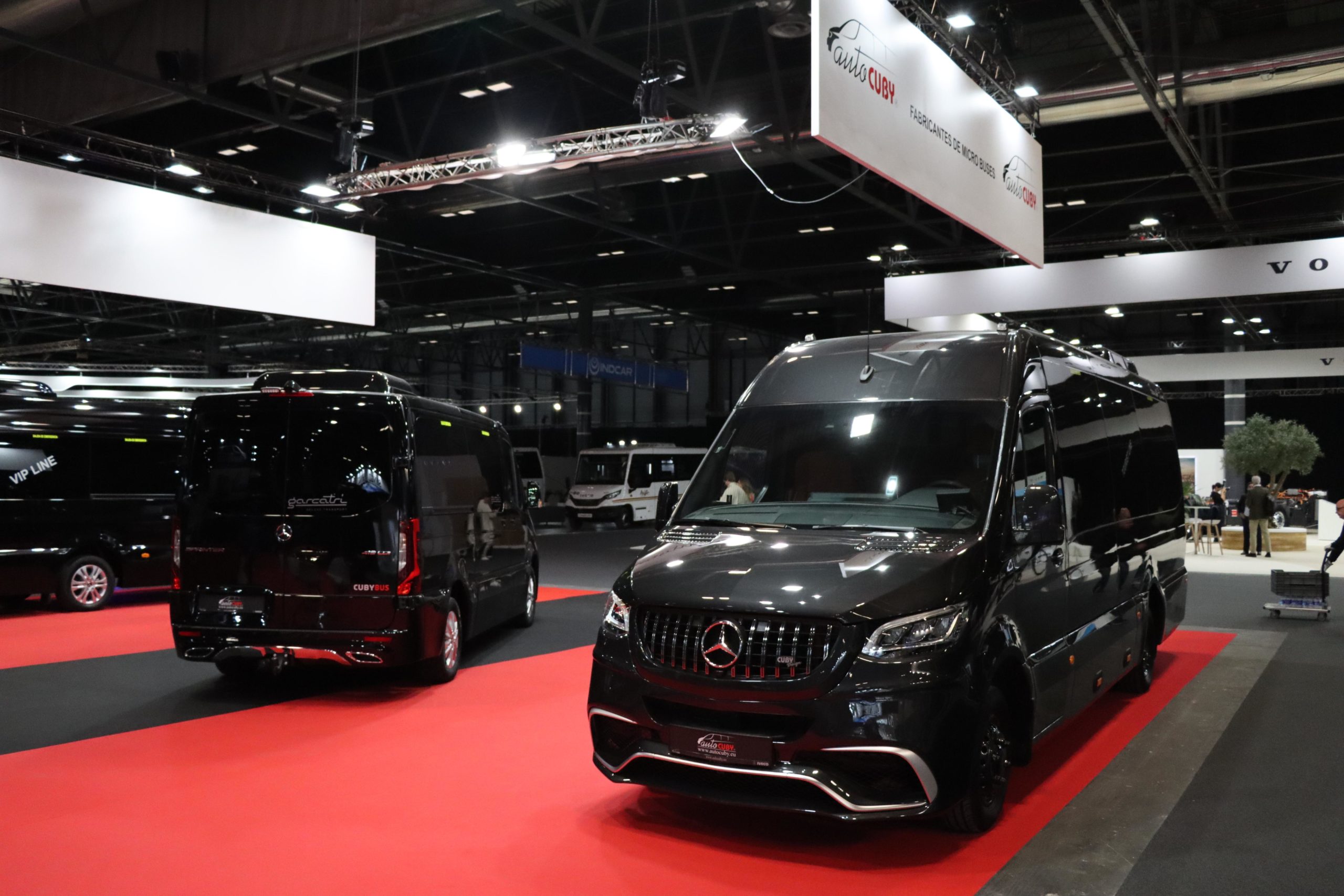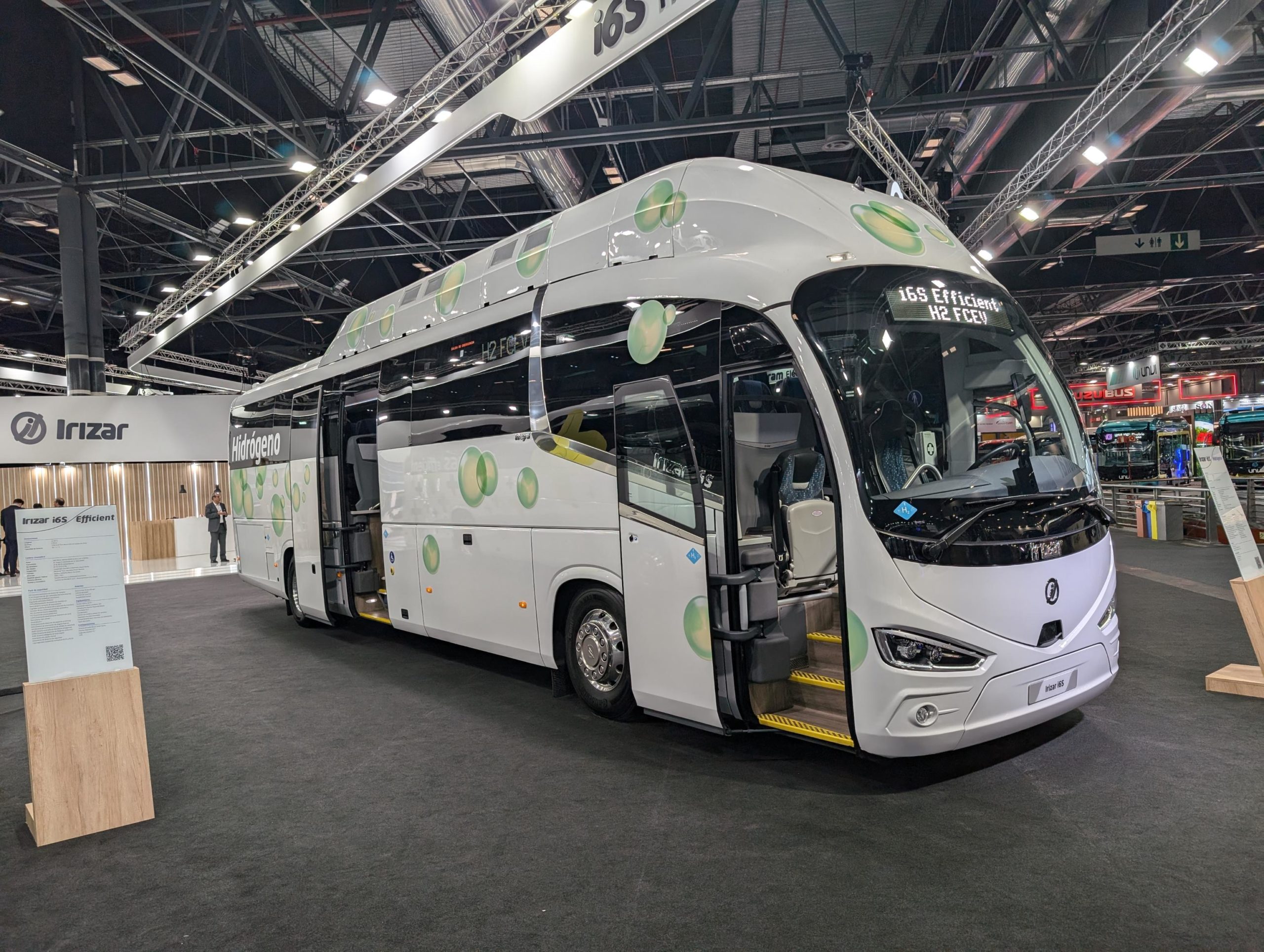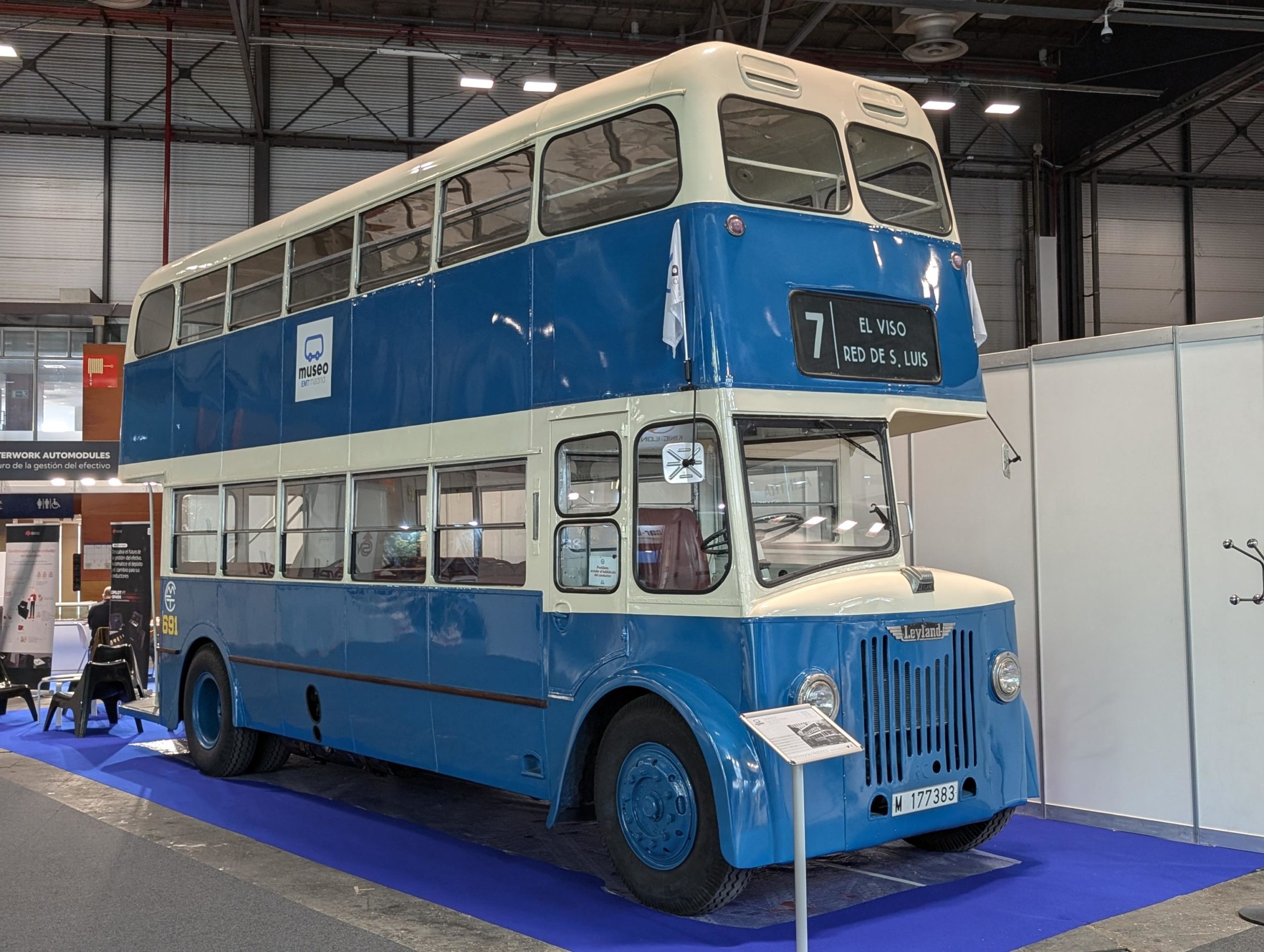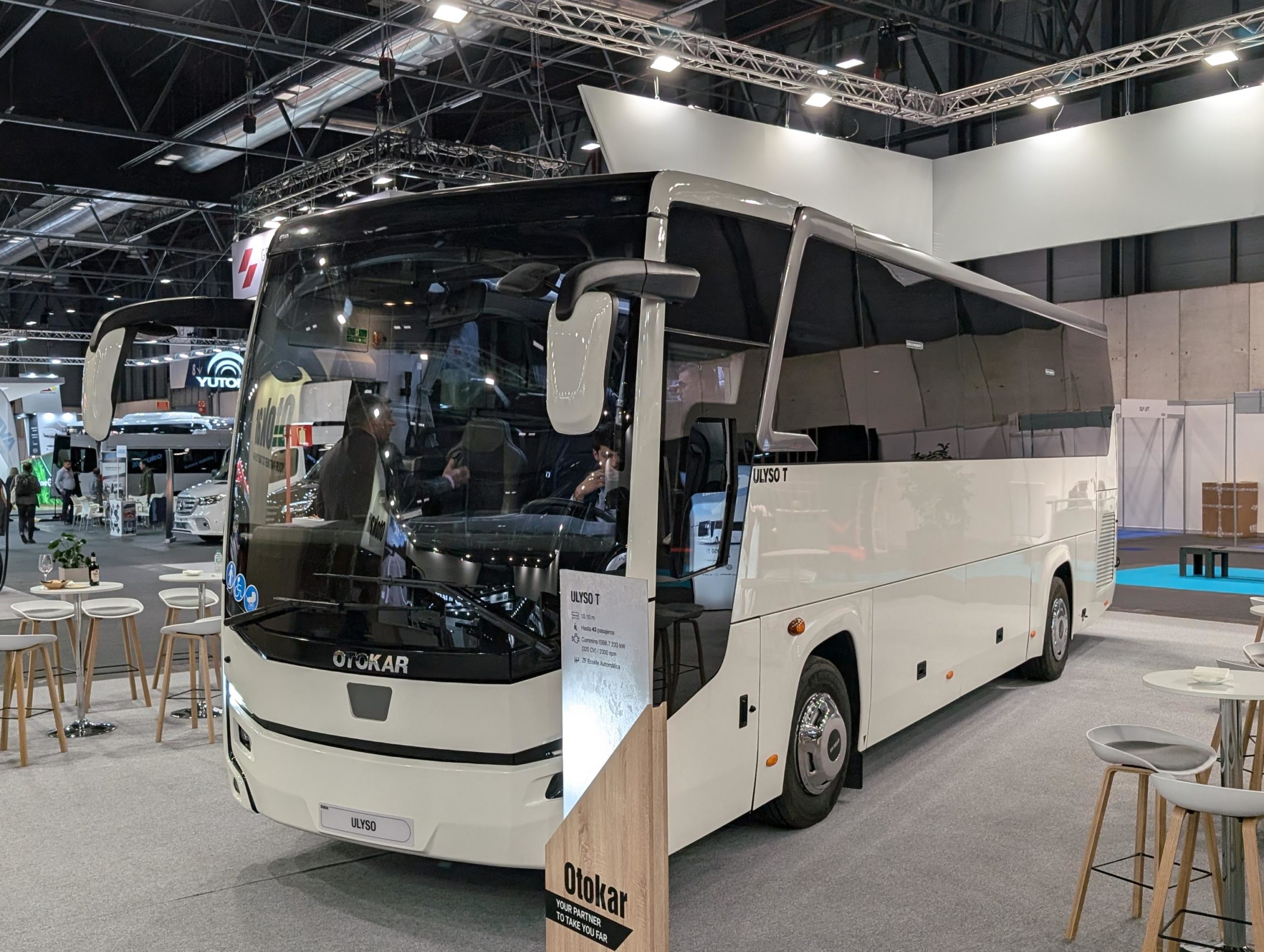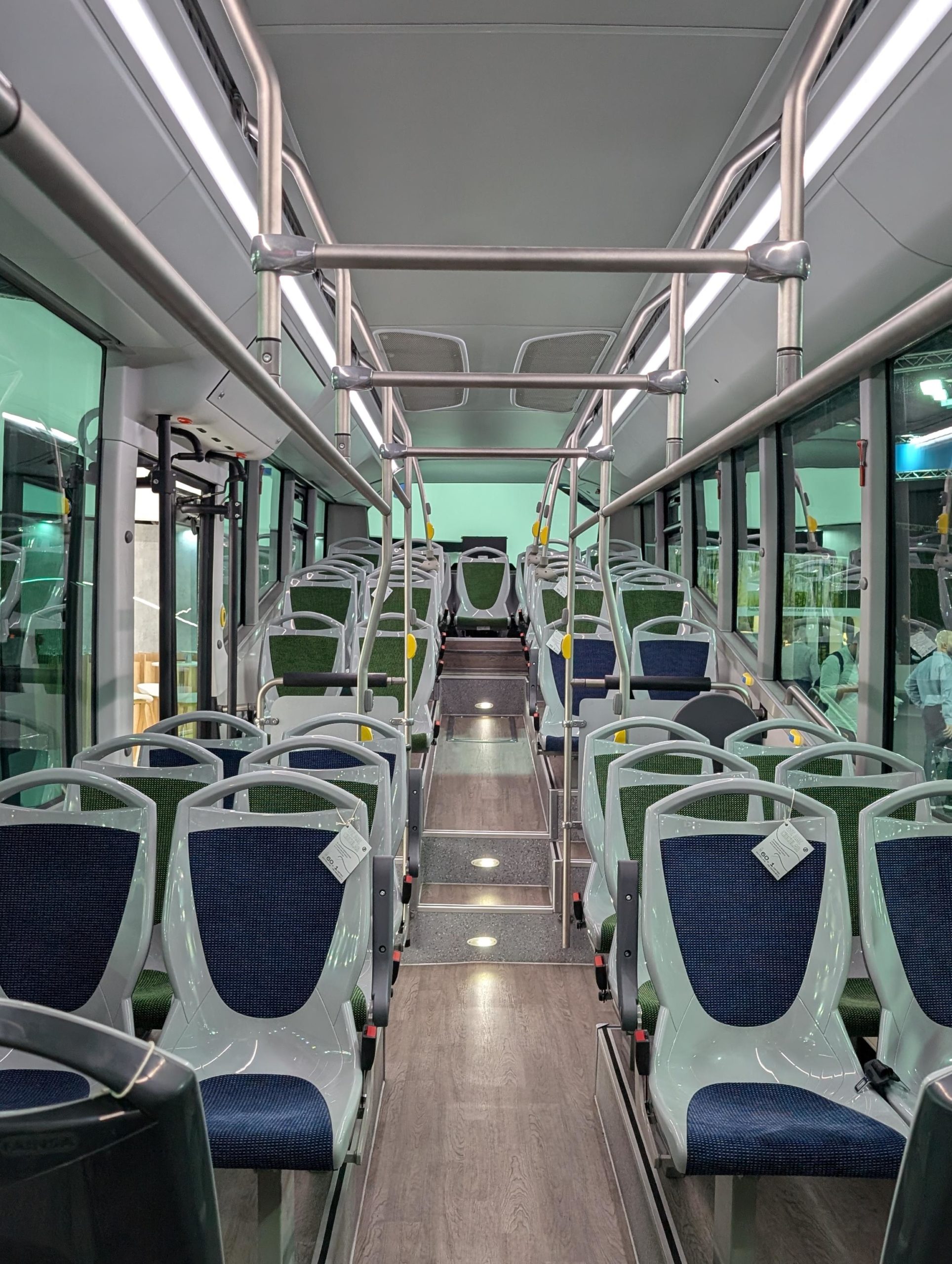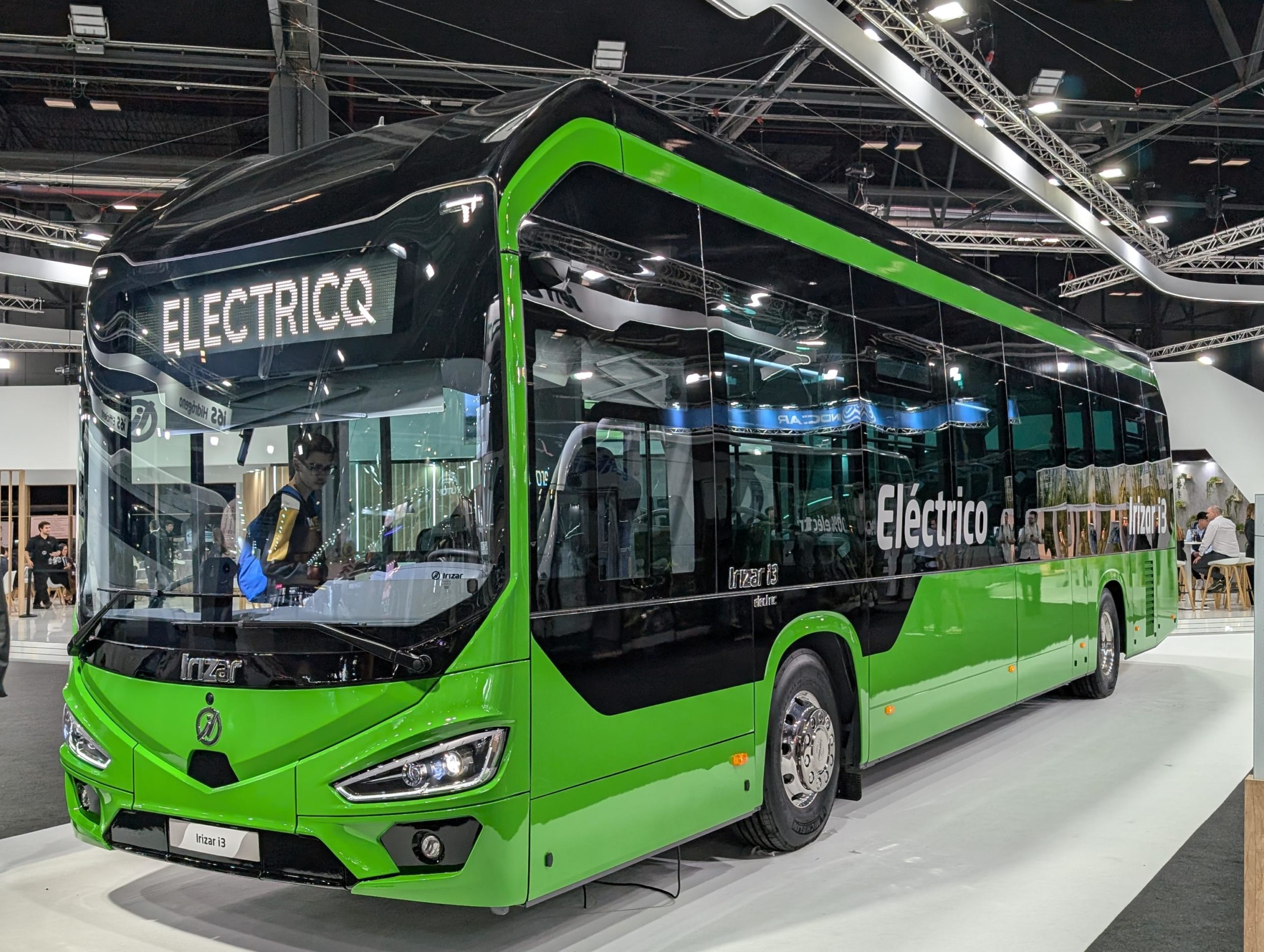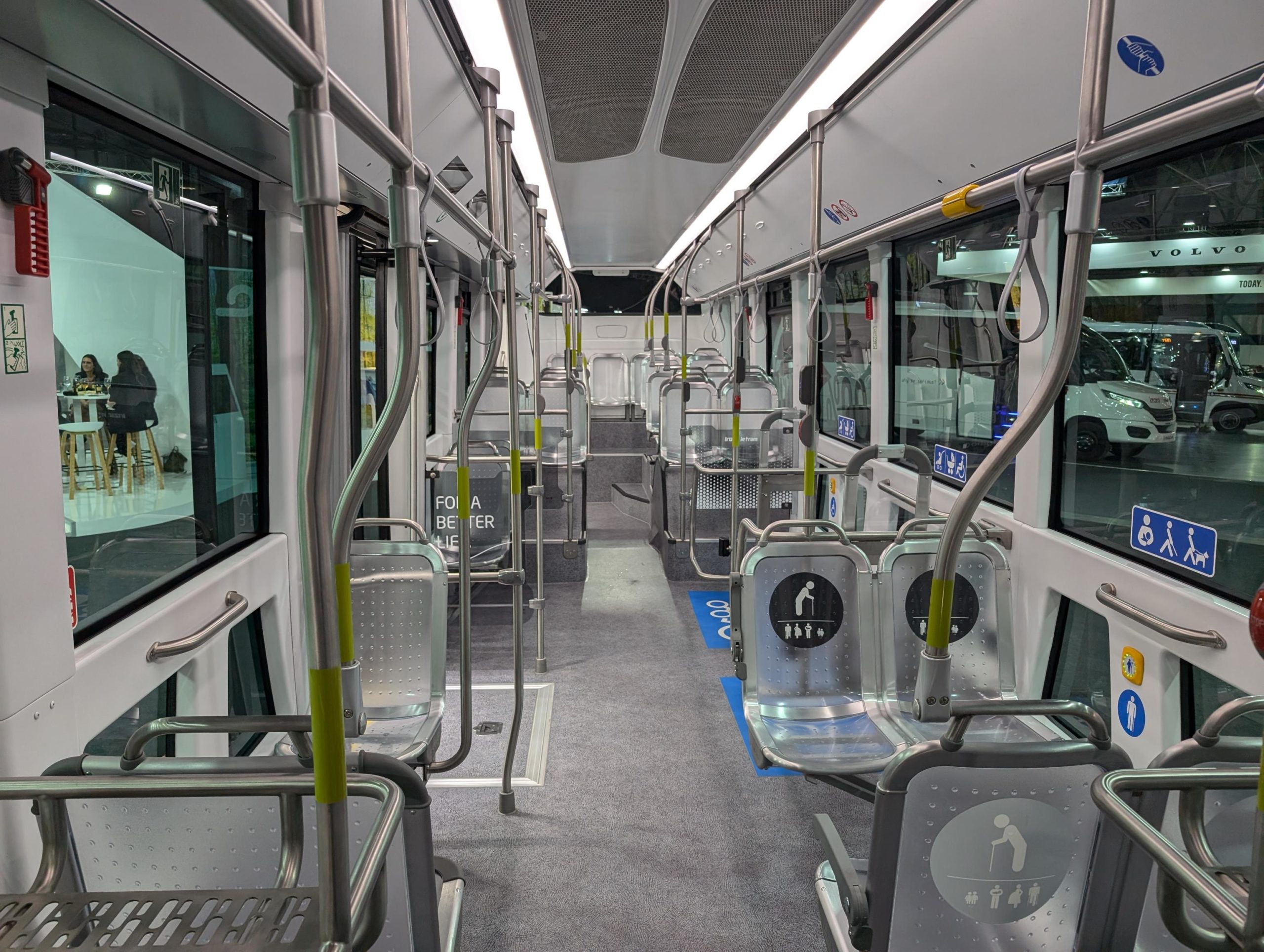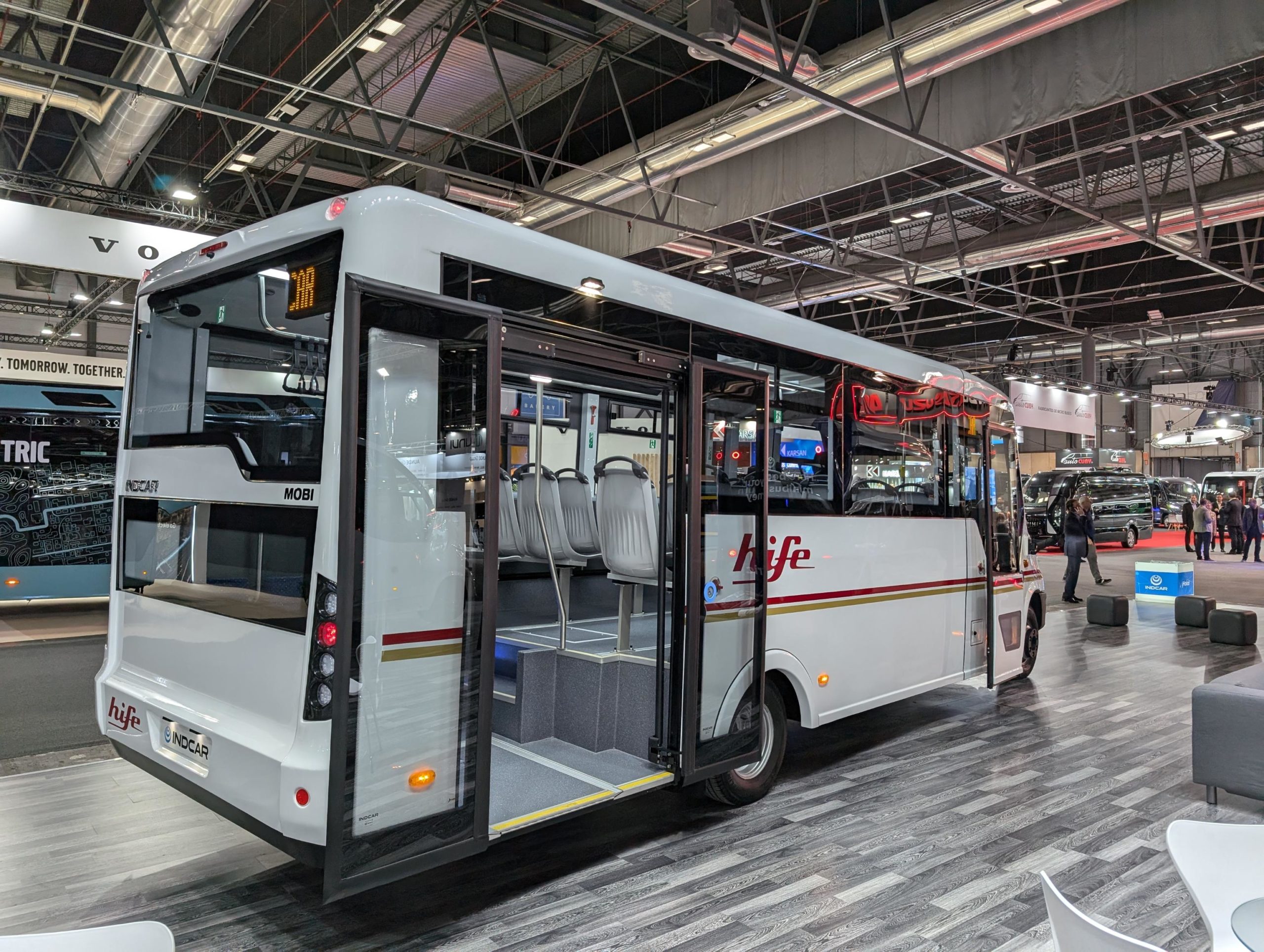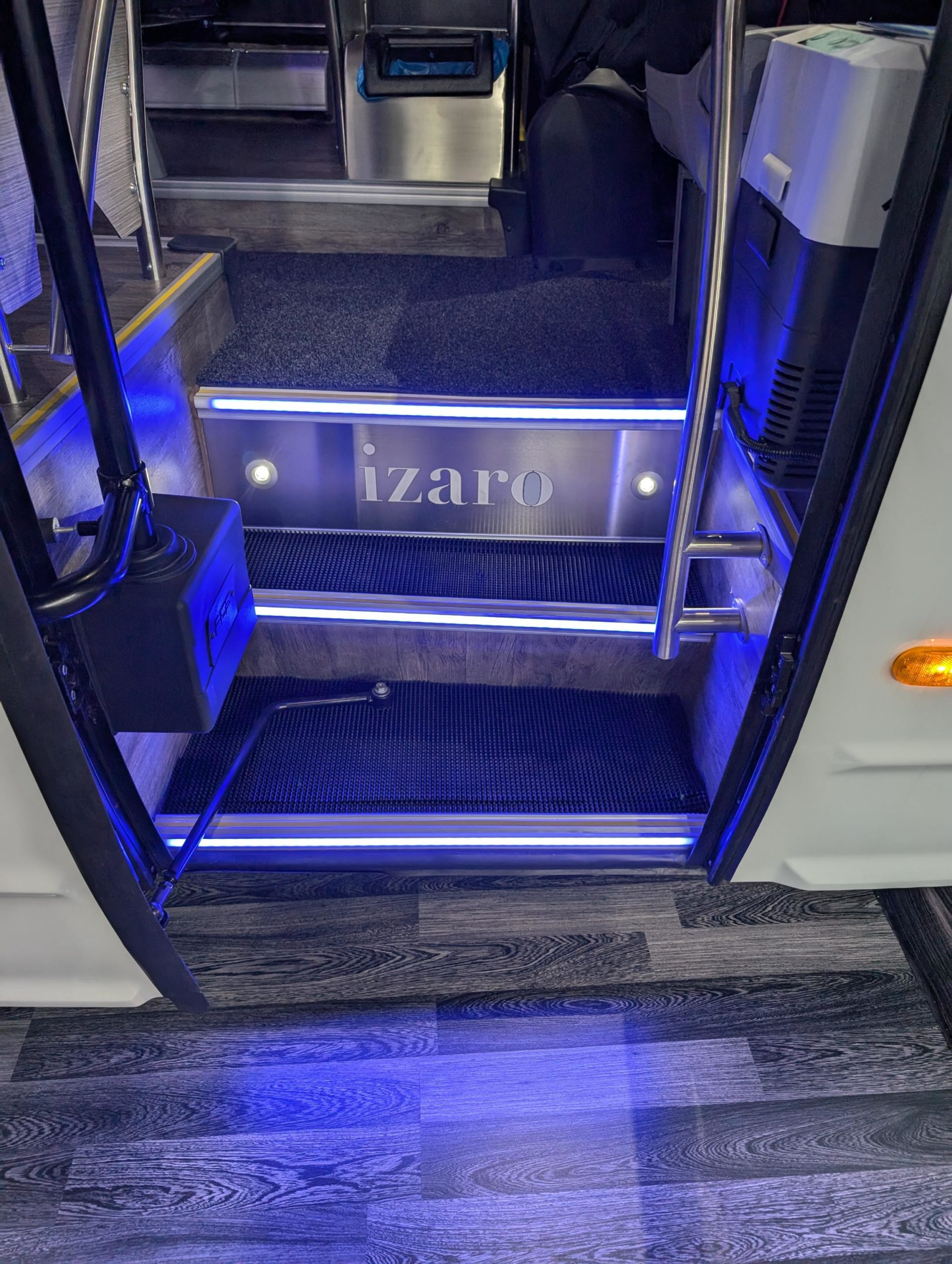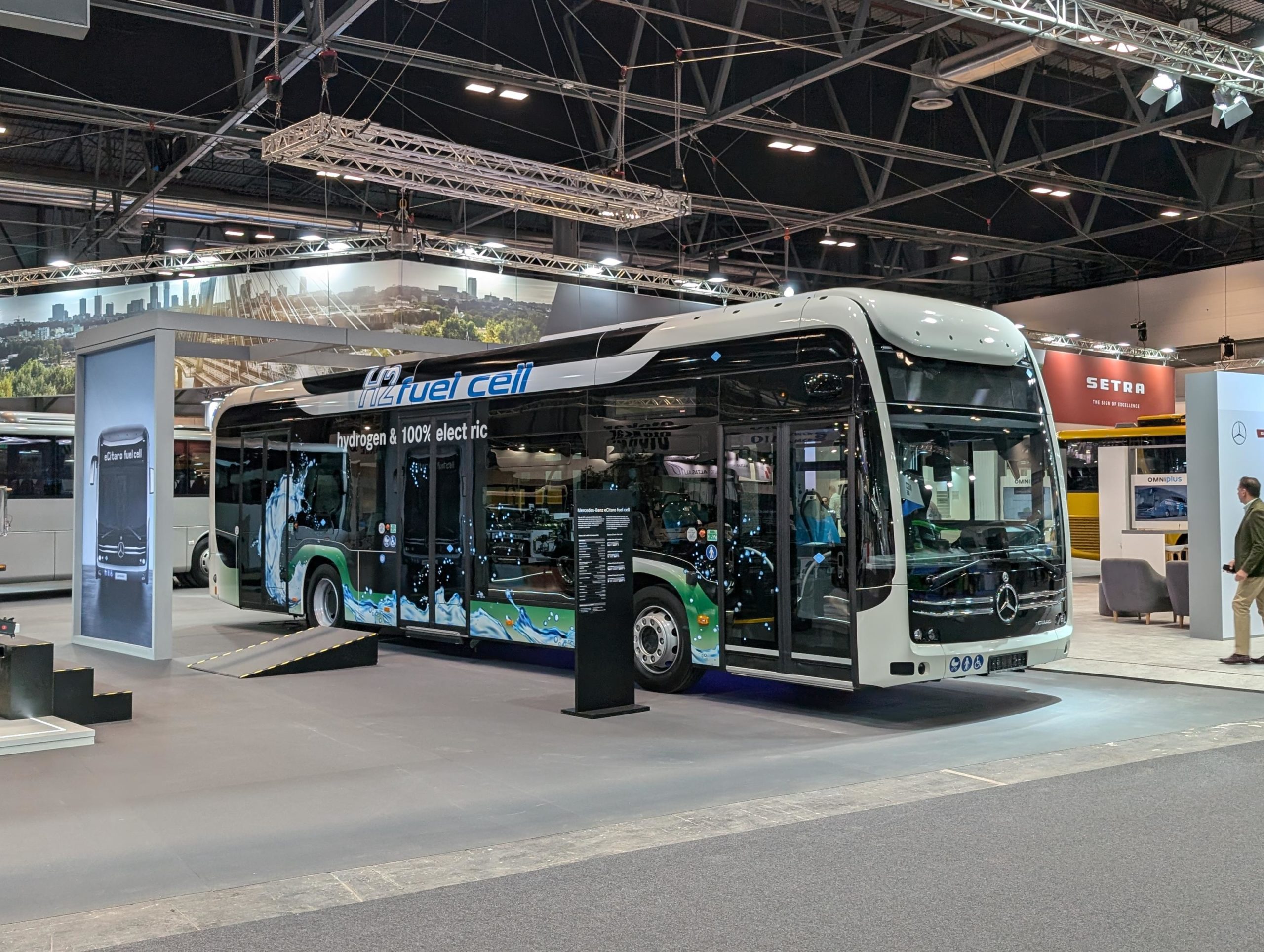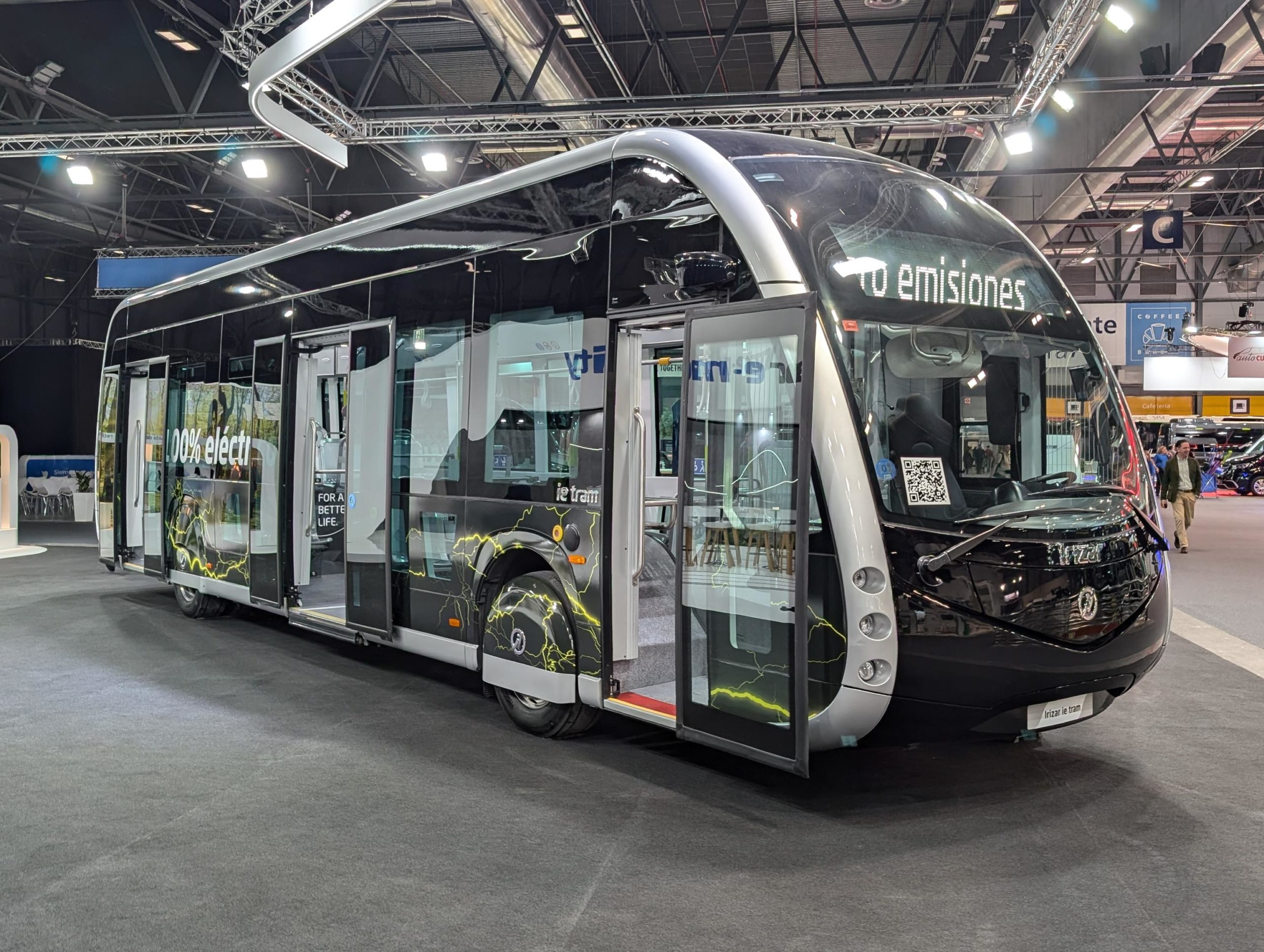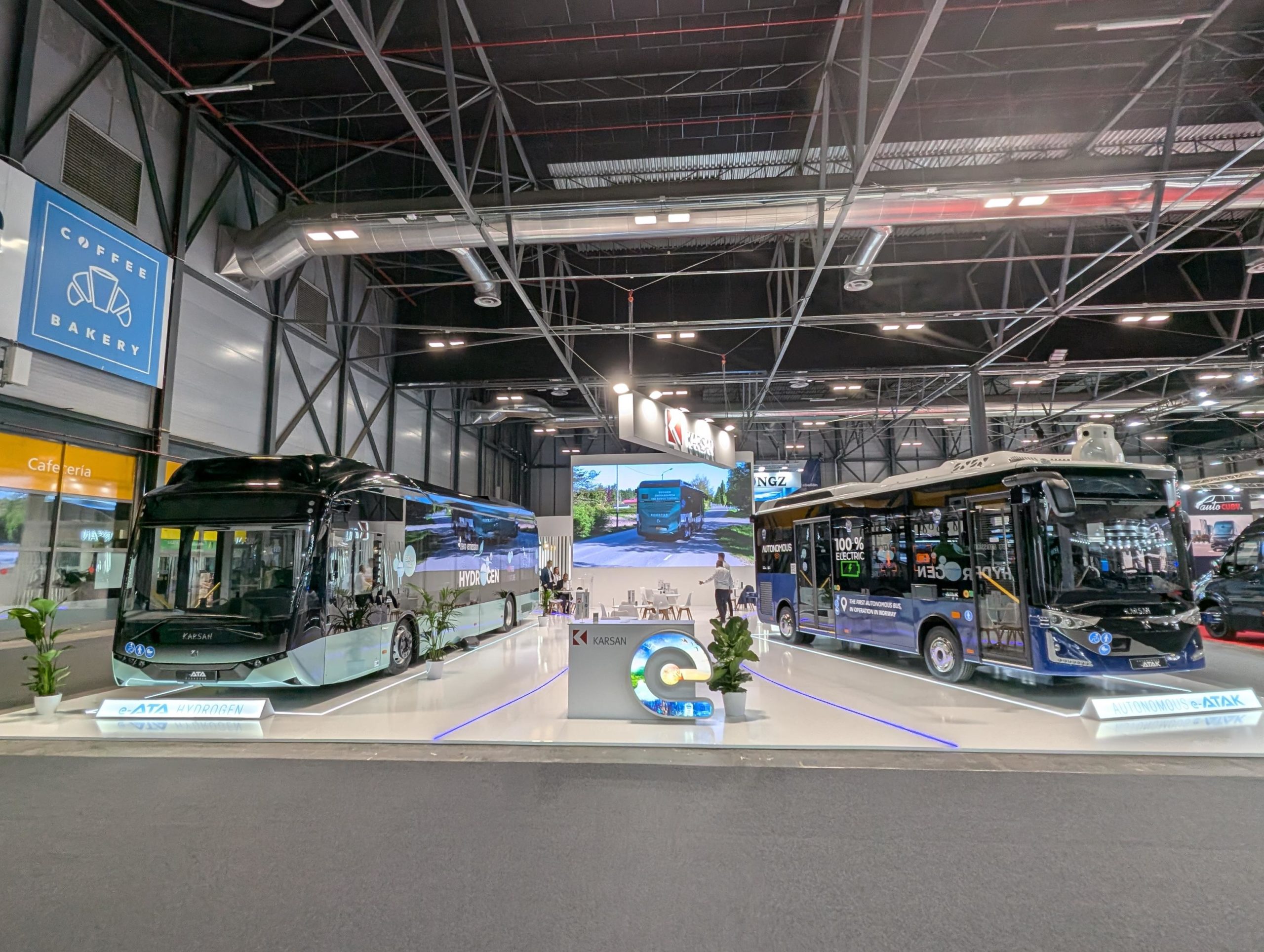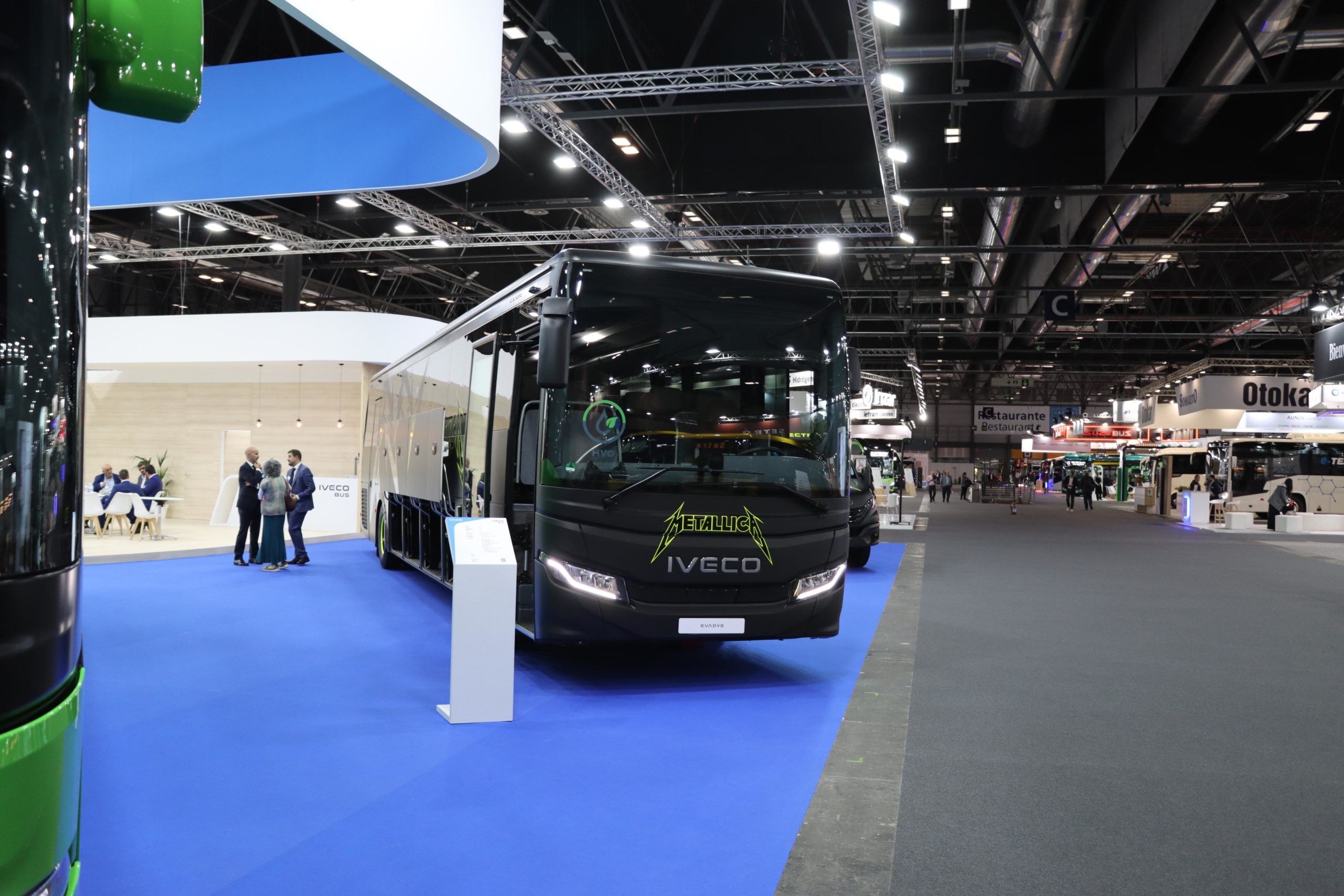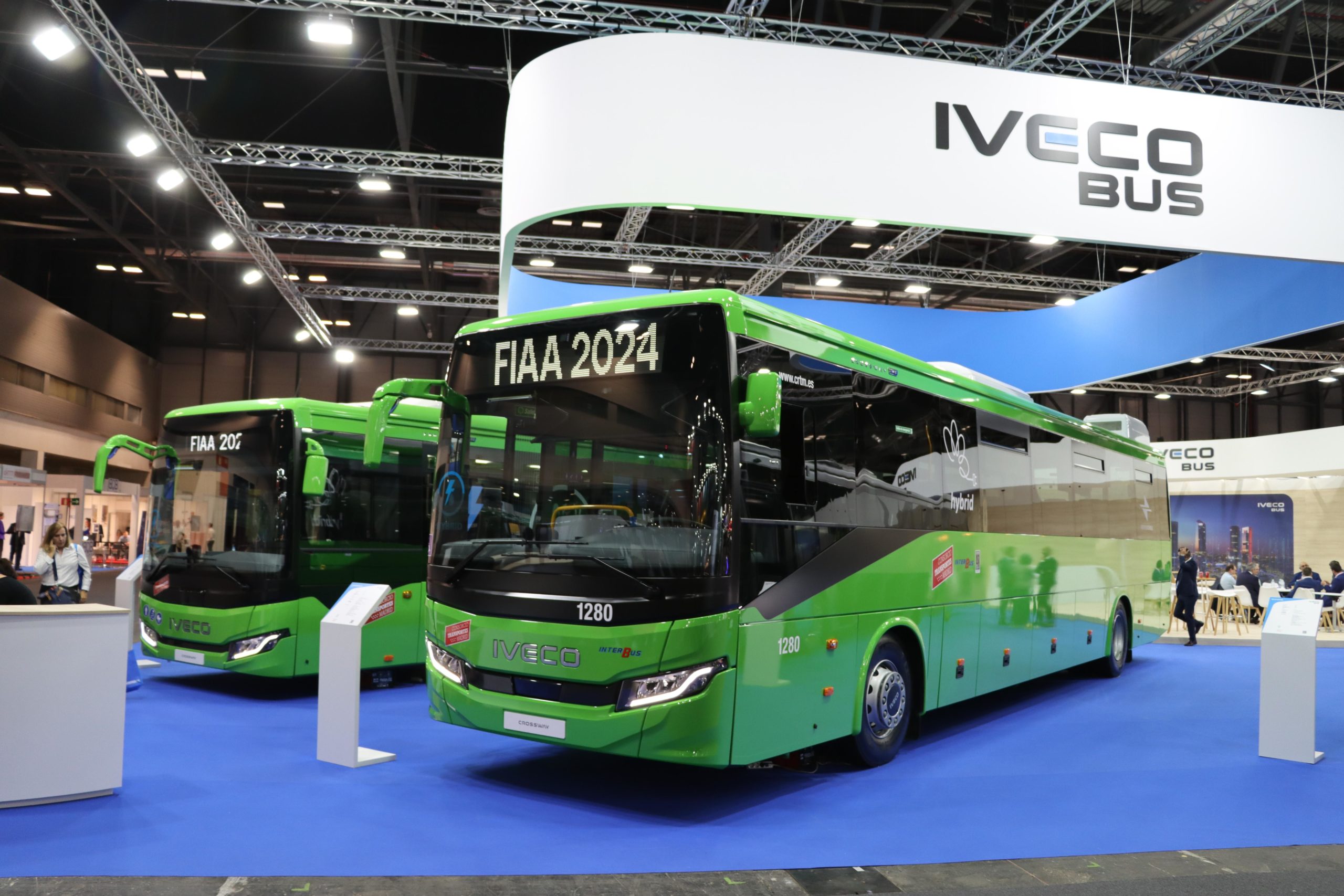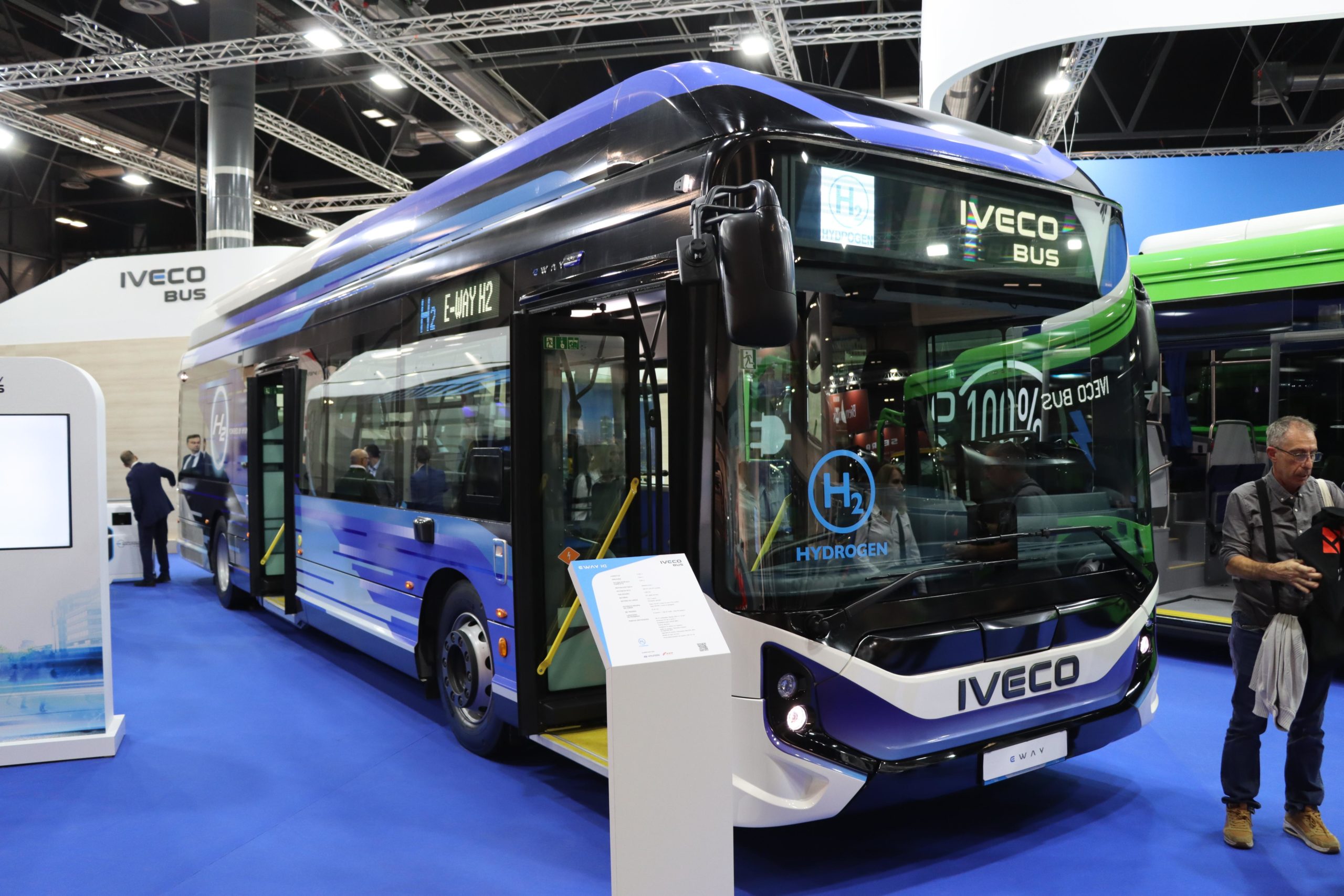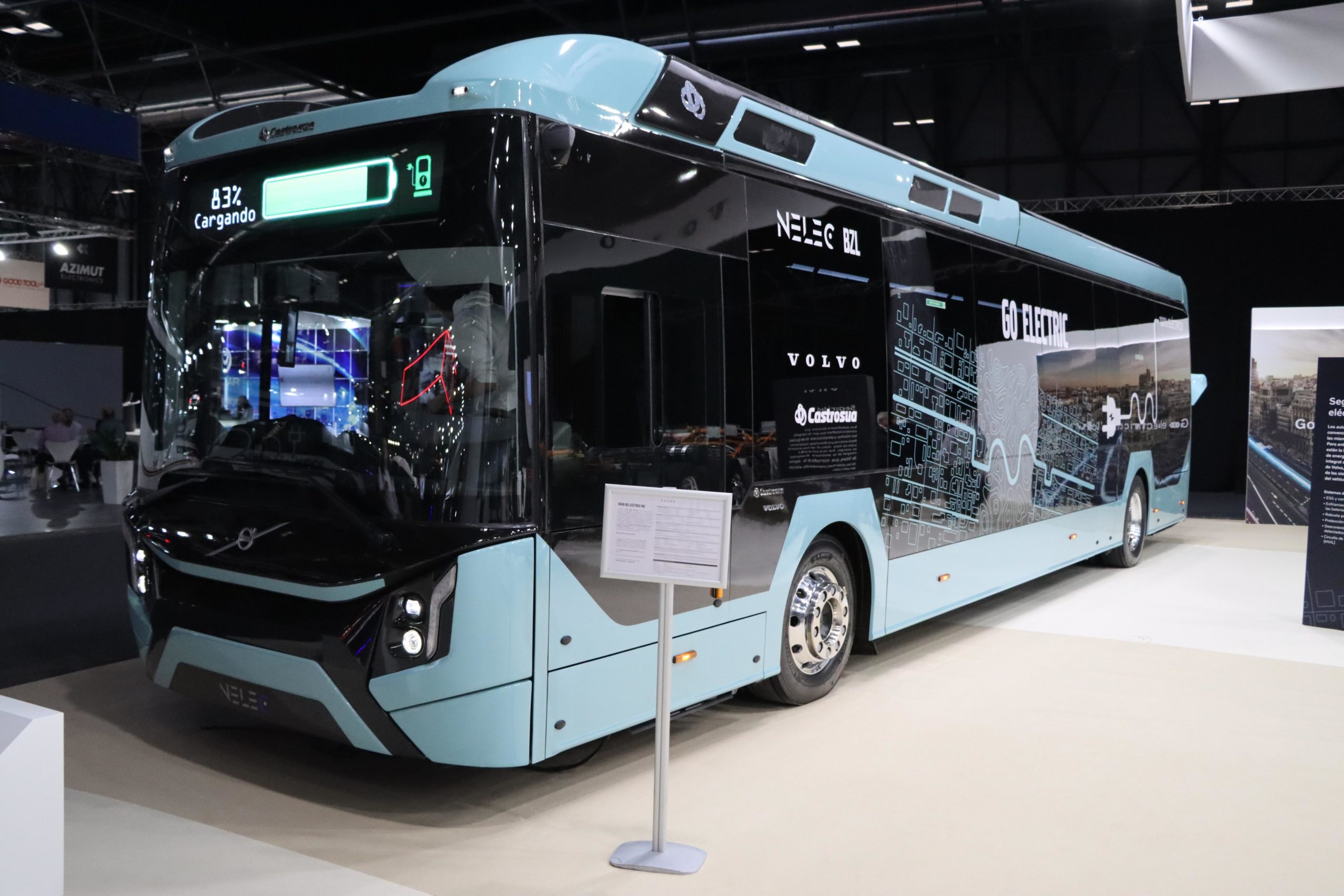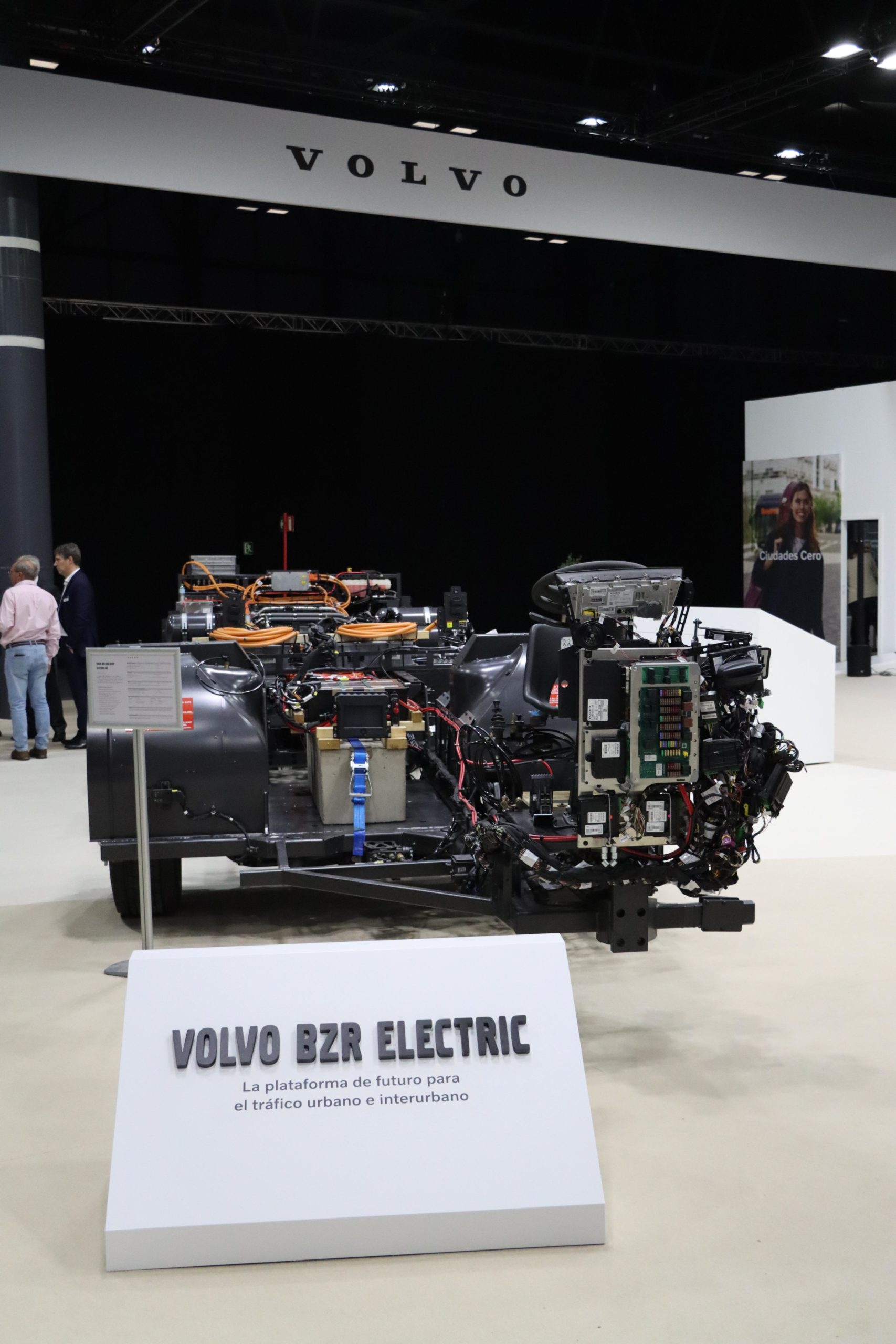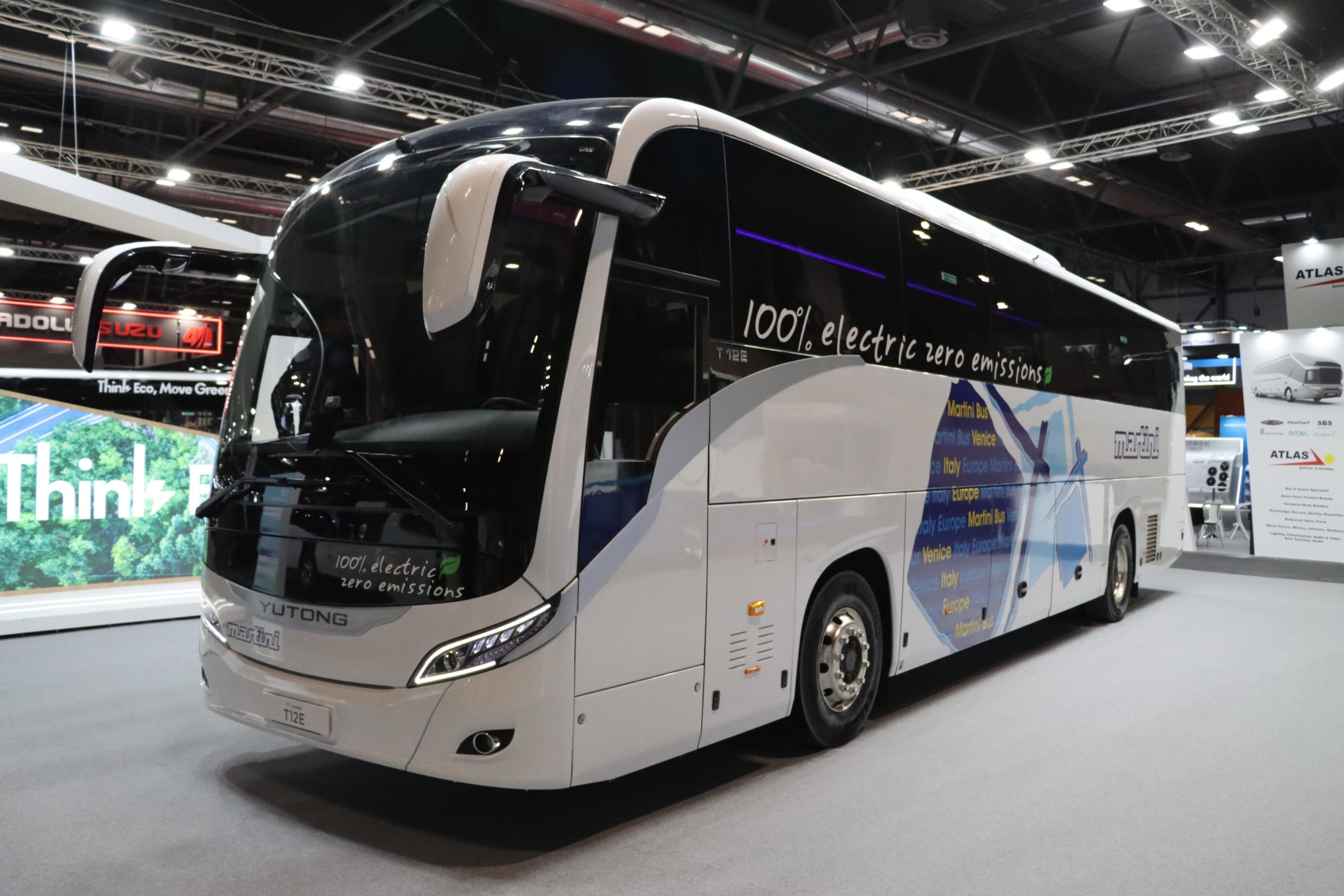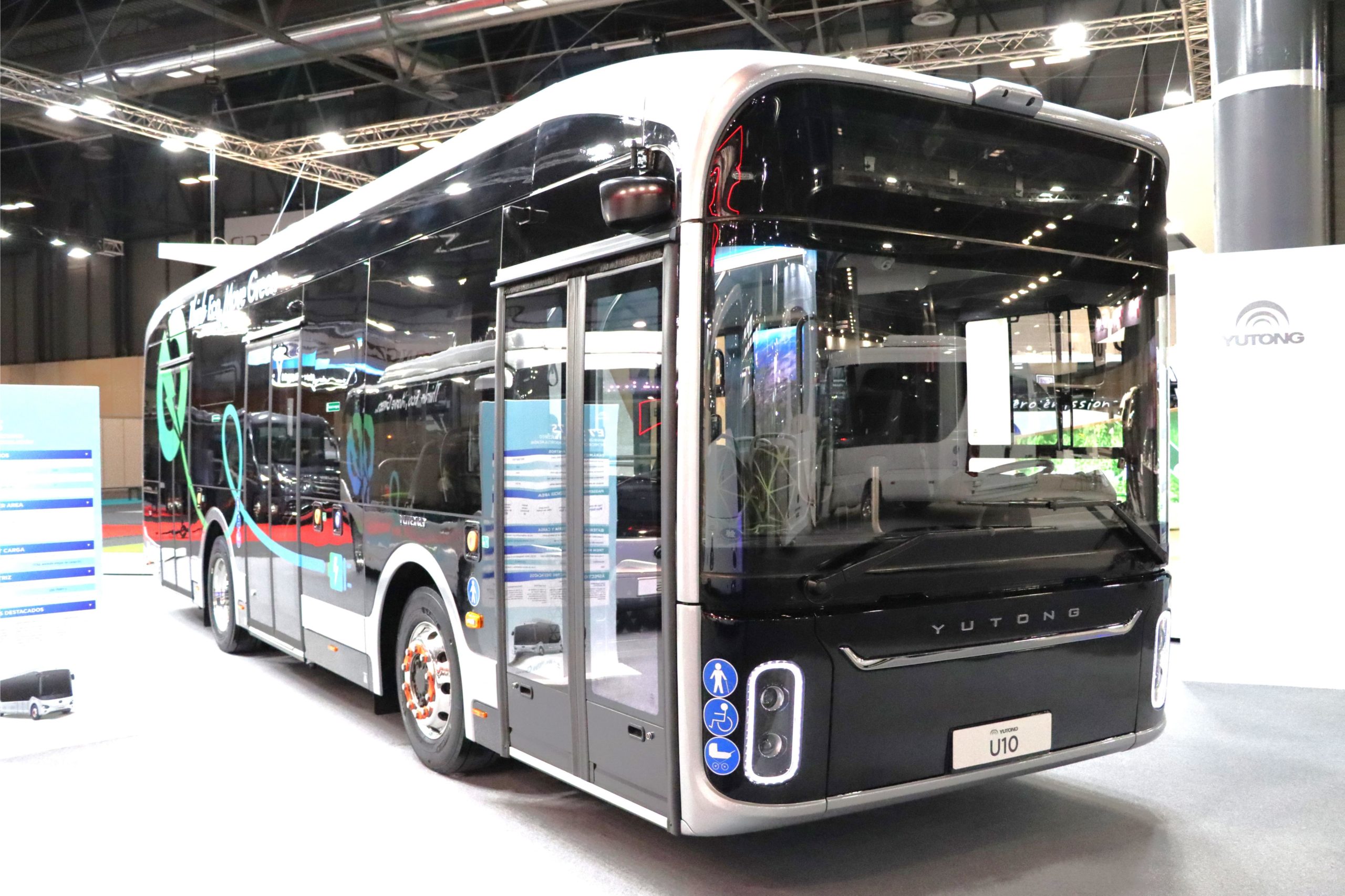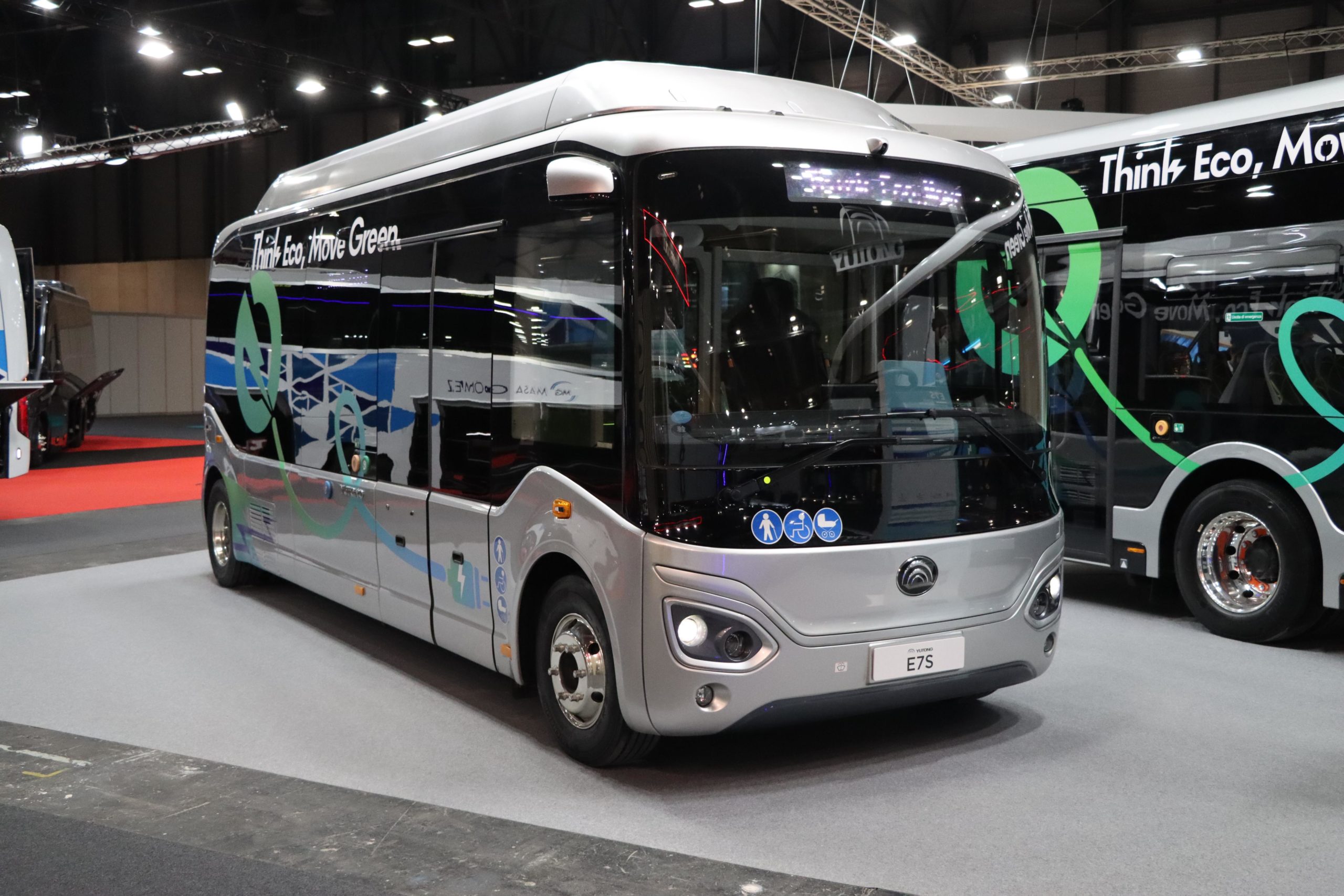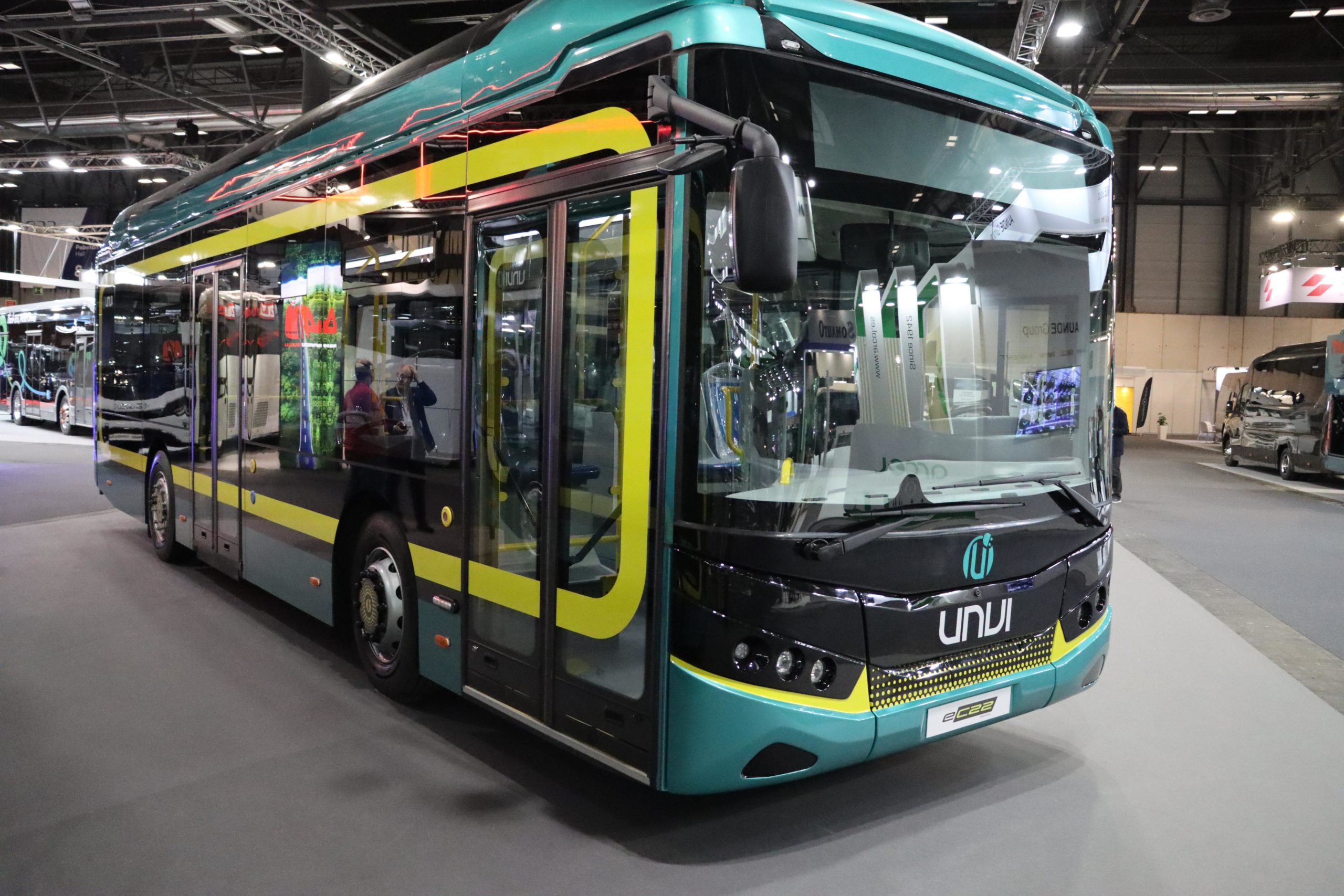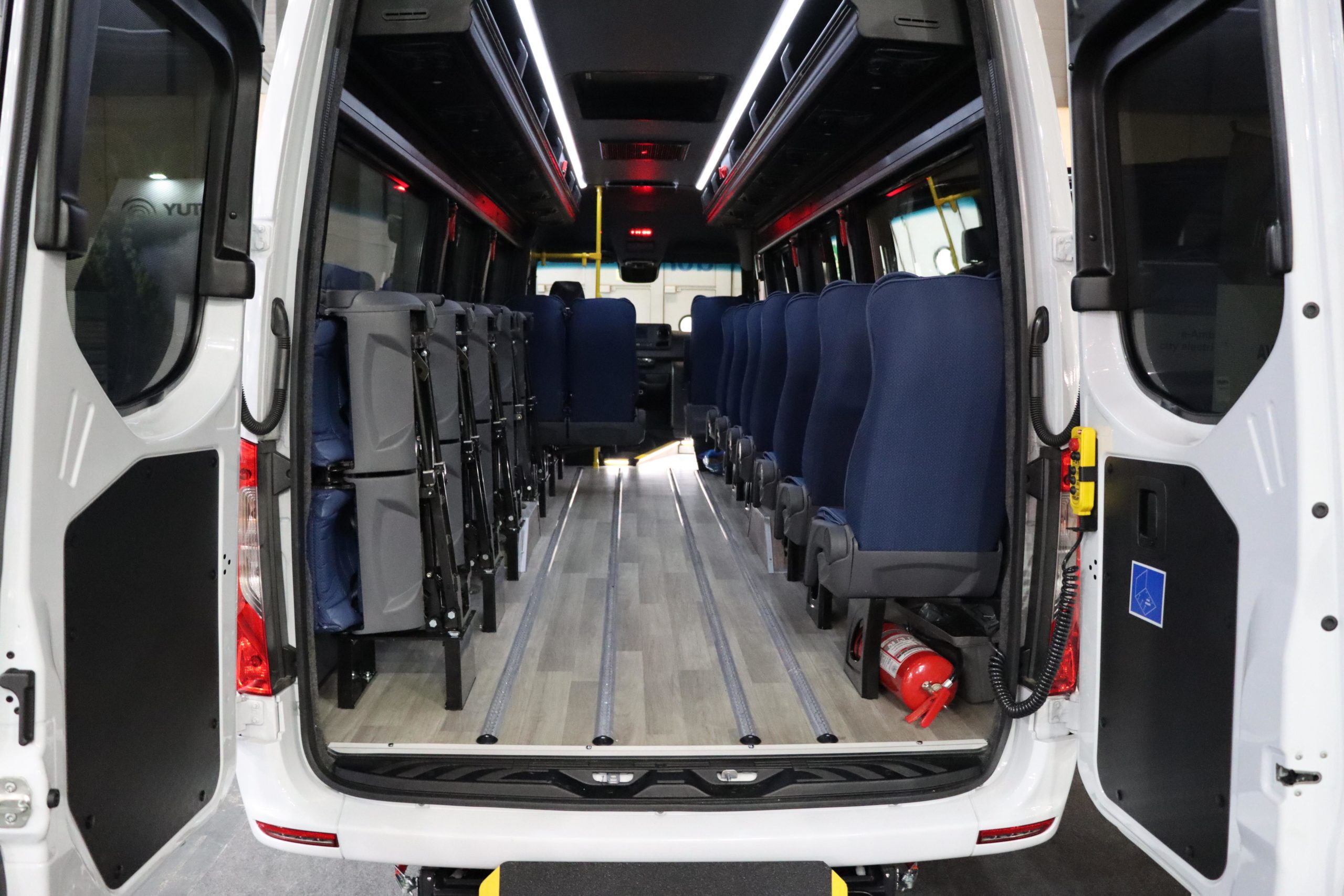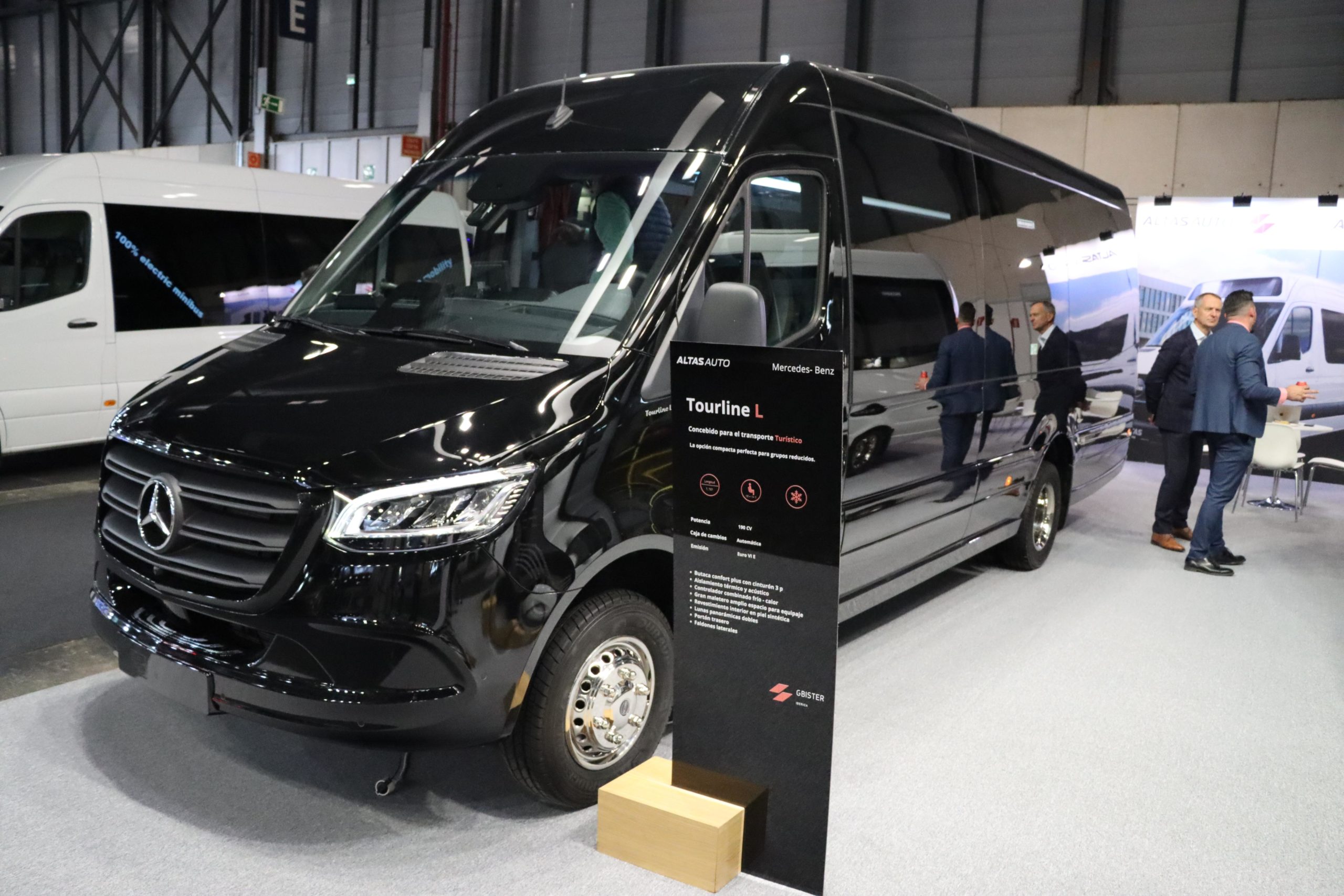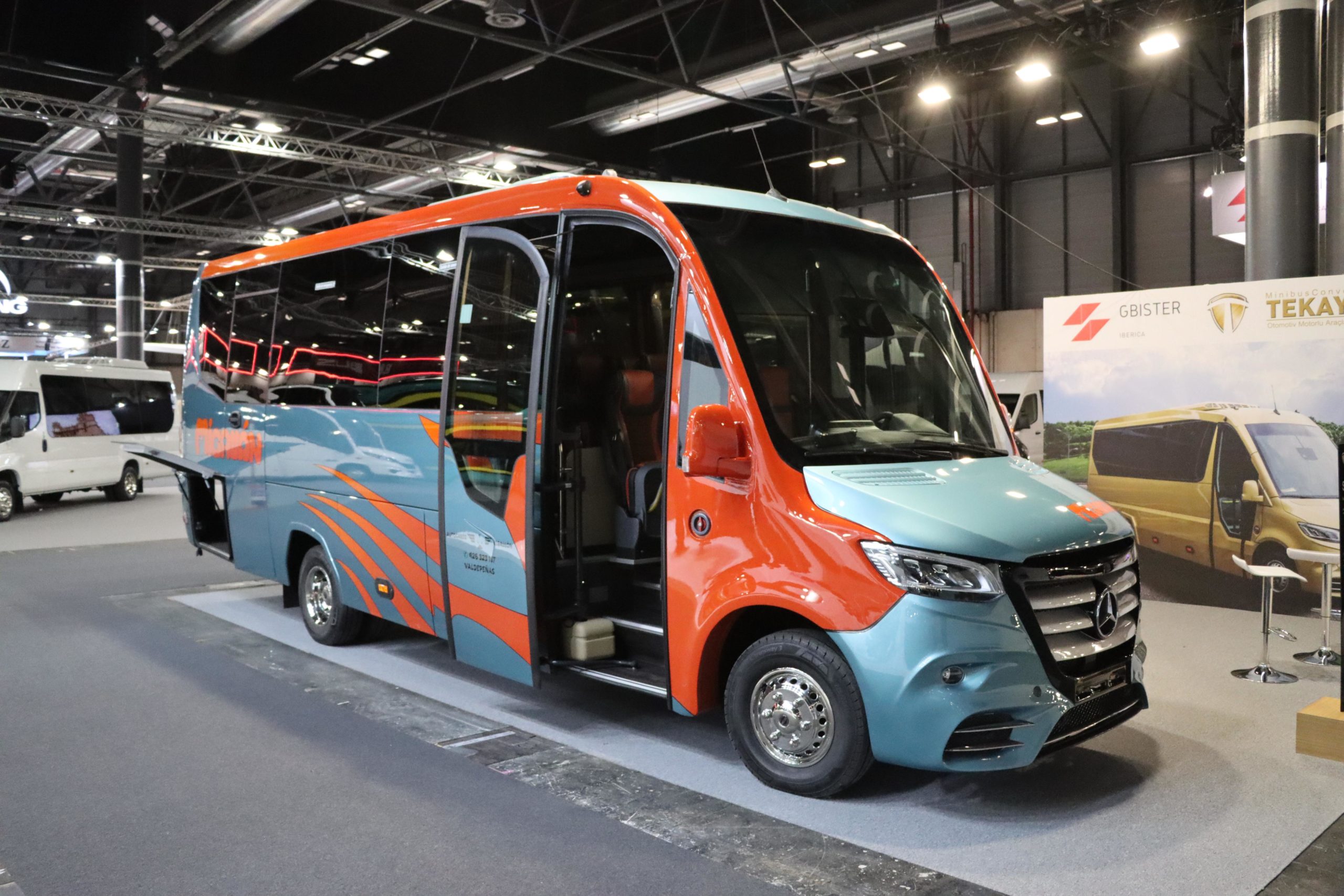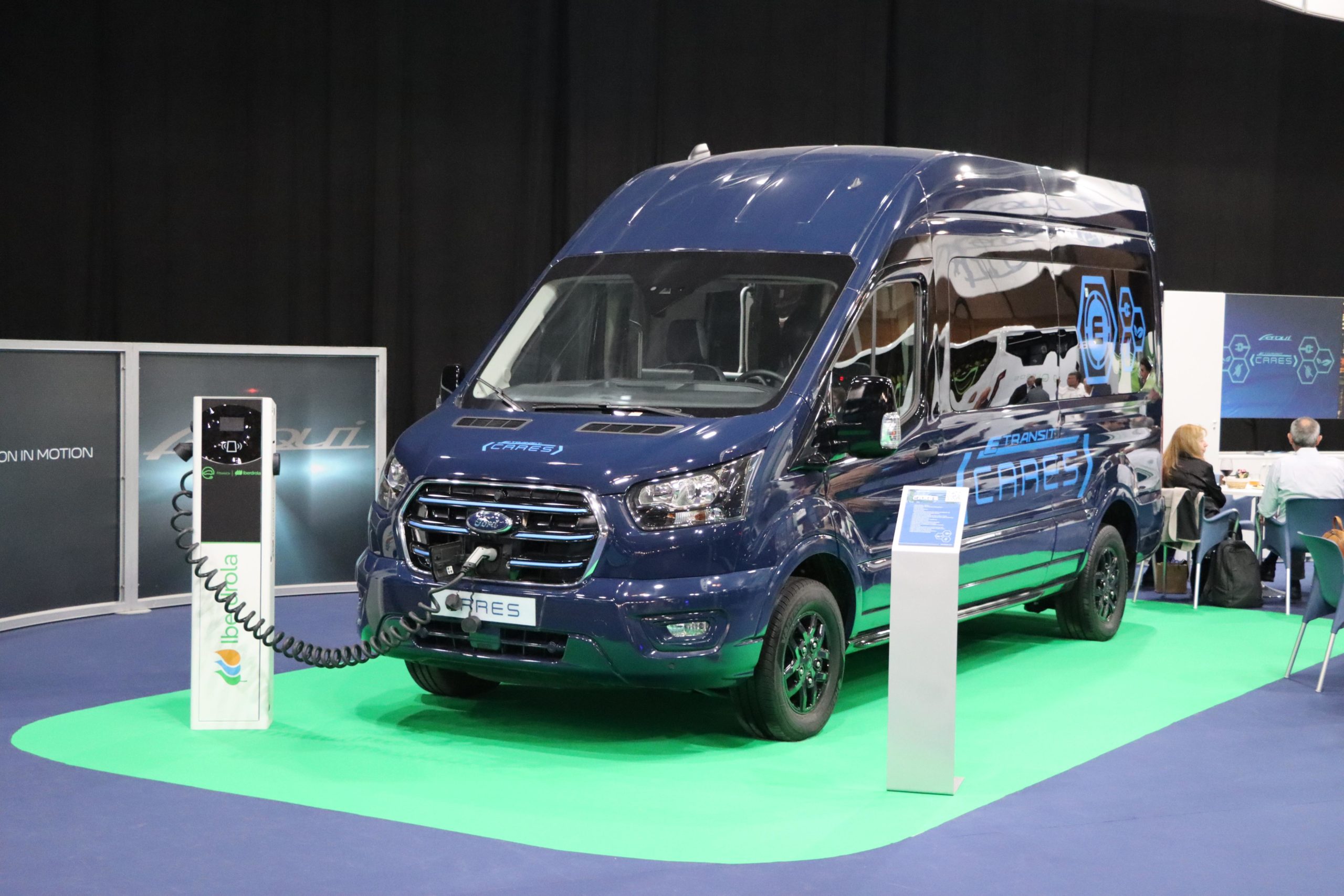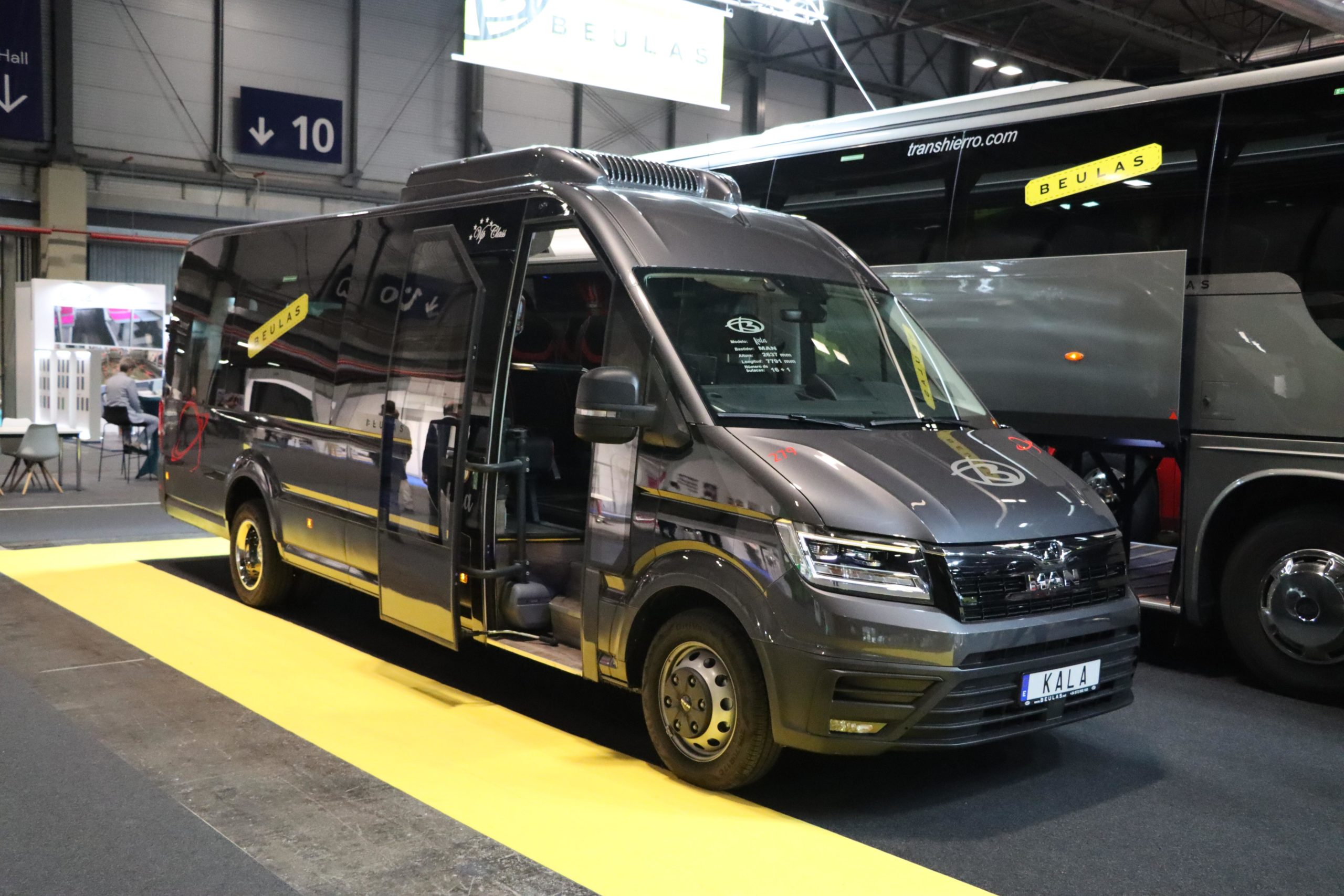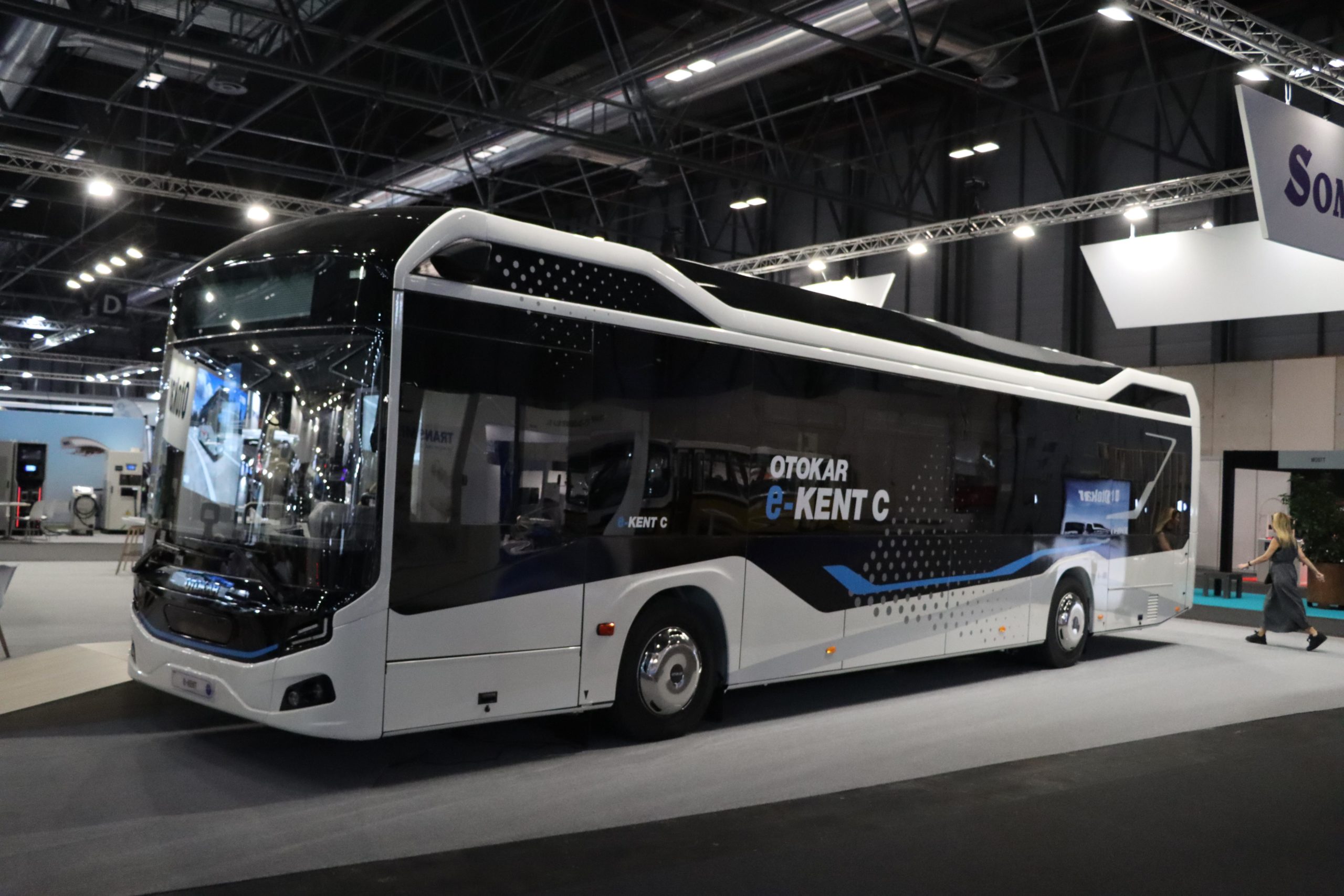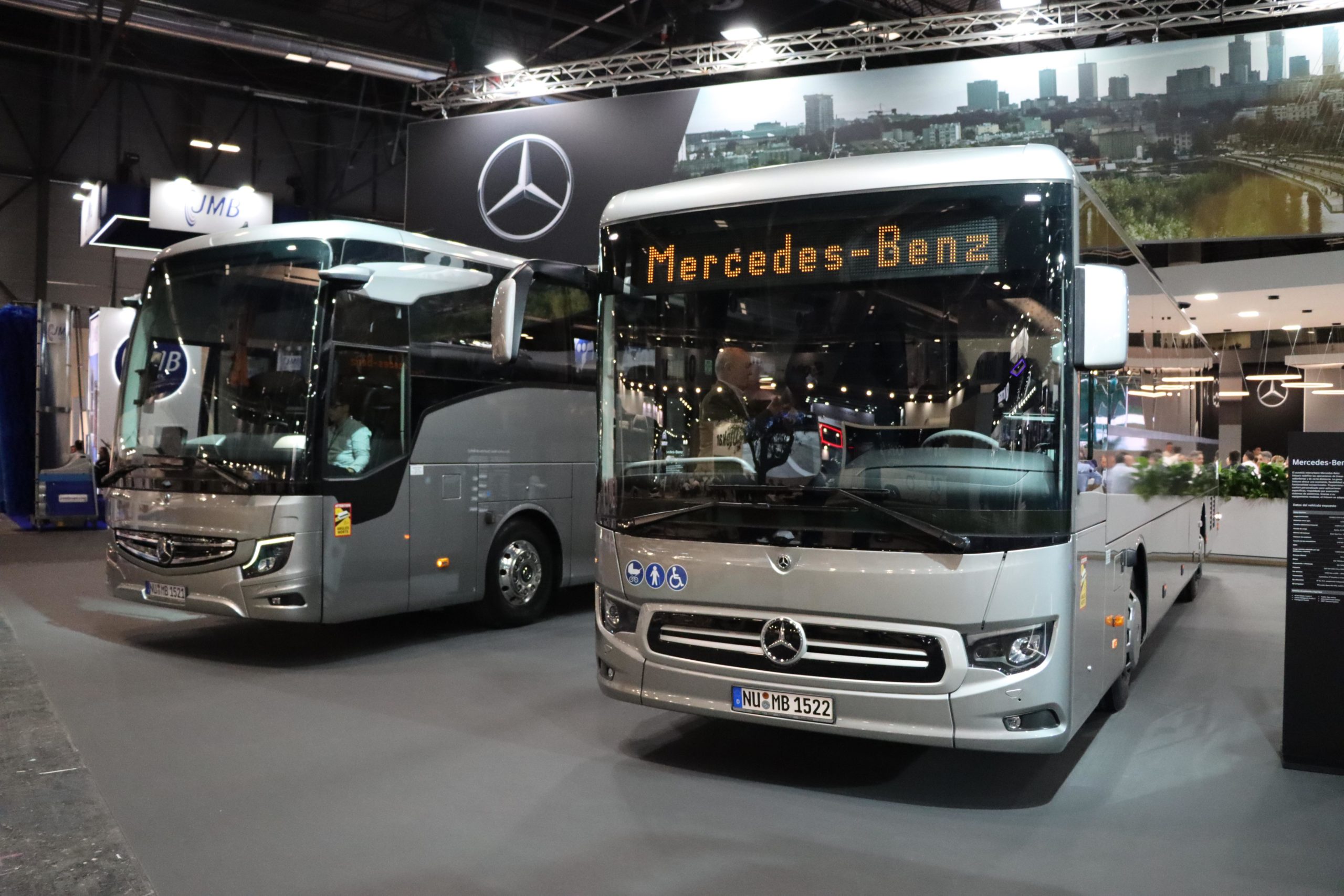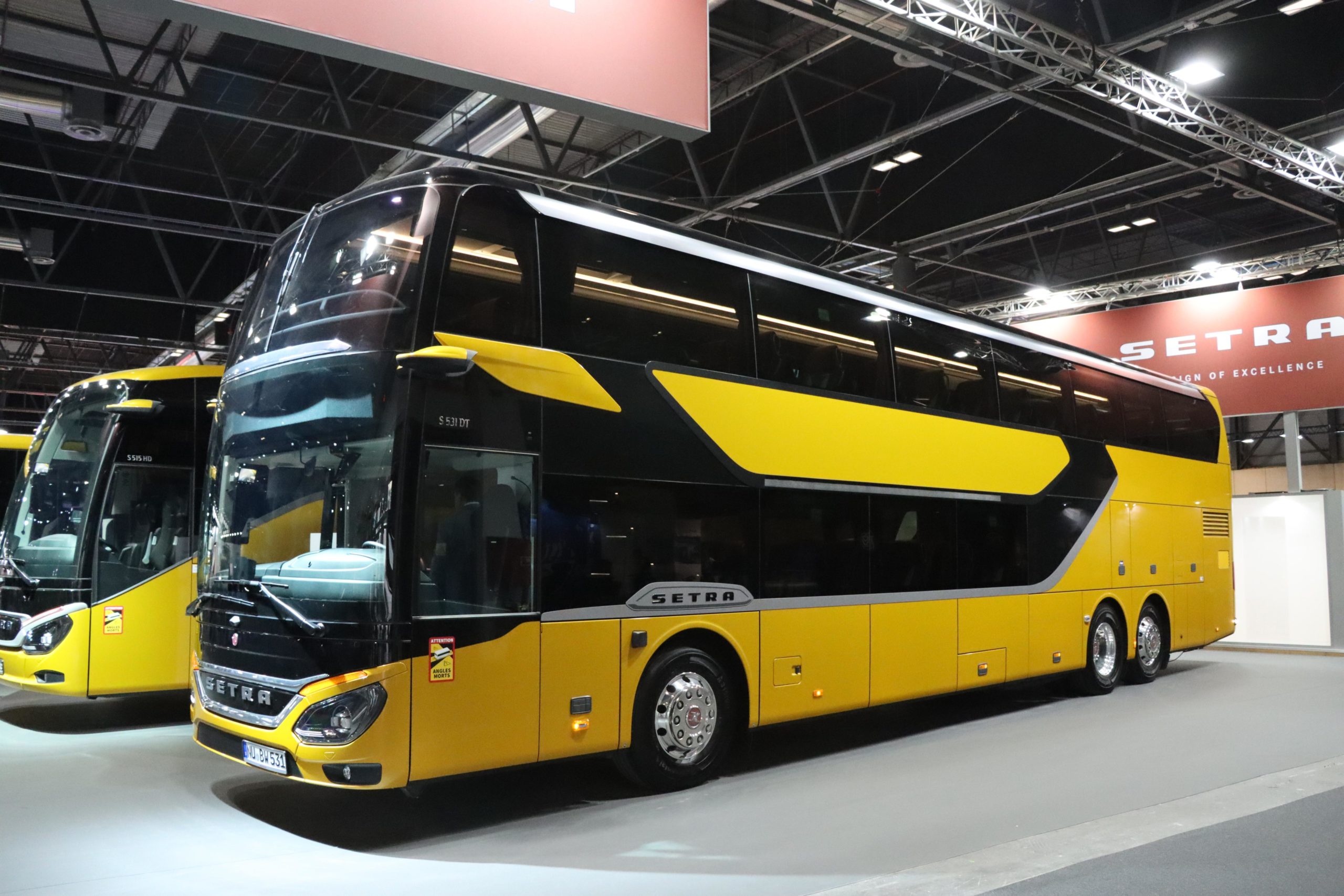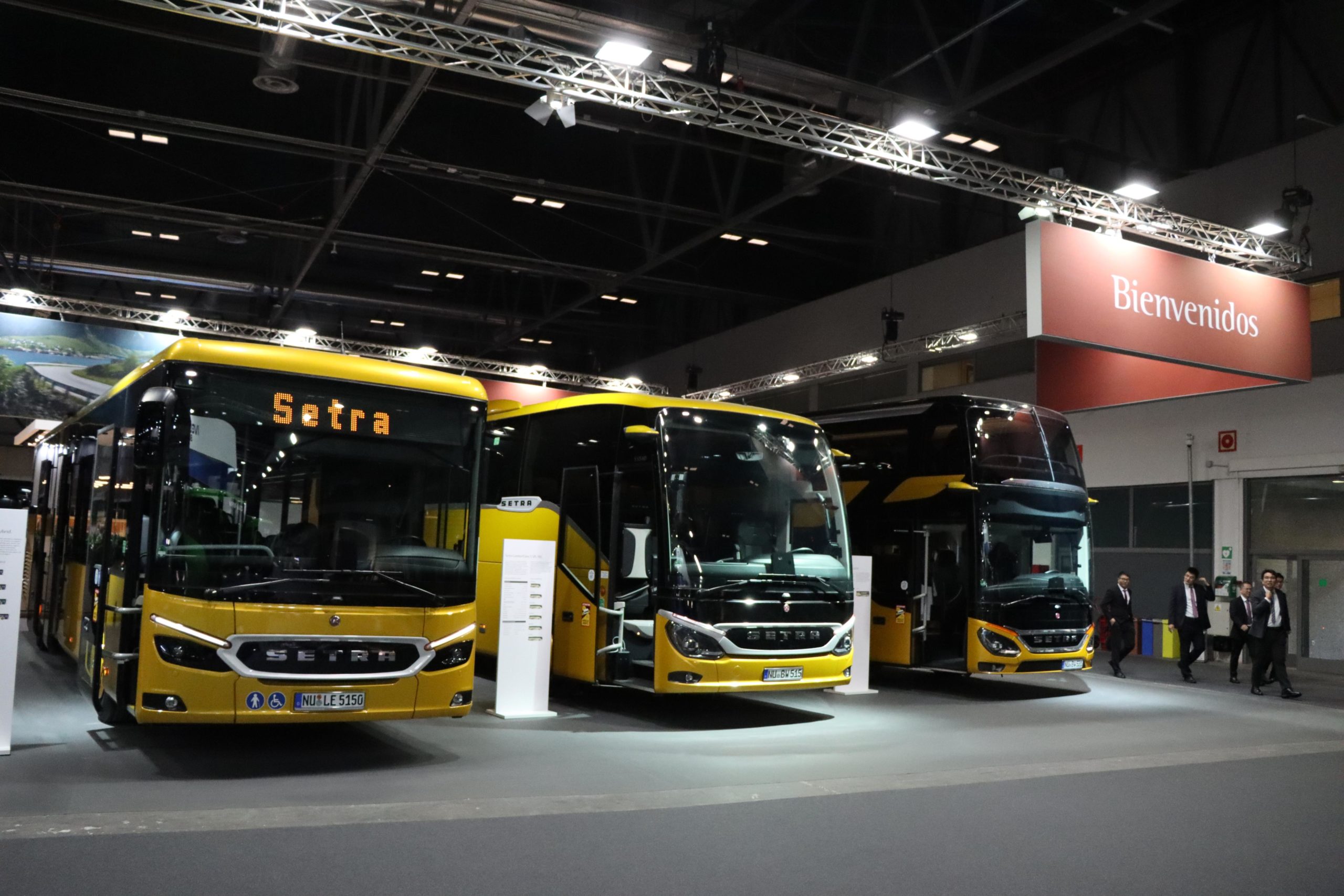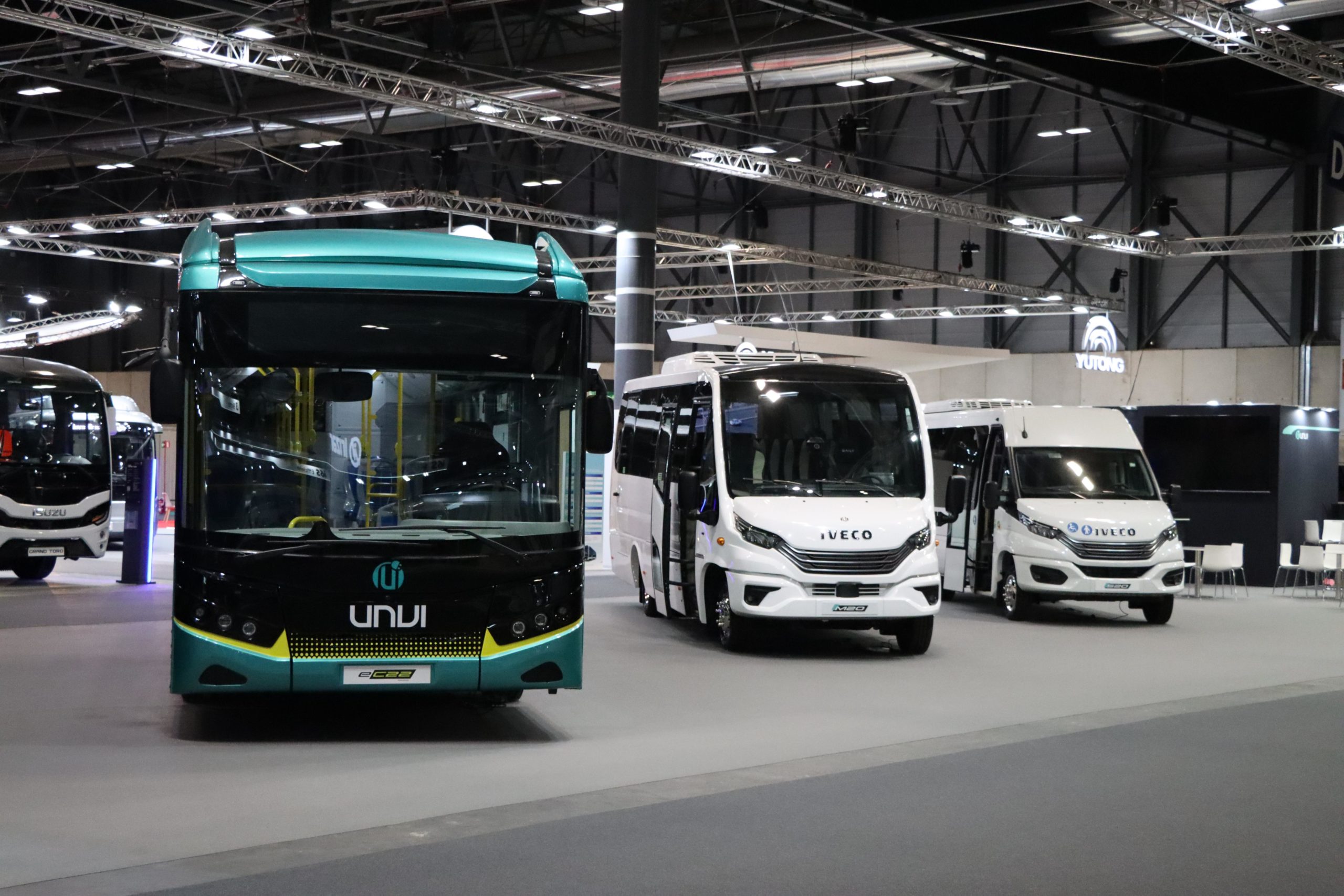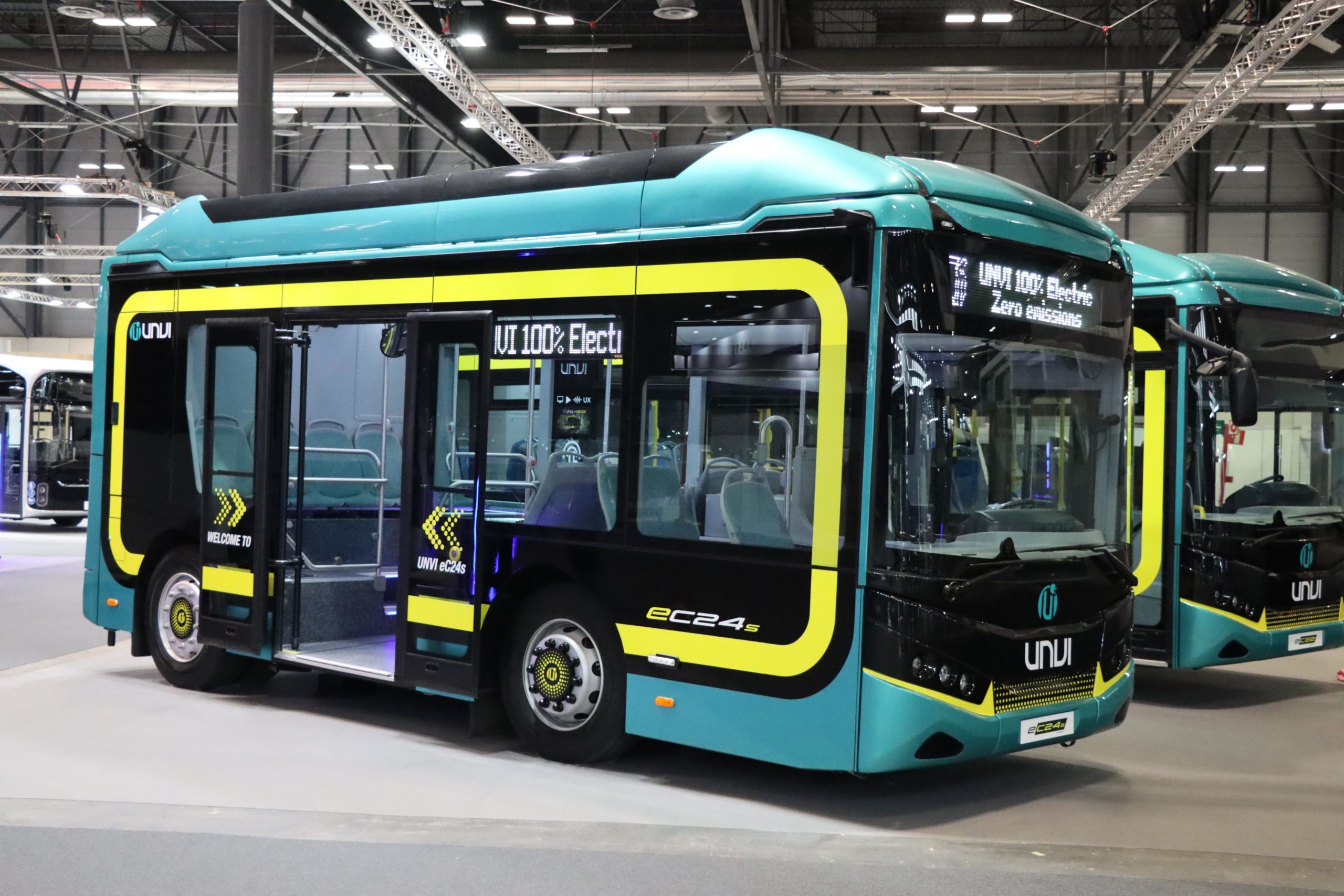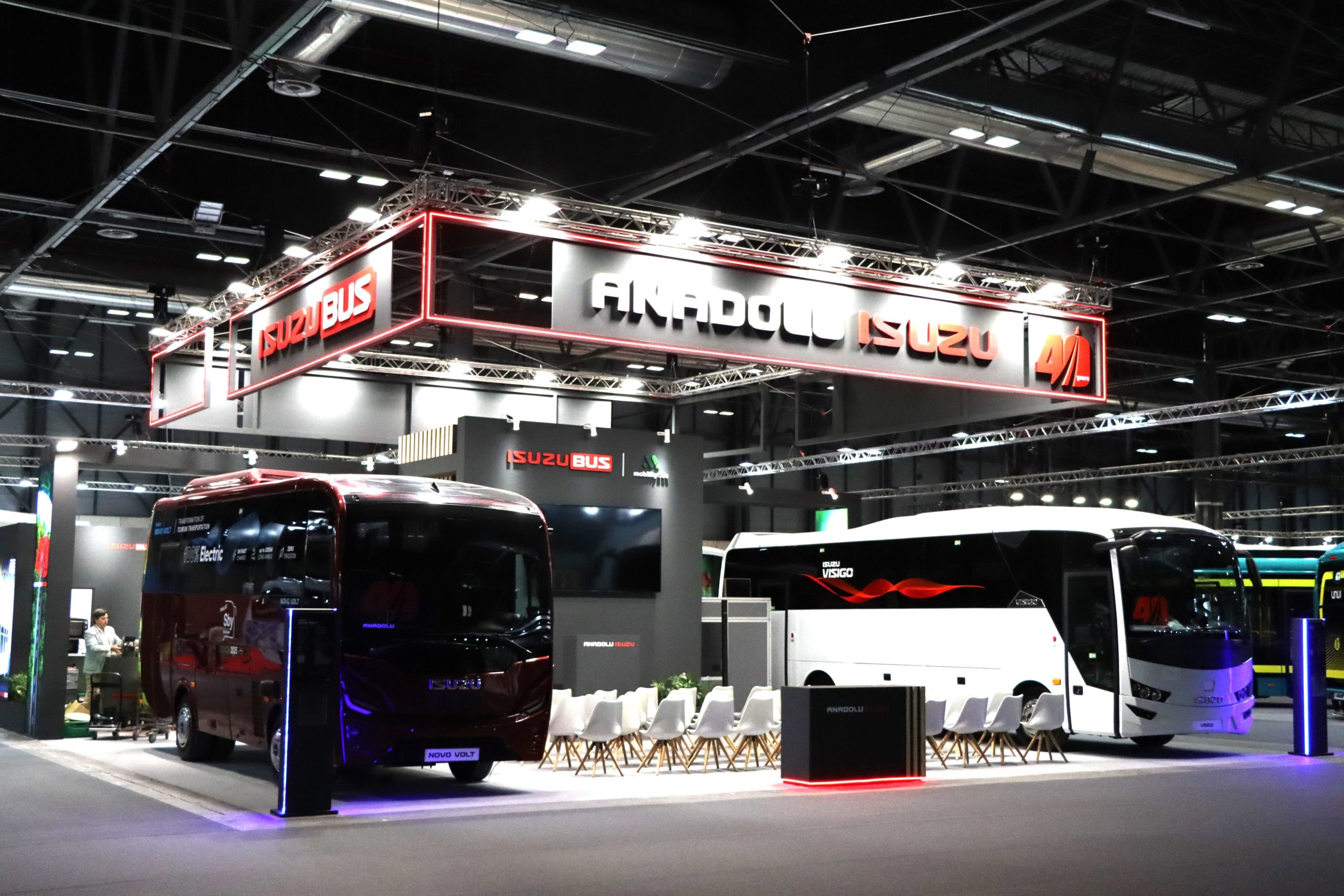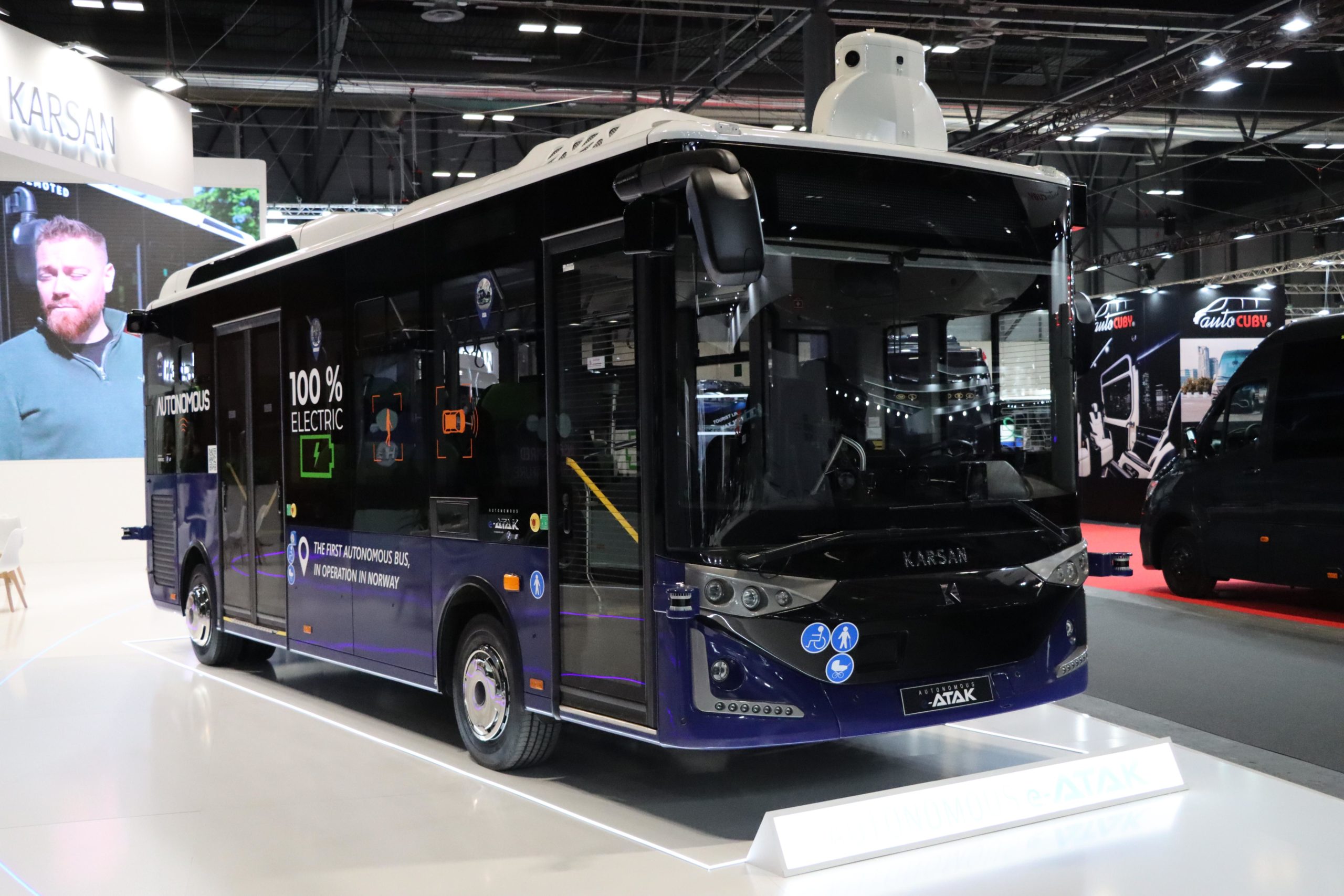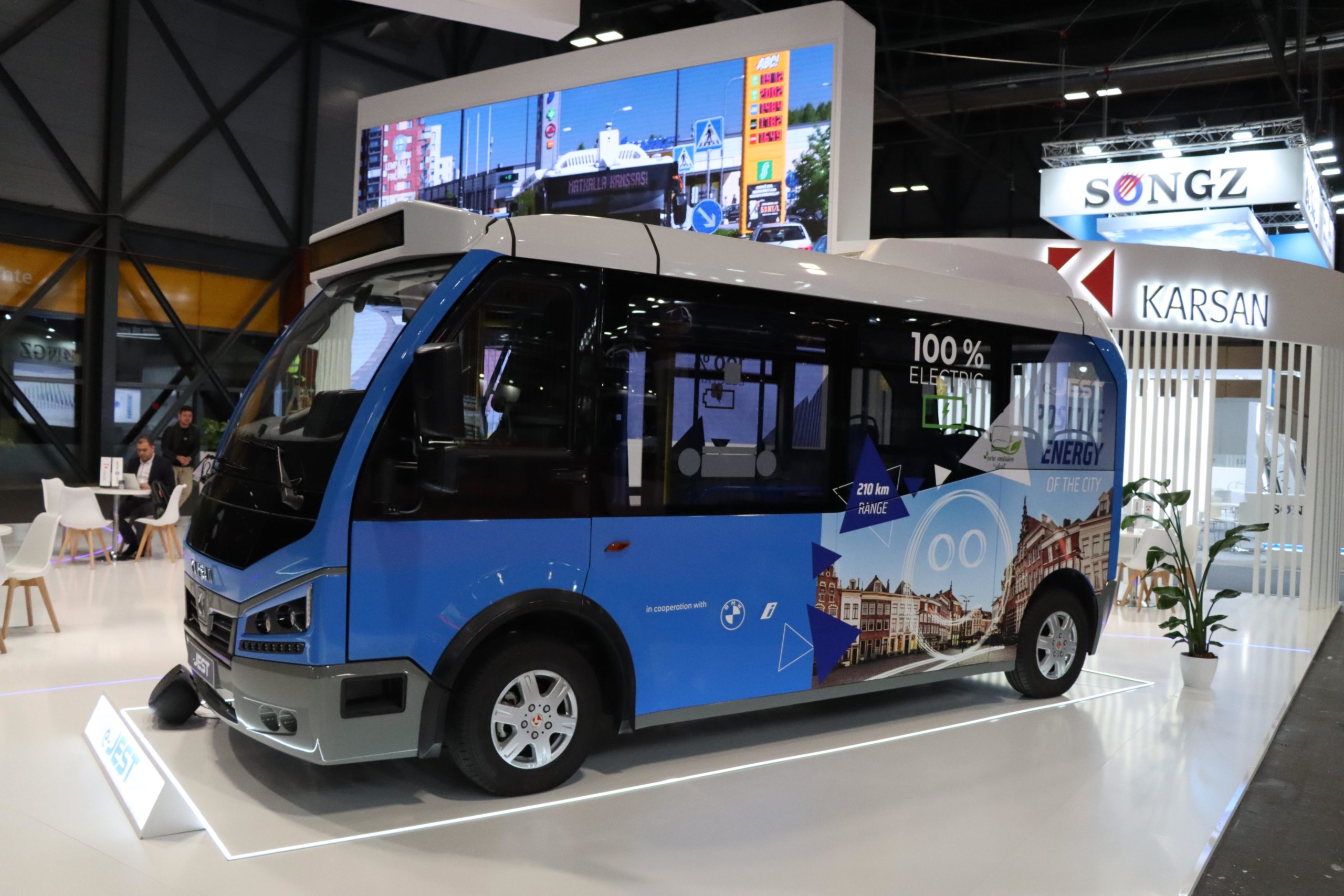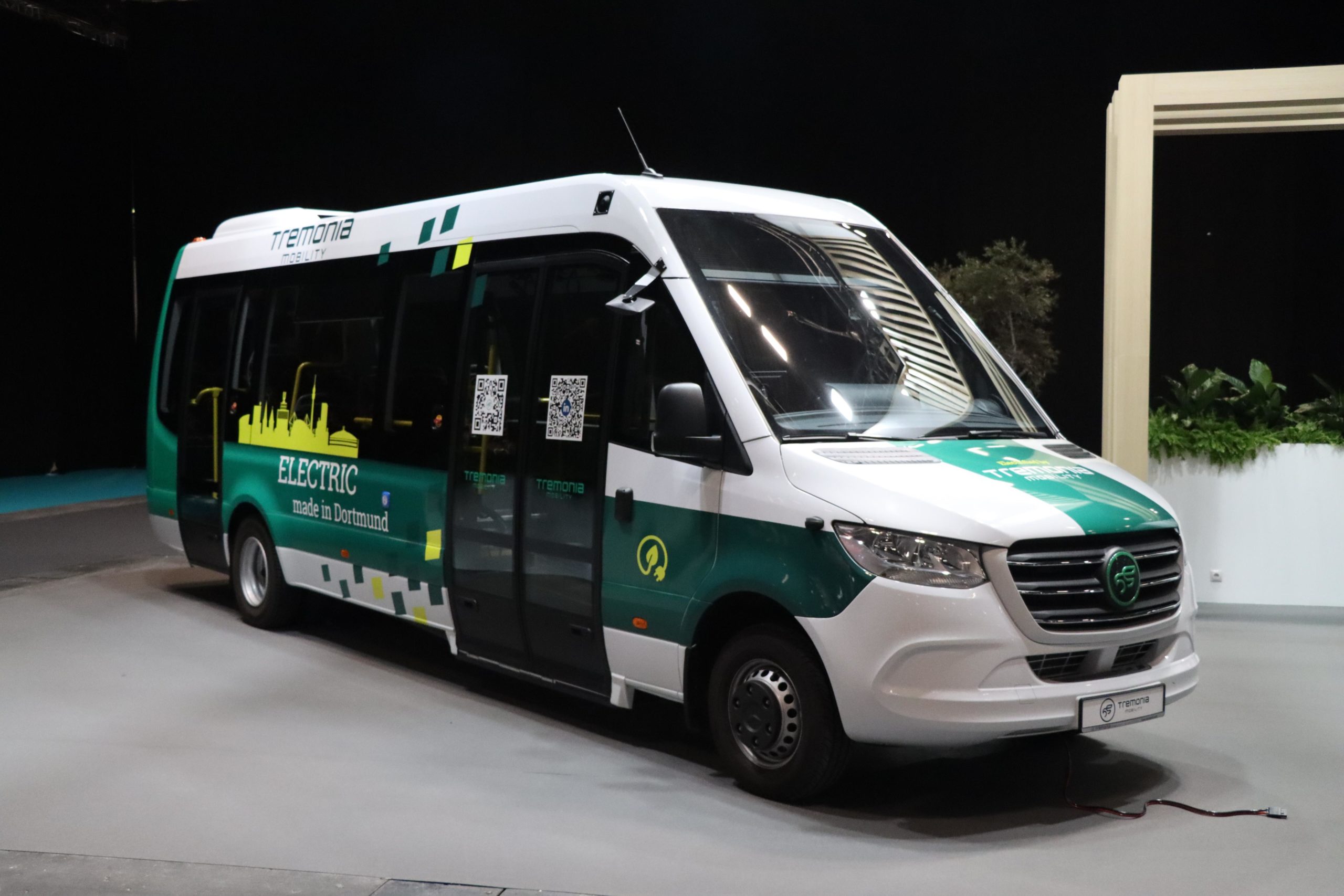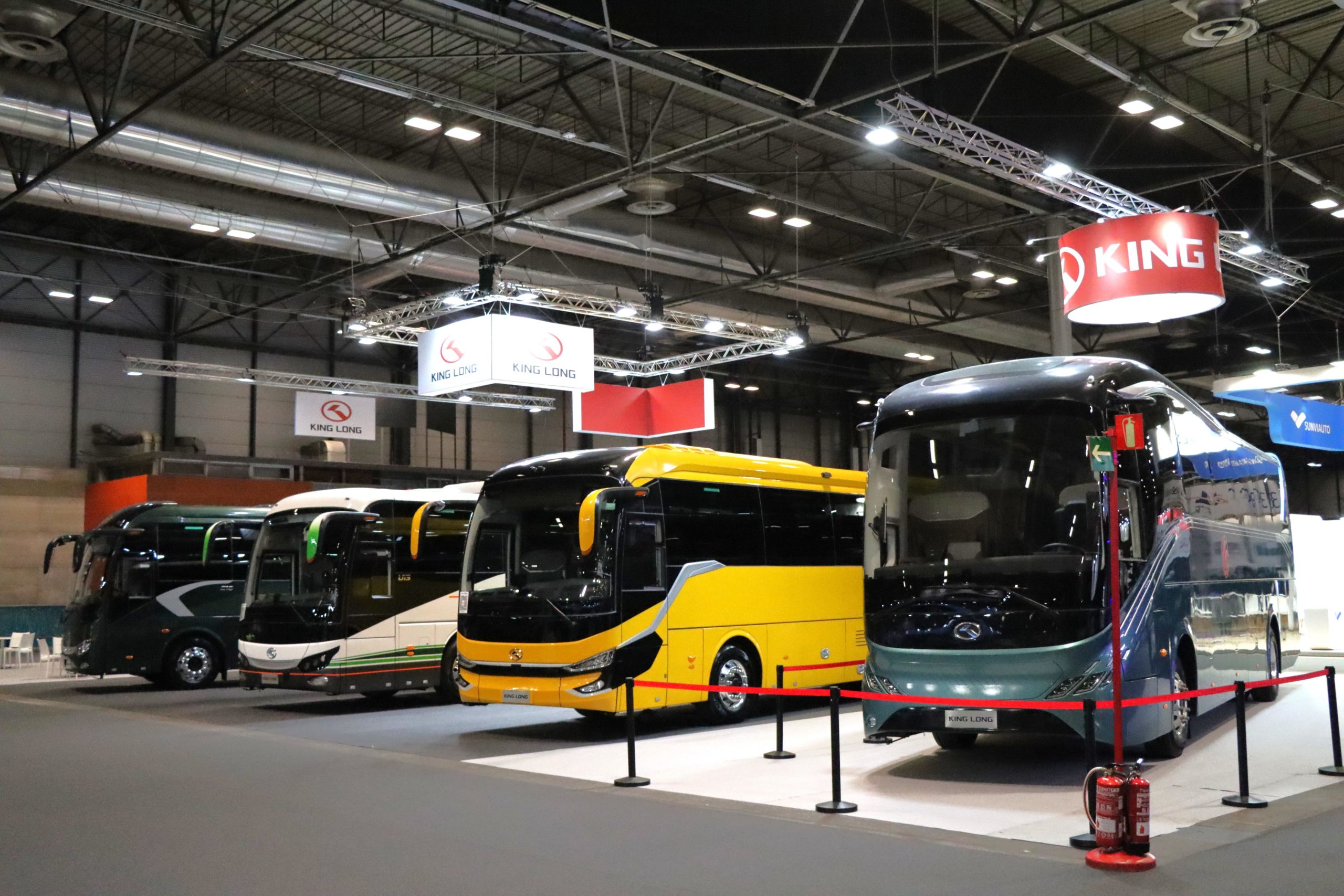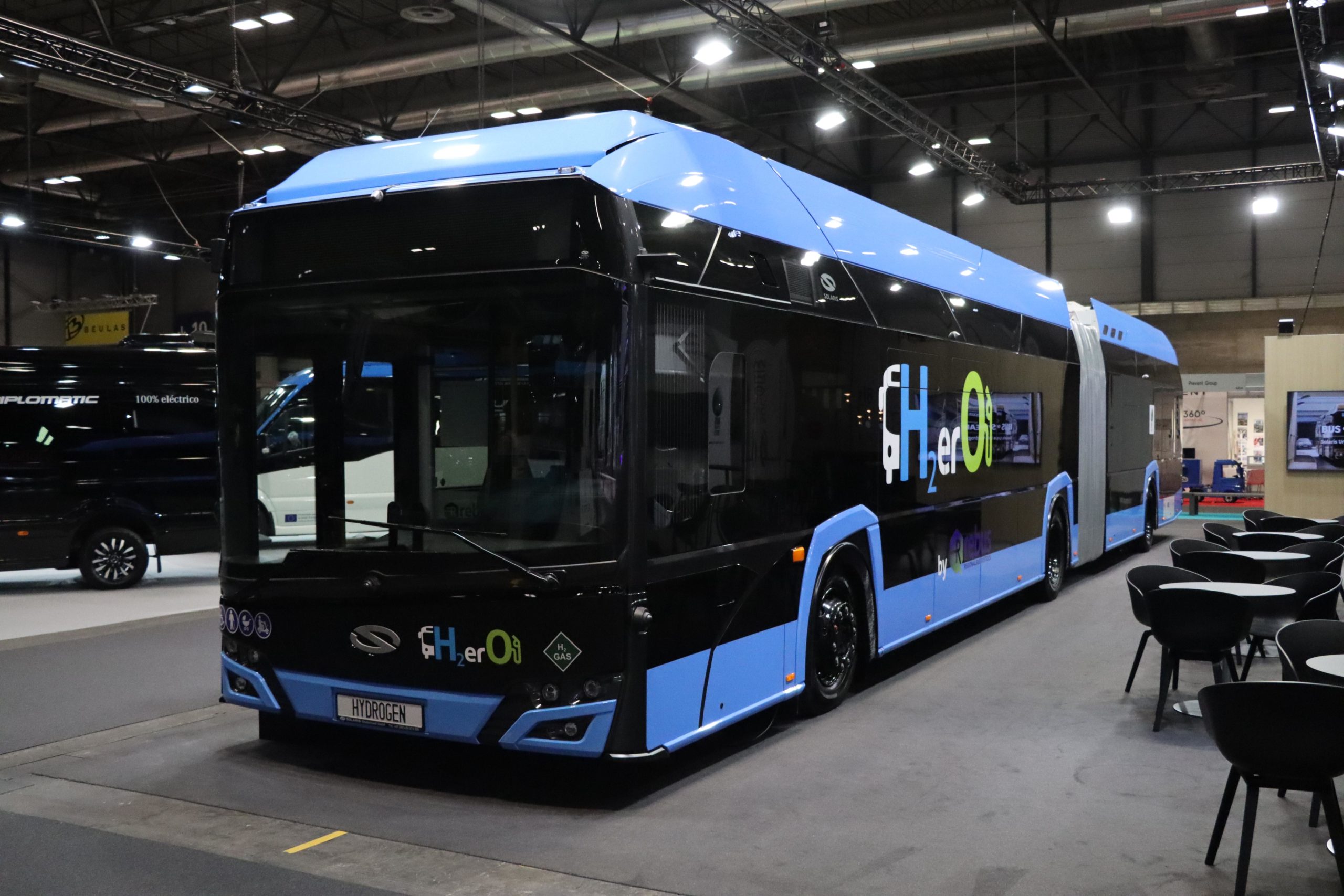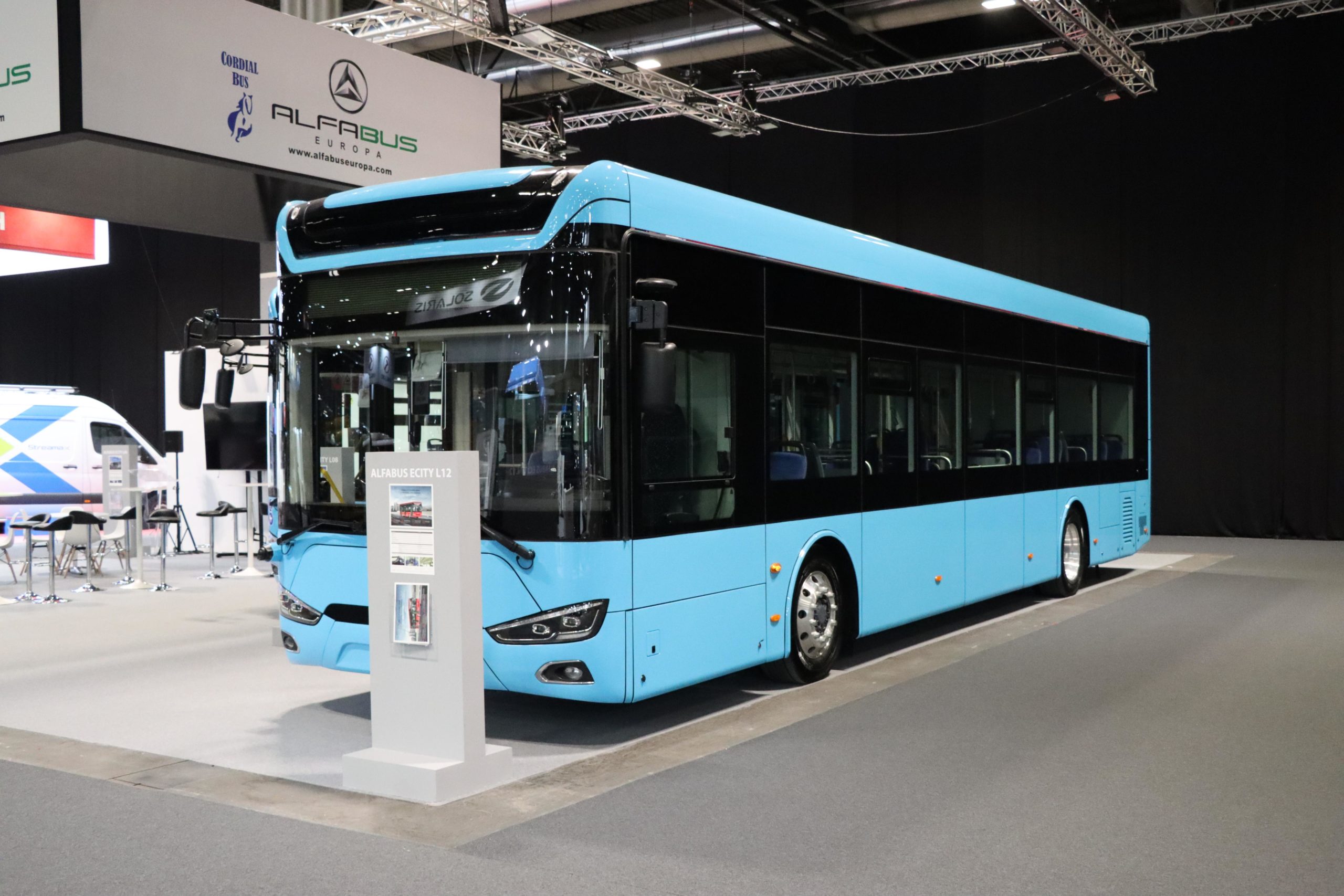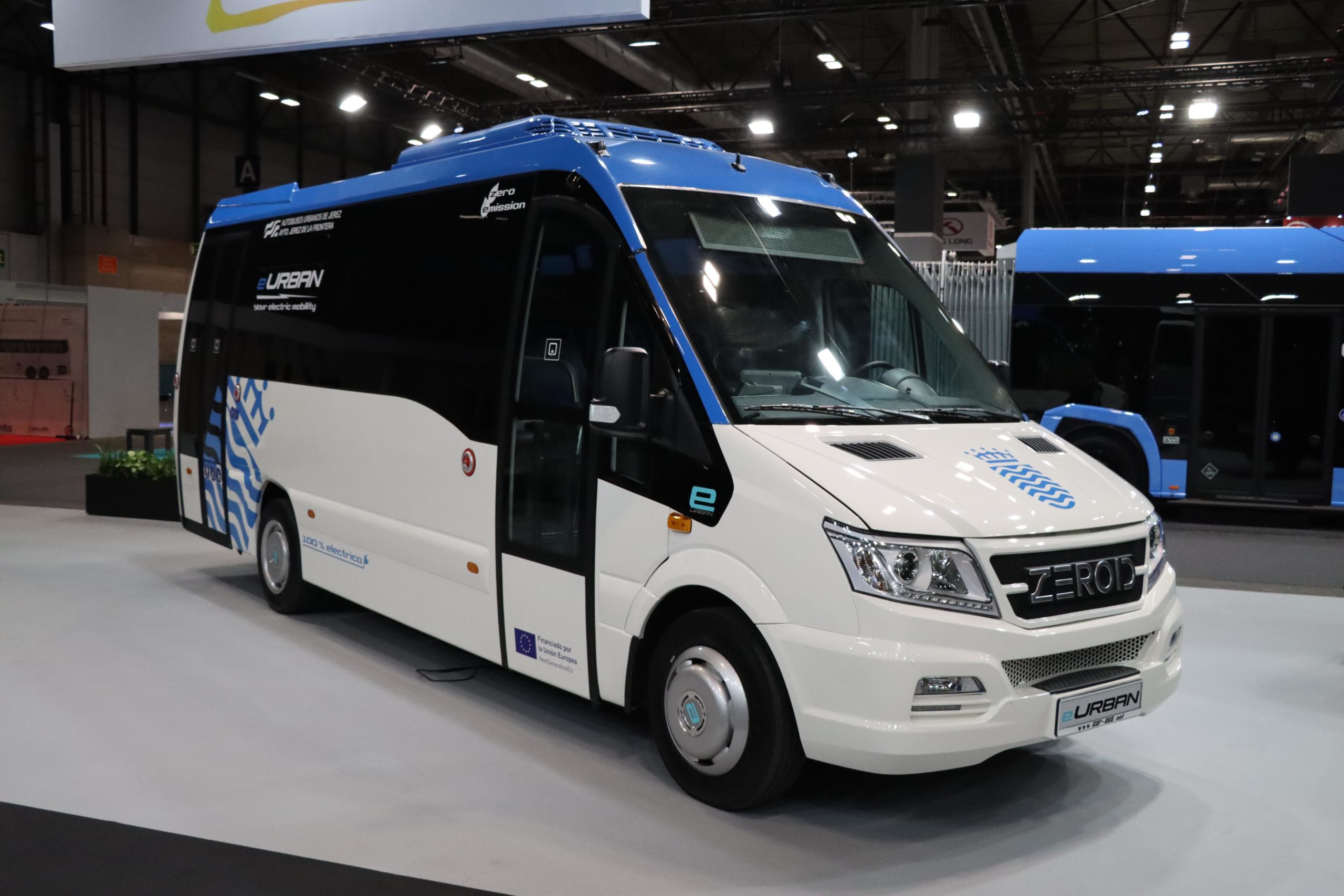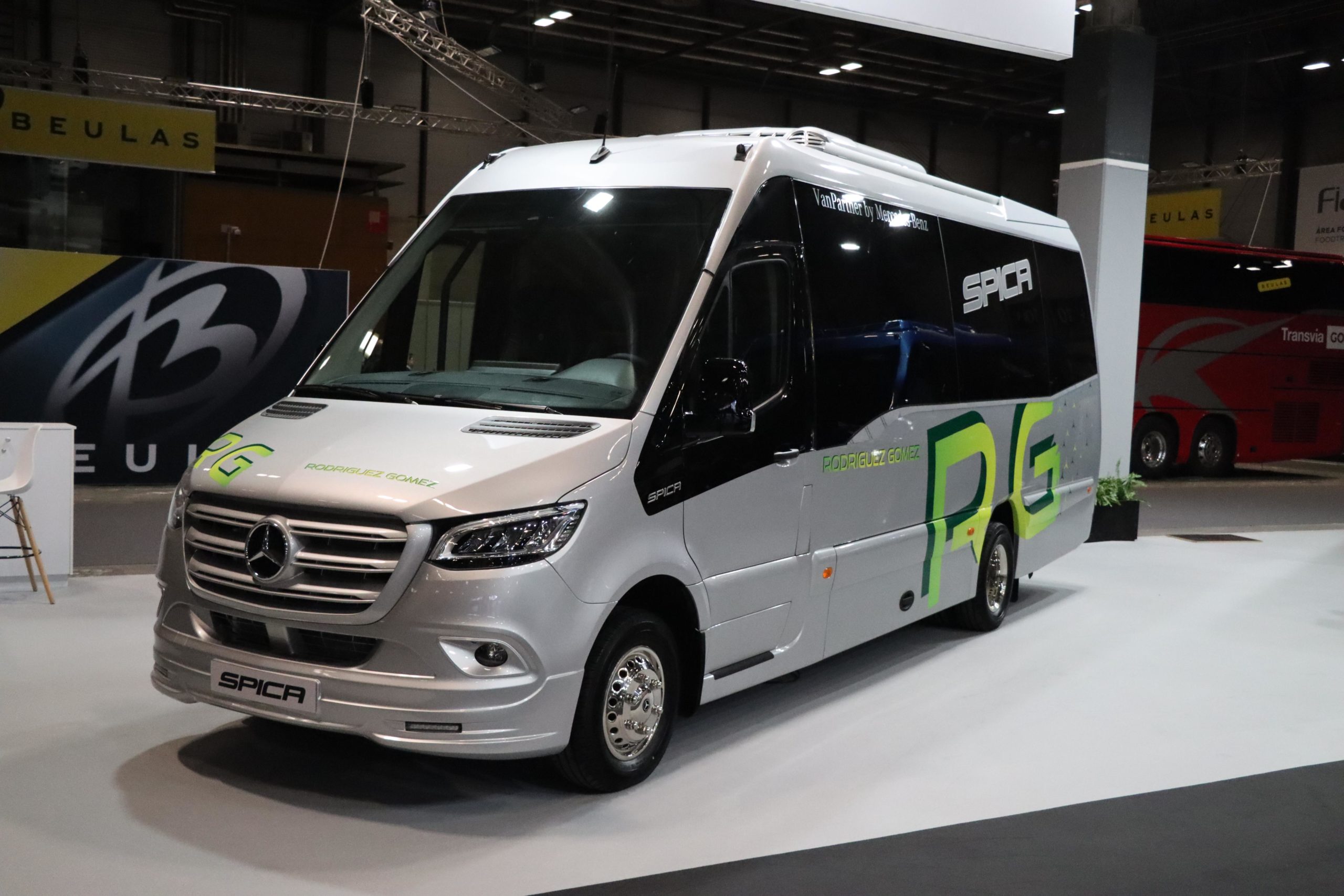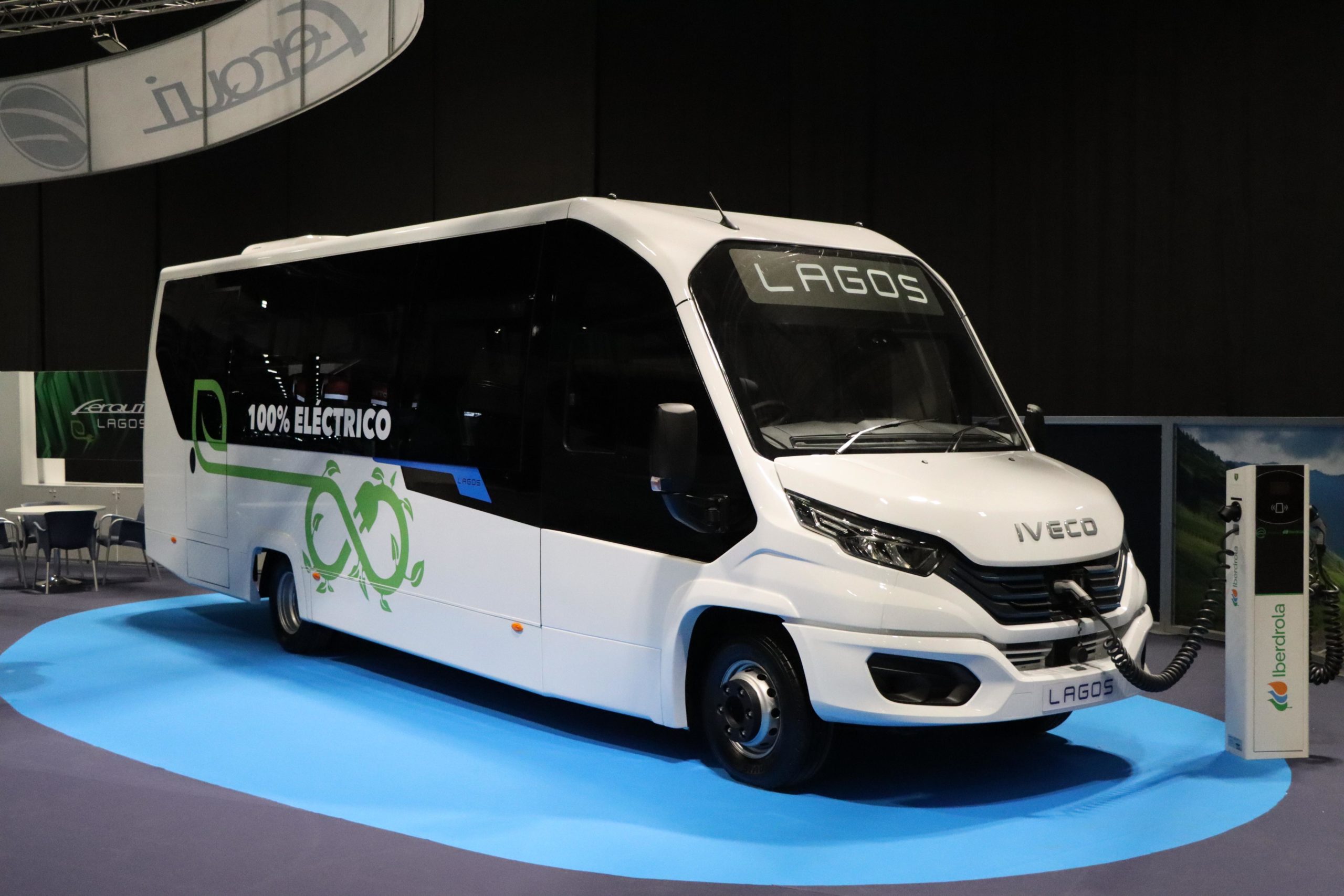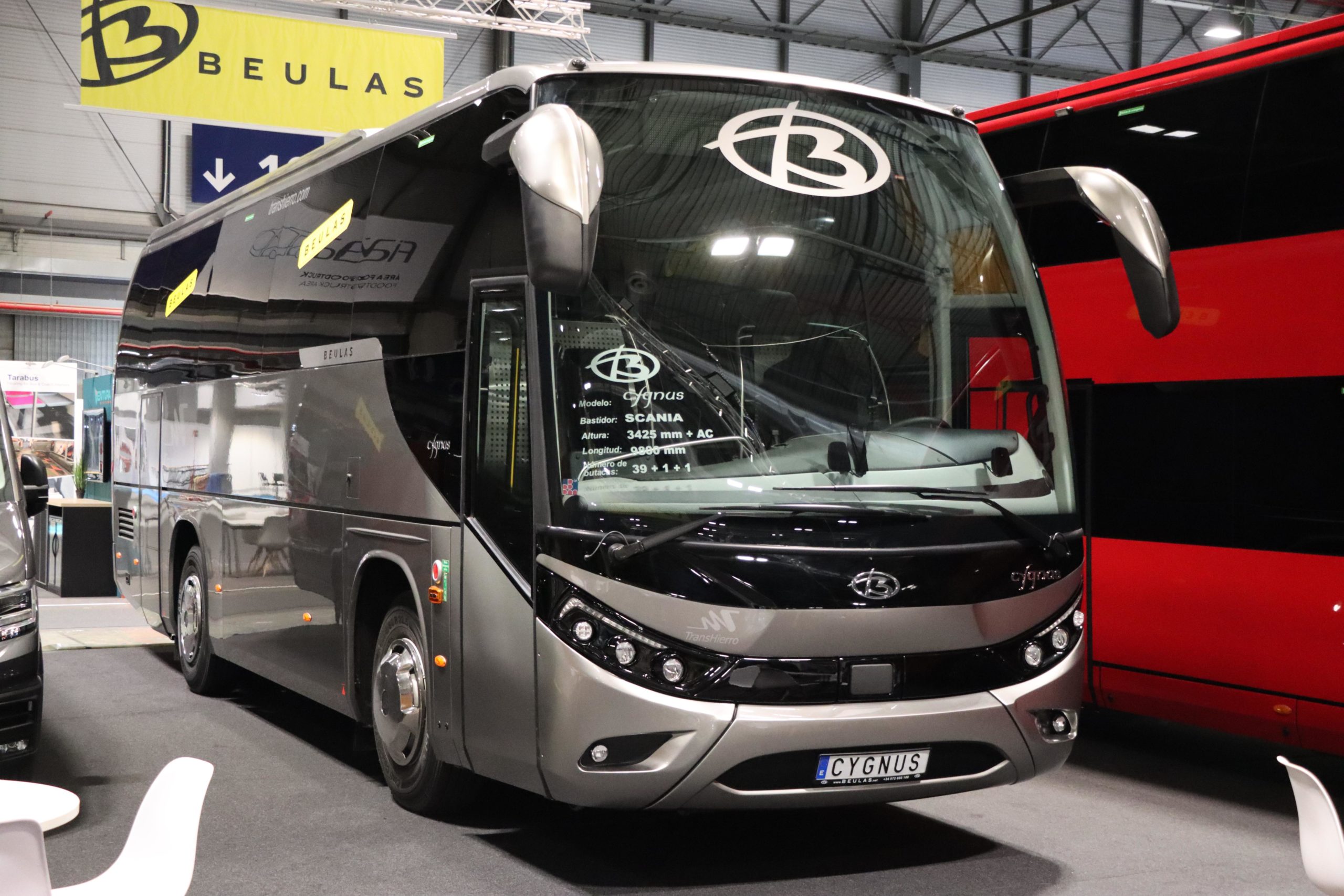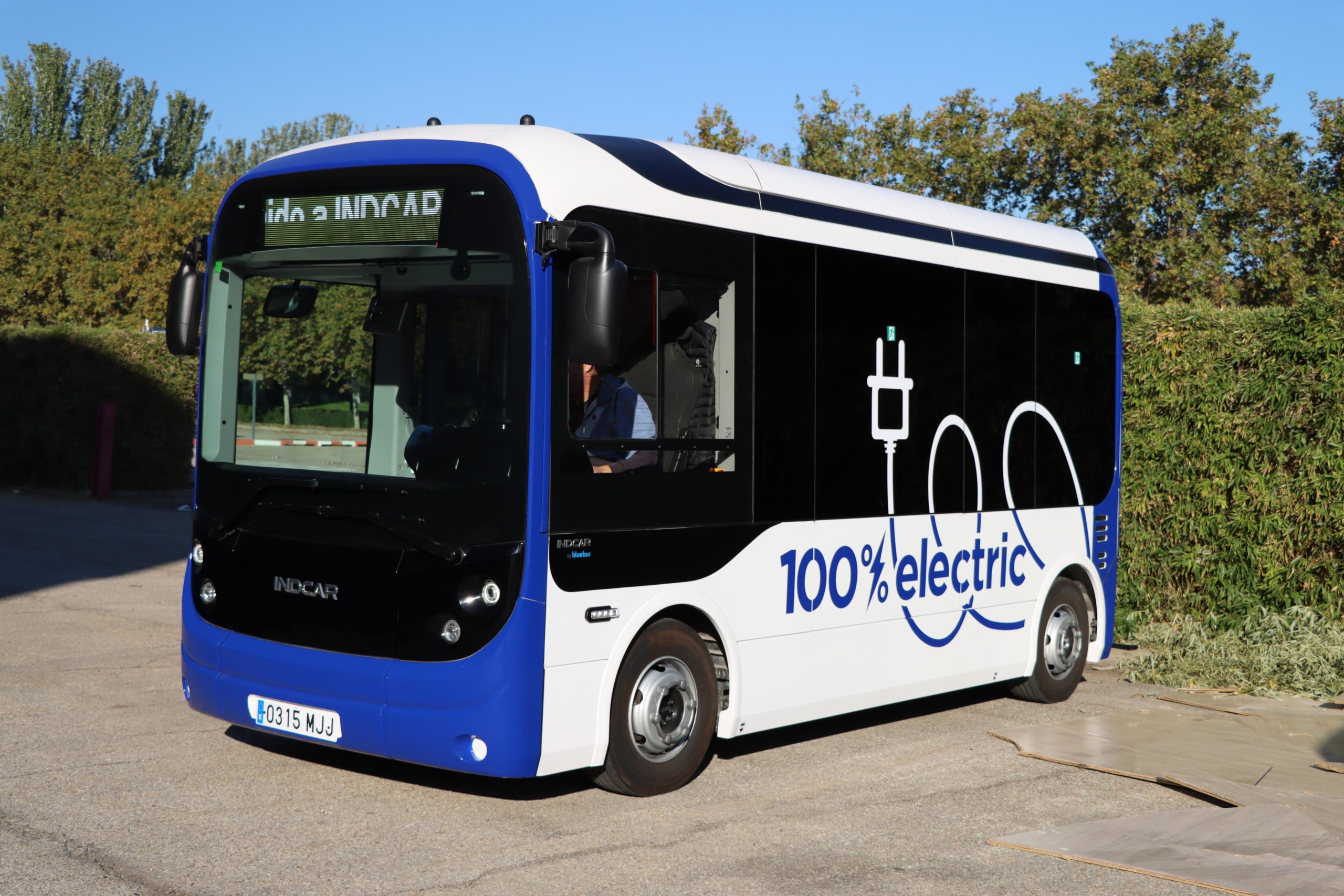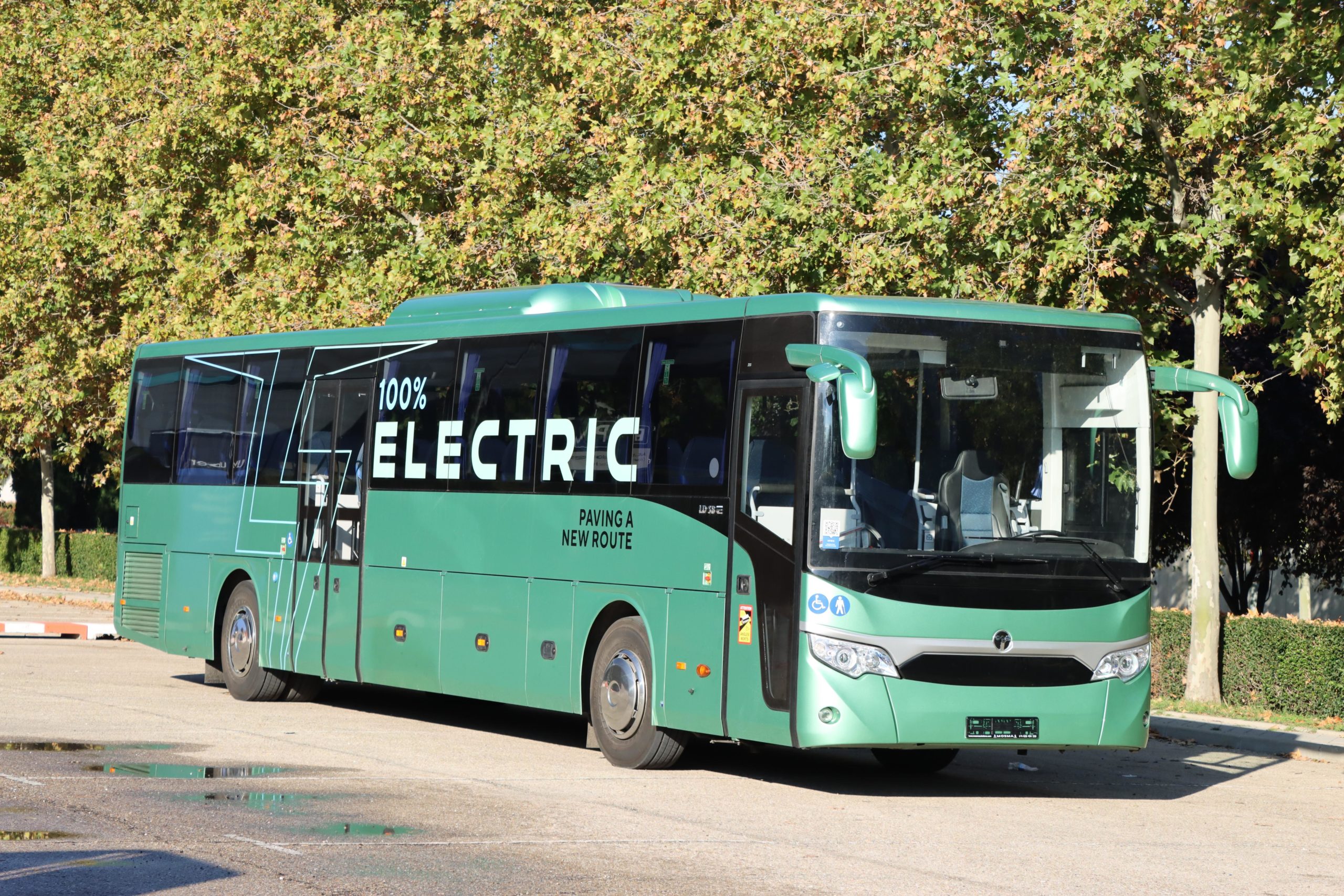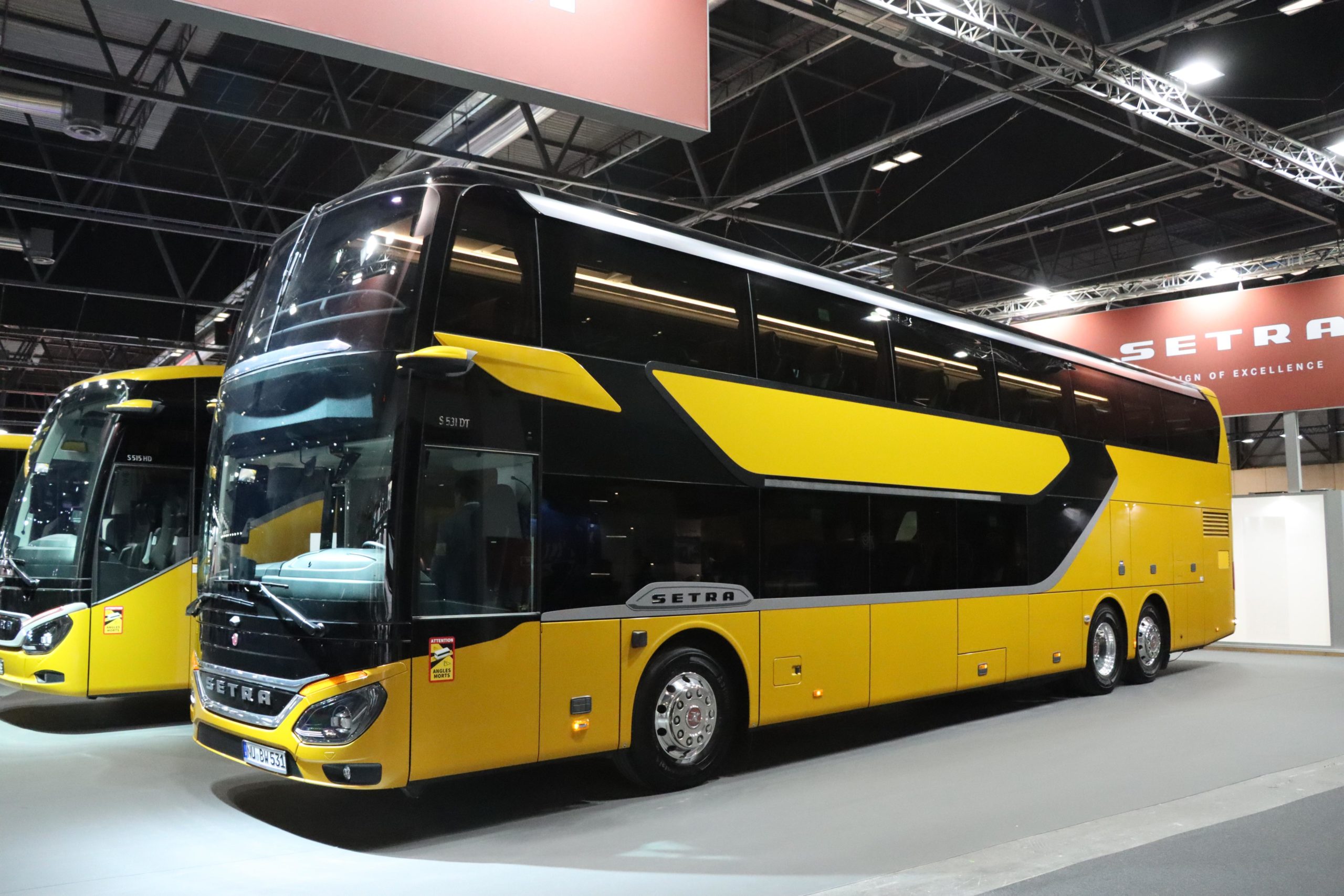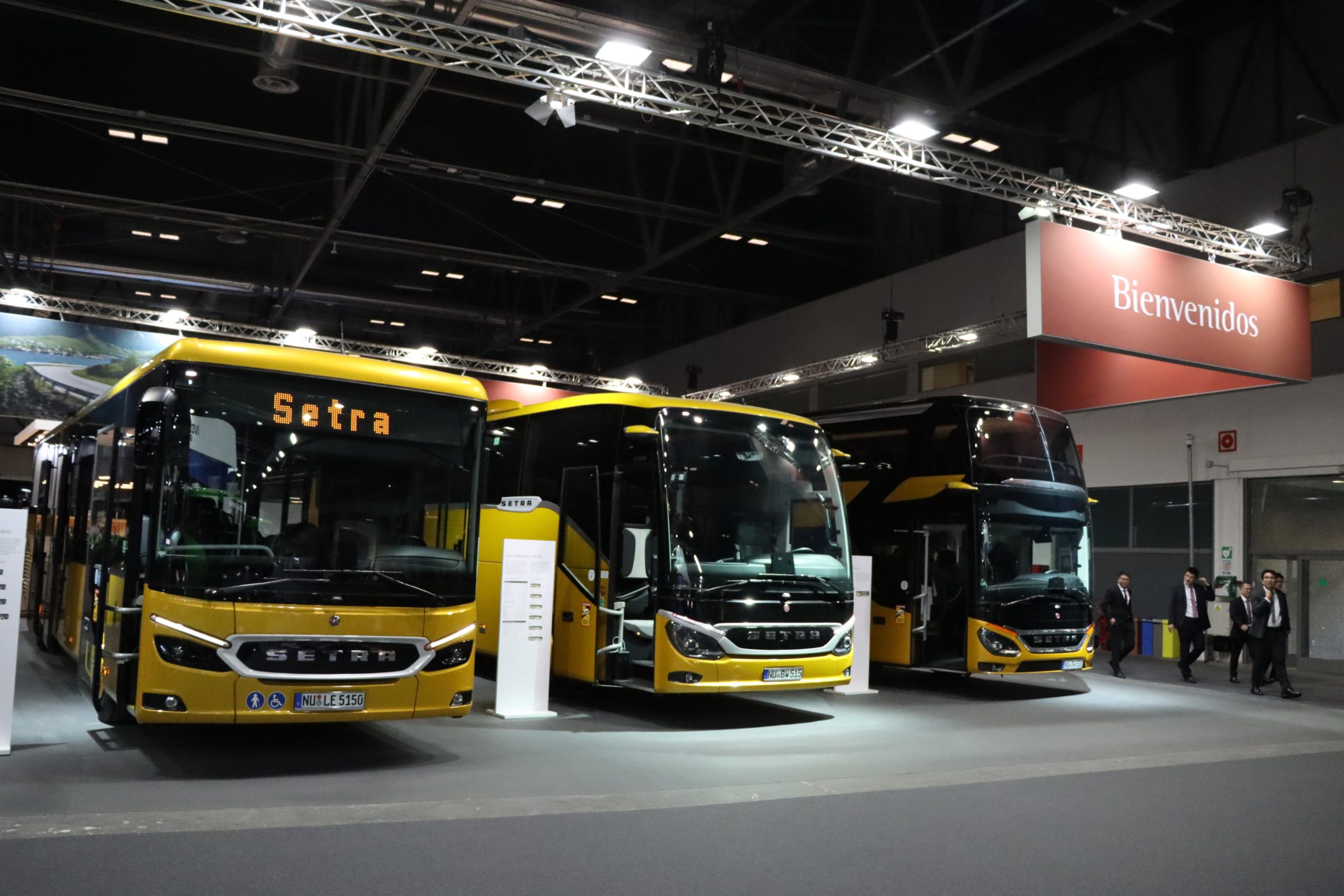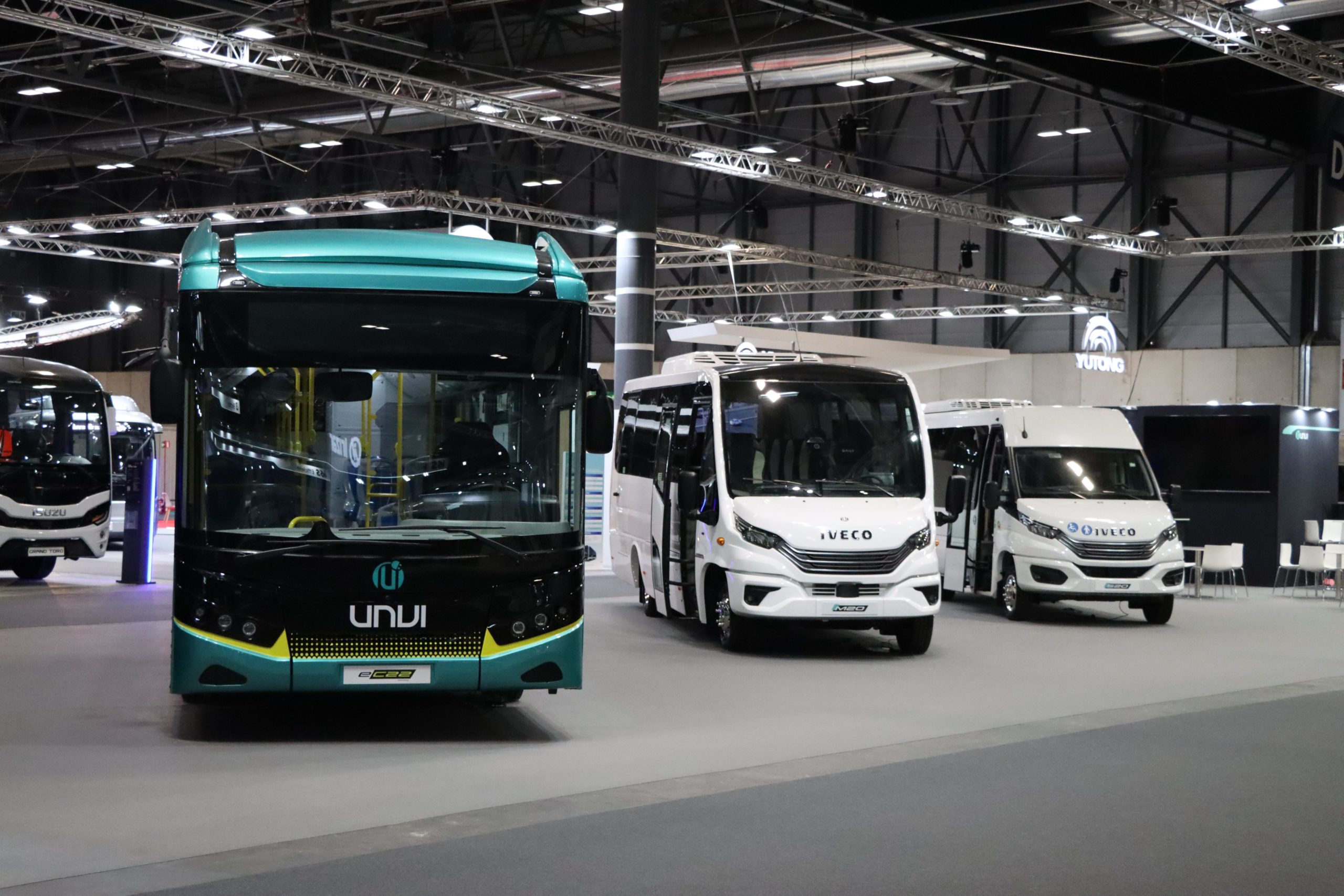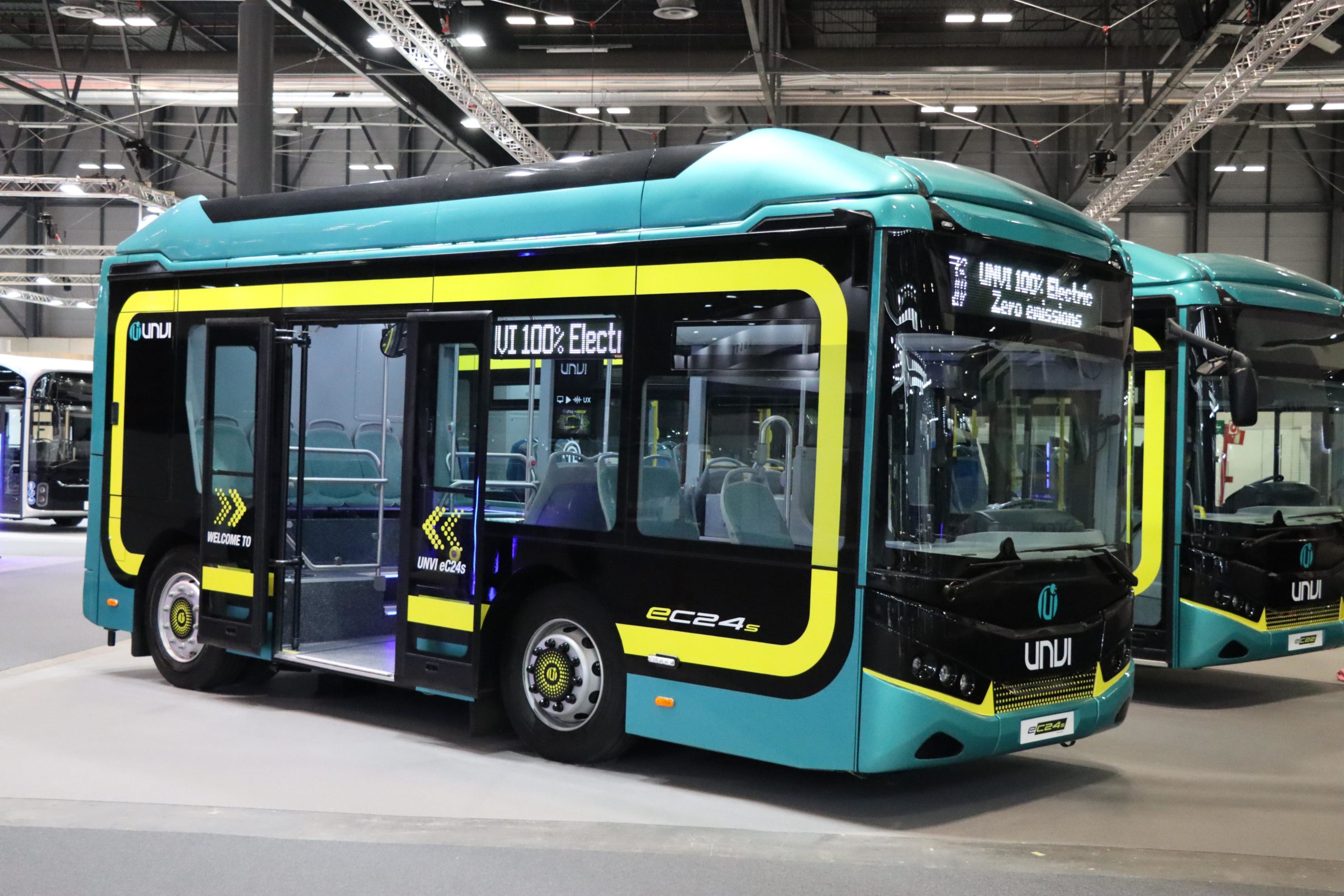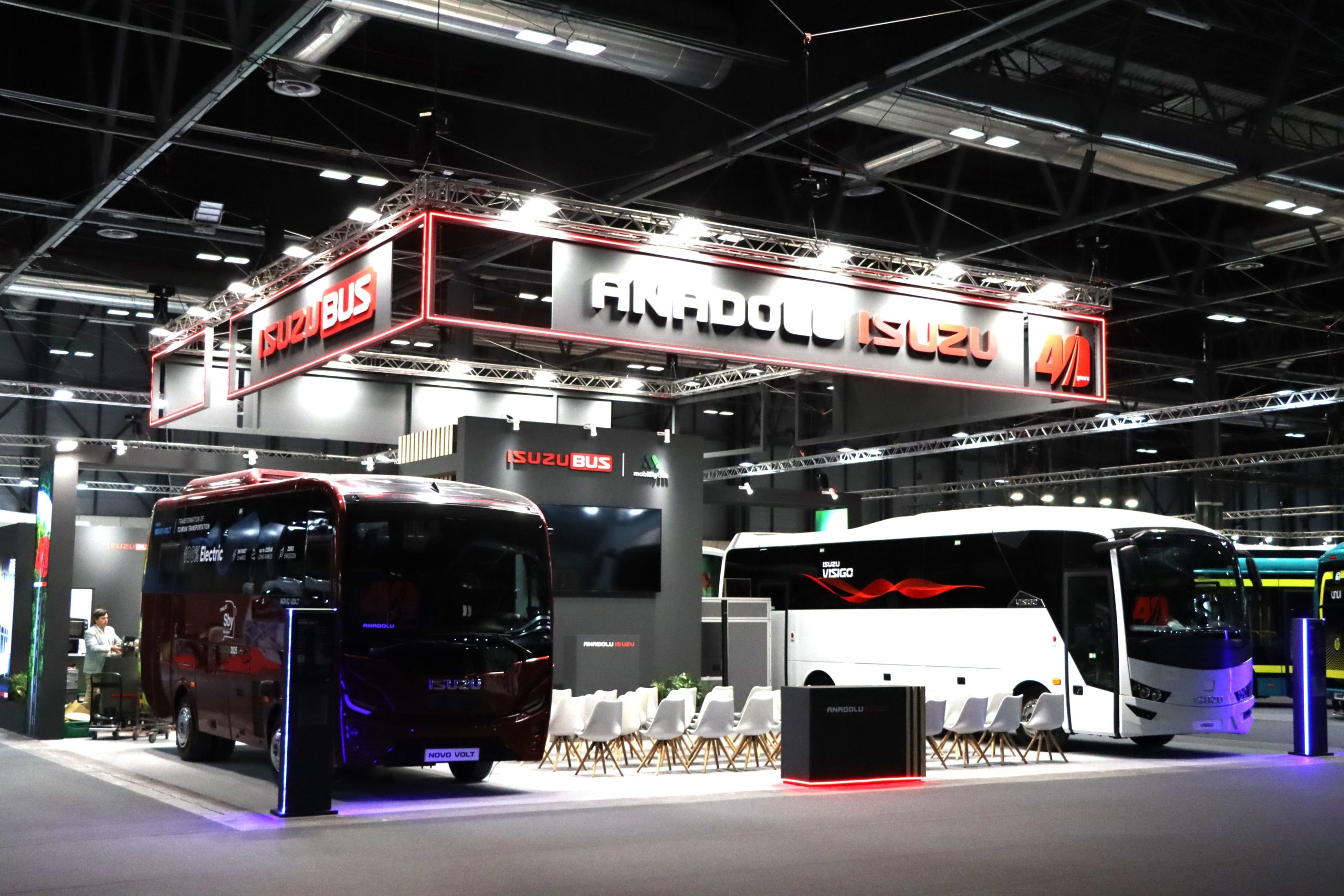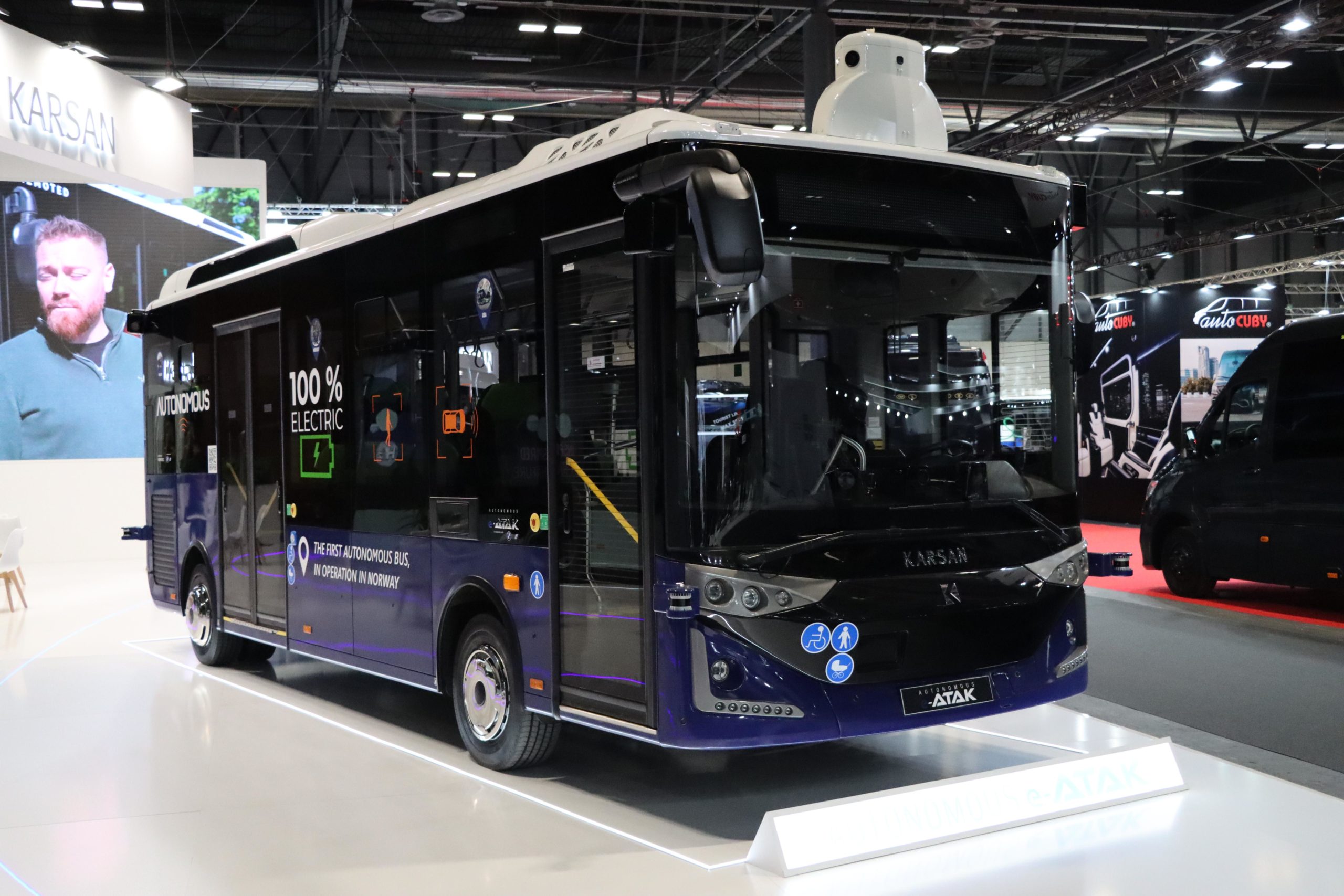FIAA Madrid 2024
Madrid exhibition shows off some of Europe’s best
Held every other year, the FIAA show in Madrid is a significant event on the European exhibition circuit and especially so for the Spanish and Portuguese markets, which have pretty much returned to pre-pandemic levels.
The latest edition, the 15th, was staged as usual at the IFEMA complex, one Metro stop away from Madrid airport, over the period 22 to 25 October. Dedicated completely to bus and coach manufacturers and supporting enterprises it was relatively well attended in terms of the number of vehicle exhibitors in a year when many chose not to participate at some other shows such as the IAA event in Hanover. In addition to the exhibition there is a programme of talks and presentations and a grand Gala night at which prestigious awards, notably the International Minibus of the Year trophy, the testing for which takes place in the local area in the day running up to the show.
Bus and Coach Buyer has reported on every previous edition and an overview of the many vehicles to be seen this year by Founding Editor Stuart Jones follows.
Irizar
Irizar’s presence in Spain is usually a major one and this year was no exception. Unveiled was the completely new i3 Electric, a deep windowed inter-urban bus, production of which will start in July 2025 at the Ormaiztegui plant. A Class II bus, it is 1,000kg lighter than its predecessor and designed as electric though it will later be offered on other platforms. As shown, it had a battery capacity of up to 528Kw and a 270kW motor, though the producers of these were not revealed. Both depot and opportunity charging options will be offered and there will be a choice of LFP and NMC battery options. Irizar UK’s Juan Irigoyen said that if there was demand it was possible to have the new i3 in the UK as all Irizar products were designed to be built in right-hand drive.
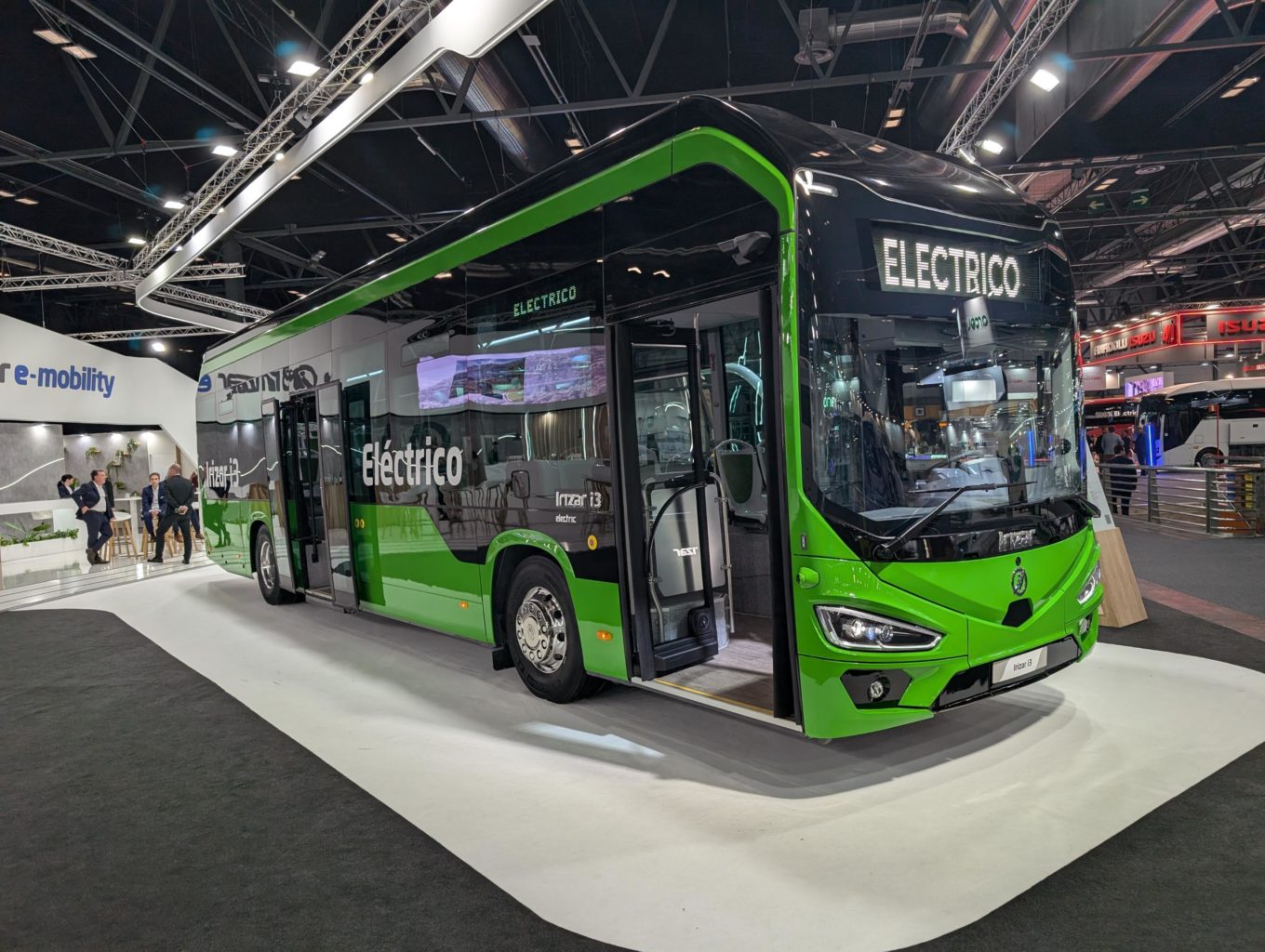
Unveiled was the completely new i3 Electric, a deep windowed inter-urban bus
Other exhibits included the i6S Efficient, which is already well established in the UK, and the i6S Hydrogen with its roof mounted hydrogen tanks giving it a range of 1,000km. Completing the line-up was a the distinctive ieTram with its big windows, wheel covers and on this example, see-through seats. Changes to the battery technology have increased the available range.
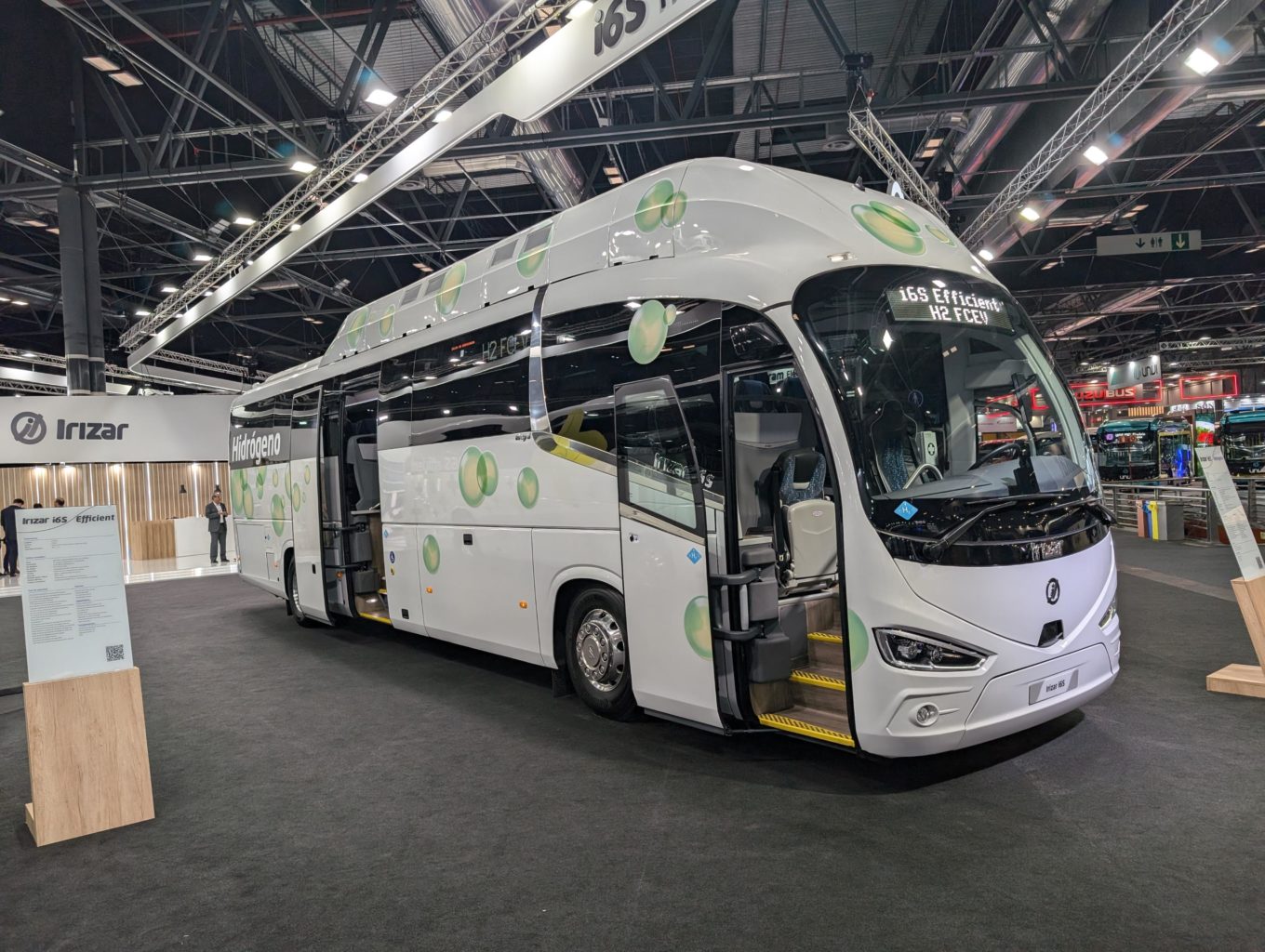
The i6S Hydrogen with its roof mounted hydrogen tanks give it a range of 1,000km
Head of Irizar Mobility, Jose Antonio Sola, confirmed that all of the 24 ieTrams for London are built and delivered and are expected to go into service soon on the 358 between Crystal Palace and Orpington. He also revealed that one of the 18 ieTrams ordered by Kent County Council for the Fastrack operation would appear at the NEC show next month. He described it as: “Probably one of the most beautiful we have delivered to date.”
Volvo
Volvo’s recent announcement that it is not to pursue the plan for Sunsundegui to produce its 9700 and 9900 models appears to have changed the future emphasis of its coach strategy if comments made during the press conference were accurately translated. Apparently, ‘Alliances are the new leadership’. He continued: “We will sell chassis to bodybuilders.”
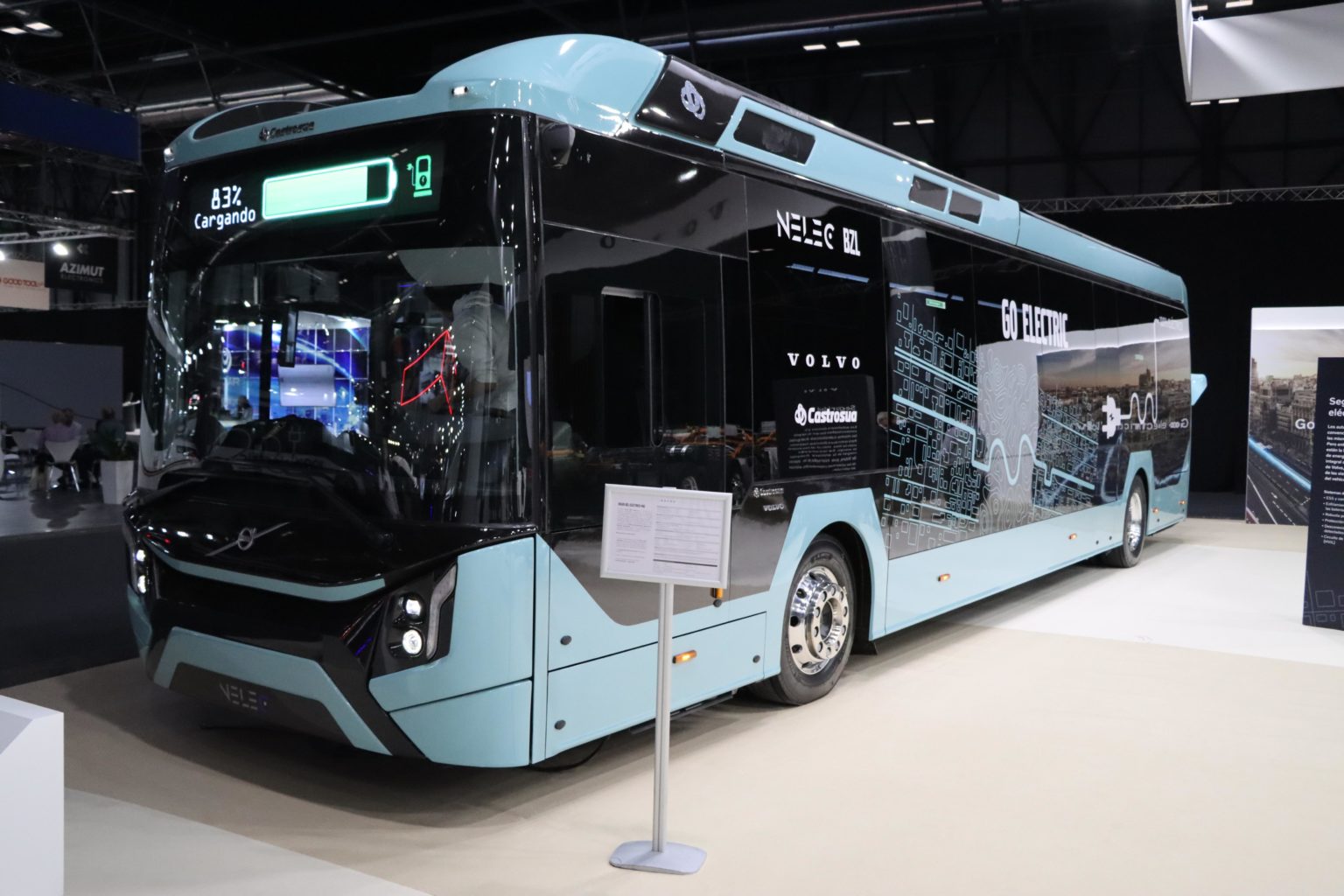
Volvo presented a BZL with an 11.815m Castrosua Nelec body
In Europe the strategy is to go with chassis and supply to bodybuilders’ though buying bodies from bodybuilders was also part of the plan. To this end it was revealed that MCV has recently completed the first 7900s built in Egypt and it is now working on examples of the 8900. There were no complete coaches shown though there was a B13R 4×2 with 460hp D13K engine and Volvo I-shift transmission displayed, which can be run on HVO (hydrogenated vegetable oil). Also present were a BZR low-entry electric chassis and a BZL with 11.815m Castrosua Nelec bus bodywork.
Iveco
With 3,800 employees at plants in Valladollid (Daily) and Madrid (trucks), Iveco is an important player in Spain and both the stand and press statements stressed that the business is a full line player, offering a complete range of propulsion technologies. This was reflected in the products on display which included the 2.33m wide E-Way which is offered at 9.5m and 10.7m as well as at full width at 12m and 18m. The E-Way H2 hydrogen bus features a 110kW fuel cell, 15-minute charging and a 400km range. There are no subsidies in Spain for hydrogen at present but they are anticipated next year. Over 50% of the inter-city Crossway models sold are now hybrids and as well as one of these, a Crossway LE electric also appeared. Iveco has supplied the vehicles for the rock band Metallica’s latest European tour including two Evadys coaches and an electric Daily. An Evadys and the Daily were displayed in a matt grey livery with lurid yellow Metallica emblem and, well, I hope the look doesn’t catch on.
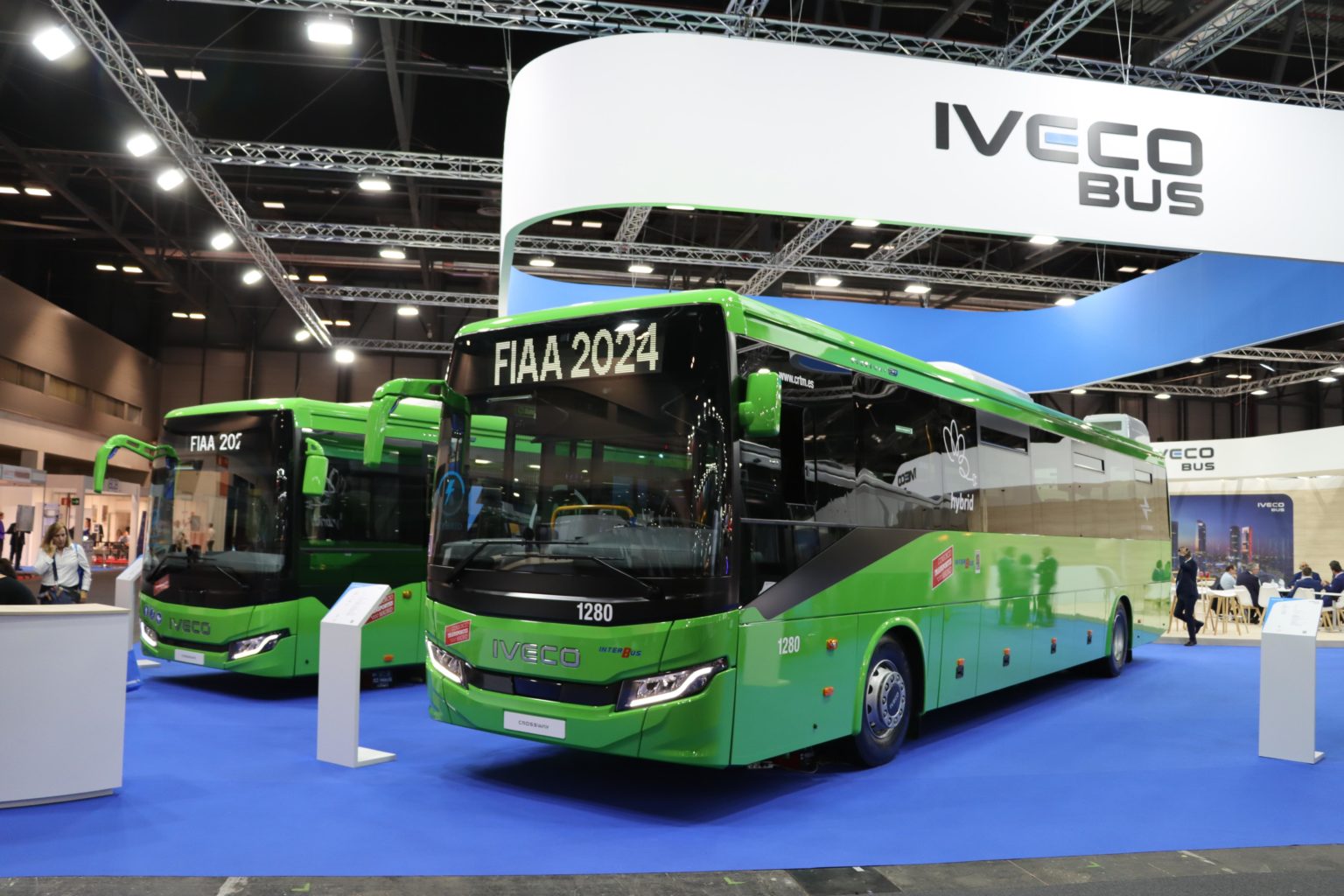
Two Iveco Crossways on the Iveco stand
Daimler
Daimler Trucks stand encompassed the Mercedes-Benz and Setra brands. Representing the latter were three vehicles in bold yellow liveries: the double deck S531DT, the S515HD and the low entry S515LE Hybrid. For Mercedes-Benz there were: a 13.115m Tourismo 16RHD/2 with 48 Travel Star Eco recliners, OM470 EuroVIE315kW engine and EcoLife 2 gearbox alongside a 12.18m Intouro with OM936 engine, ZF EcoLife transmission and 51 Inter Star Eco seats. An un-bodied OC 500RF1946 chassis with 335Kw OM470 unit matched to a Powershift 250-8 transmission and the latest E Citaro Fuel Cell shown as a 12m bus completed the display.
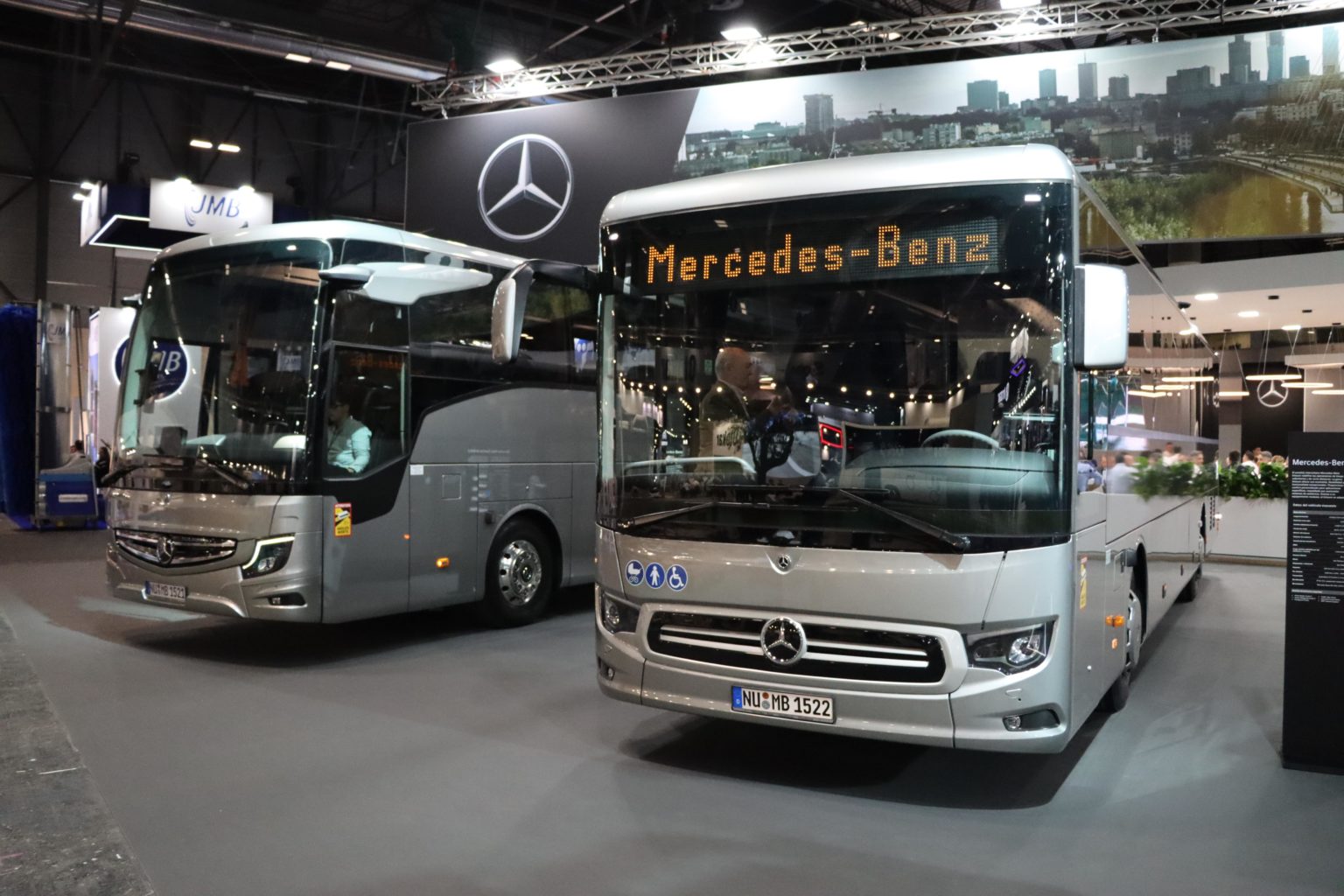
A Mercedes-Benz Tourismo and Intouro were among the vehicles displayed by Daimler
Solaris
Now Spanish owned by CAF, though the production facilities all remain in Poland, Solaris showed only one vehicle, the Urbino 18 Hydrogen articulated bus that earlier this year was chosen as the International Bus of the Year 2025. One of a batch for a German customer, the model features a modular drive system, roof mounted batteries, a range of 600km and a capacity of up to 160 people. Speaking at a press conference, CEO of Solaris Bus & Coach, Javier Iriarte, said that in 2023 Solaris had been number three in terms of European deliveries, number two (behind MAN) in electric sales and number one in total zero-emissions. In 2023 82% of production had been low emission, including electric, hydrogen and trolleybuses.
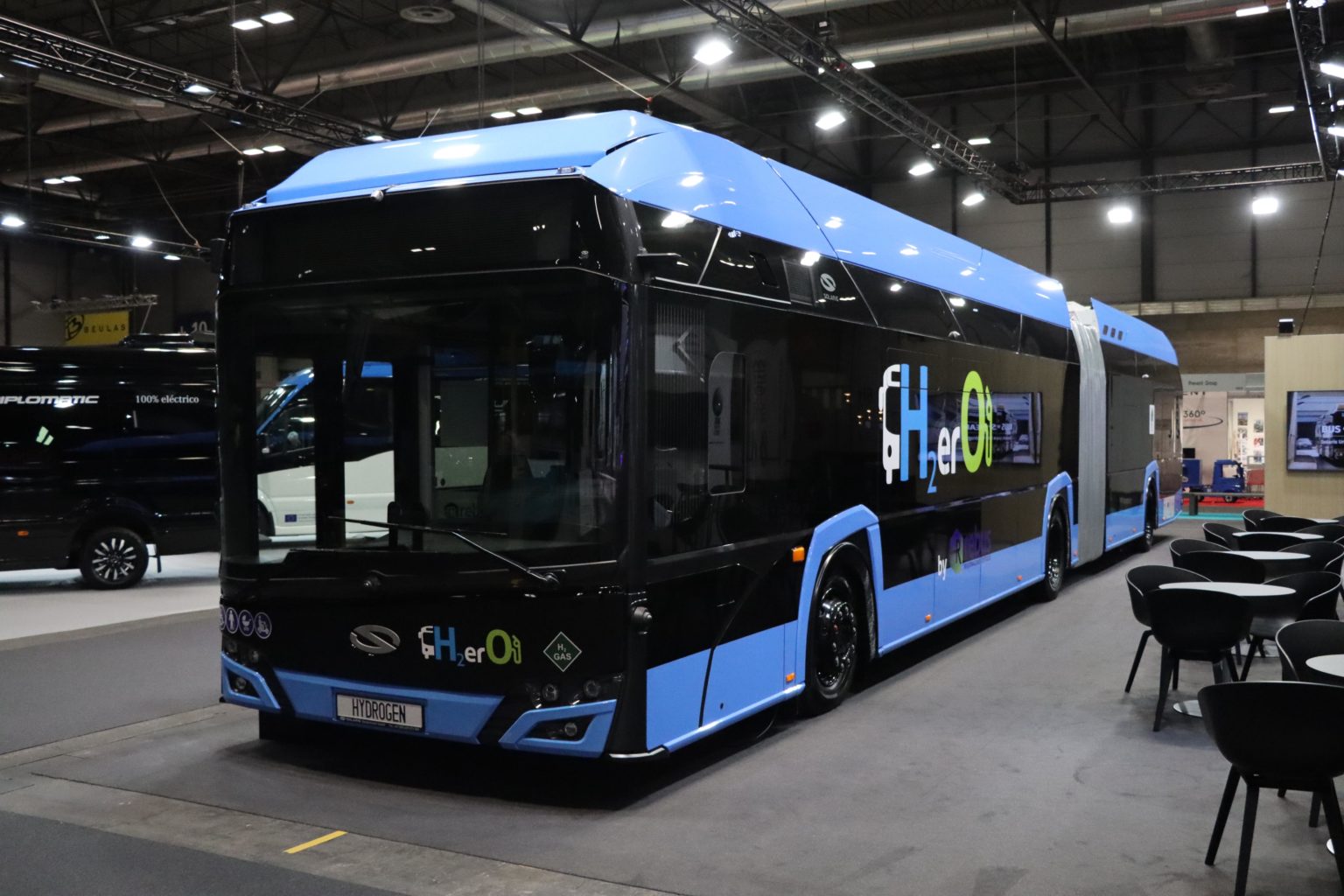
Solaris showed only one vehicle, the Urbino 18 Hydrogen articulated bus that earlier this year was chosen as the International Bus of the Year 2025
Beulas
Well-known in the UK and now represented by BASE, and in Ireland by Noones, Beulas showed the breadth of their capabilities with three contrasting exhibits. New is the MAN TGE based Kala 7.8m minibus which has a new frame added enabling large windows to be fitted, a large rear luggage area, 15kW Safkar air conditioning, and 16-22 seats (16 as shown). It is only available in the Spanish market at present. Next to it was a 9.8m long, 3.425m high Cygnus coach on a Scania chassis with 39+1+1 seats. Dwarfing both was a 14.98m long, 4m high, double-deck Jewel on an MAN 26-470 chassis for Transvia Go with a 97+1+1+2 capacity. It was refreshing to hear the Beulas team say: ‘We can do anything that the customer wants from the most basic to the most luxurious’ and ‘Quality is our strong point’.
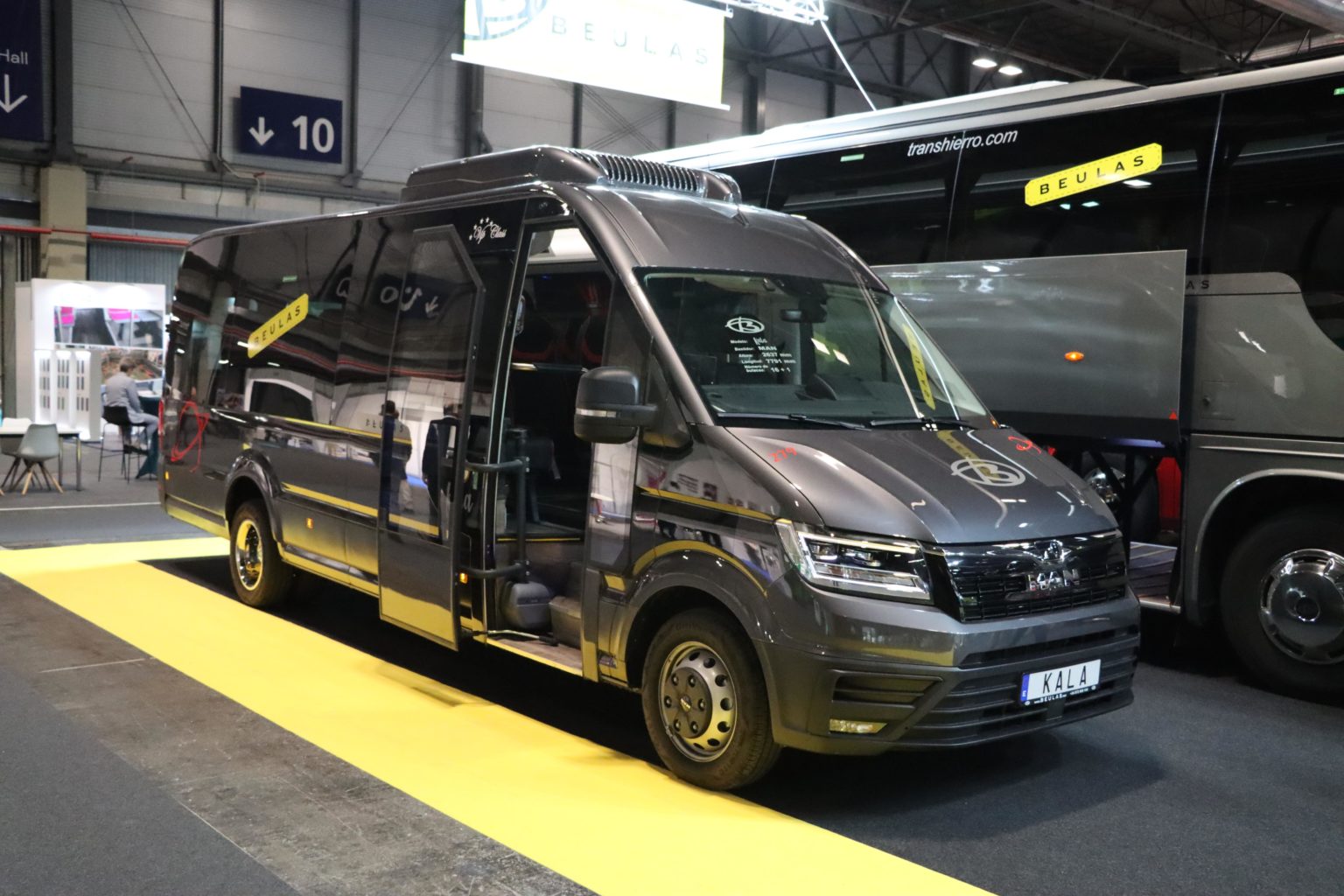
New from Beulas is the MAN TGE based Kala 7.8m minibus
Current production is between 100-150 annually depending on the mix, with around half of this for the home market and the rest elsewhere in Europe. The company may not be large but there is no reluctance to try new technologies or body chassis with alternative drivelines in the future.
Indcar
Indcar has manufacturing facilities in both Spain and Romania and though it has no current presence in the UK market many will already be familiar with the Wing coach, an example of which was shown on the Iveco Daily base. As well as 29 black leather seats, it featured a metal operator’s nameplate in the stairwell and a stand with drip tray for wet umbrellas immediately to the rear of the driver. Also shown was a Mobi City coachbuilt city bus with flat rear-floor section, again on Daily and the plastic seats so popular on Spanish buses. Completing the display was a Bluebird 6m which Indcar markets in France and Italy. Indcar production is expected to be 490 units this year, which is two a day, a 10% increase on 2023. Of this, 45% is urban buses, 255 is touring coaches and 30% school buses.
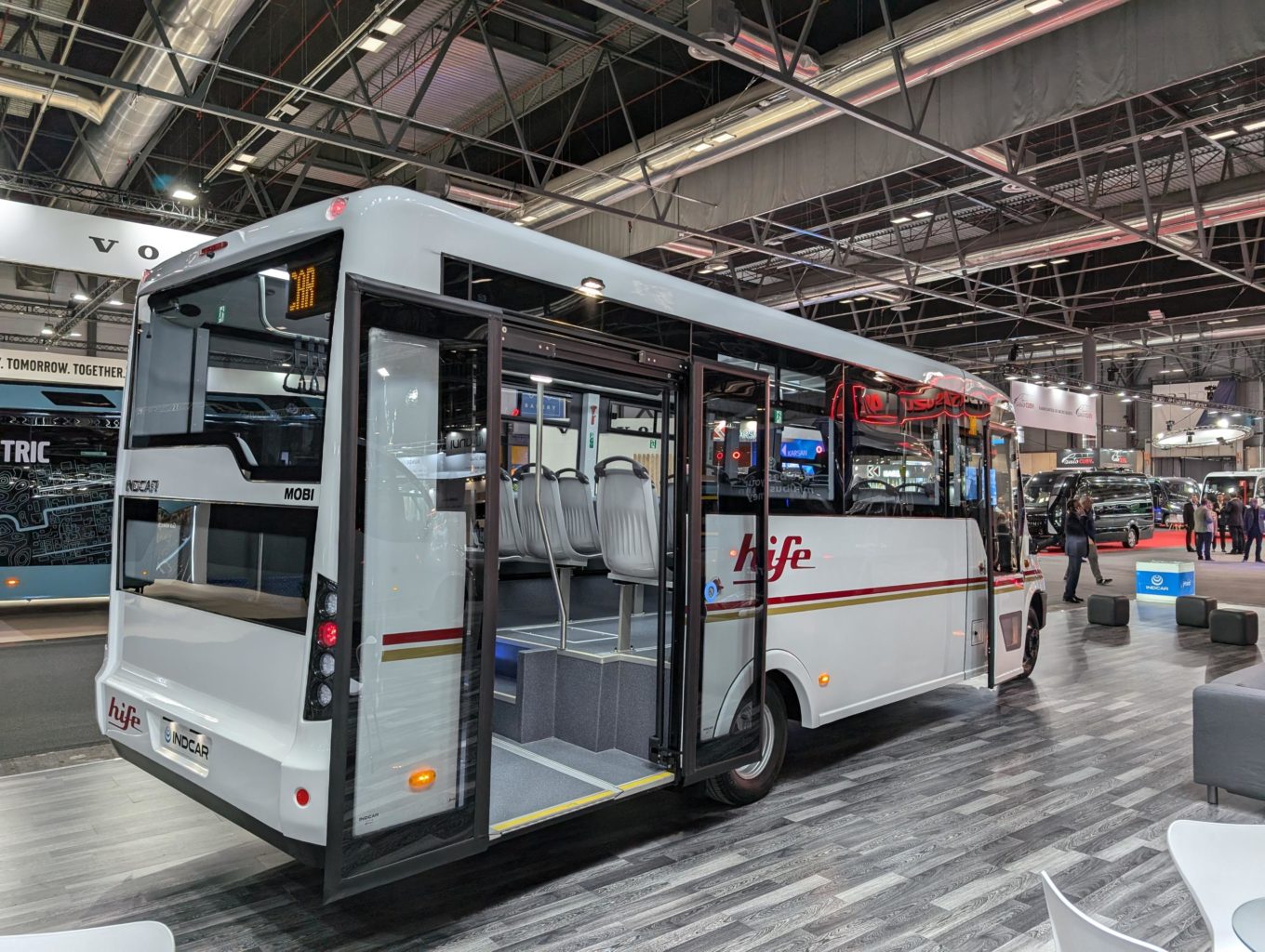
A Mobi City coachbuilt city bus with flat rear-floor section
Karsan
Very interesting news from Karsan was the signing of a new agreement with Danny McGee of EVM under which they will distribute the E-Jest and E-Atak for the UK and Irish markets. The Jest will appear at the forthcoming Euro Bus Expo exhibition on Karsan’s stand with a demo bus expected in the UK in December this year and deliveries from March 2025. It is anticipated that the E-Atak will be ready in right hand drive to a UK specification for late 2025. Karsan has acquired 100% of its Spanish representative, E-buskar, as part of a commitment to further strengthen its presence in Spain with enhanced sales and after-sales services as well as an expanded dealer network. Shown on the Karsan stand were an e-ATA Hydrogen 12m, a 100% electric autonomous ATAK, the first autonomous bus in Norway and electric Jest microbus with 210km range.
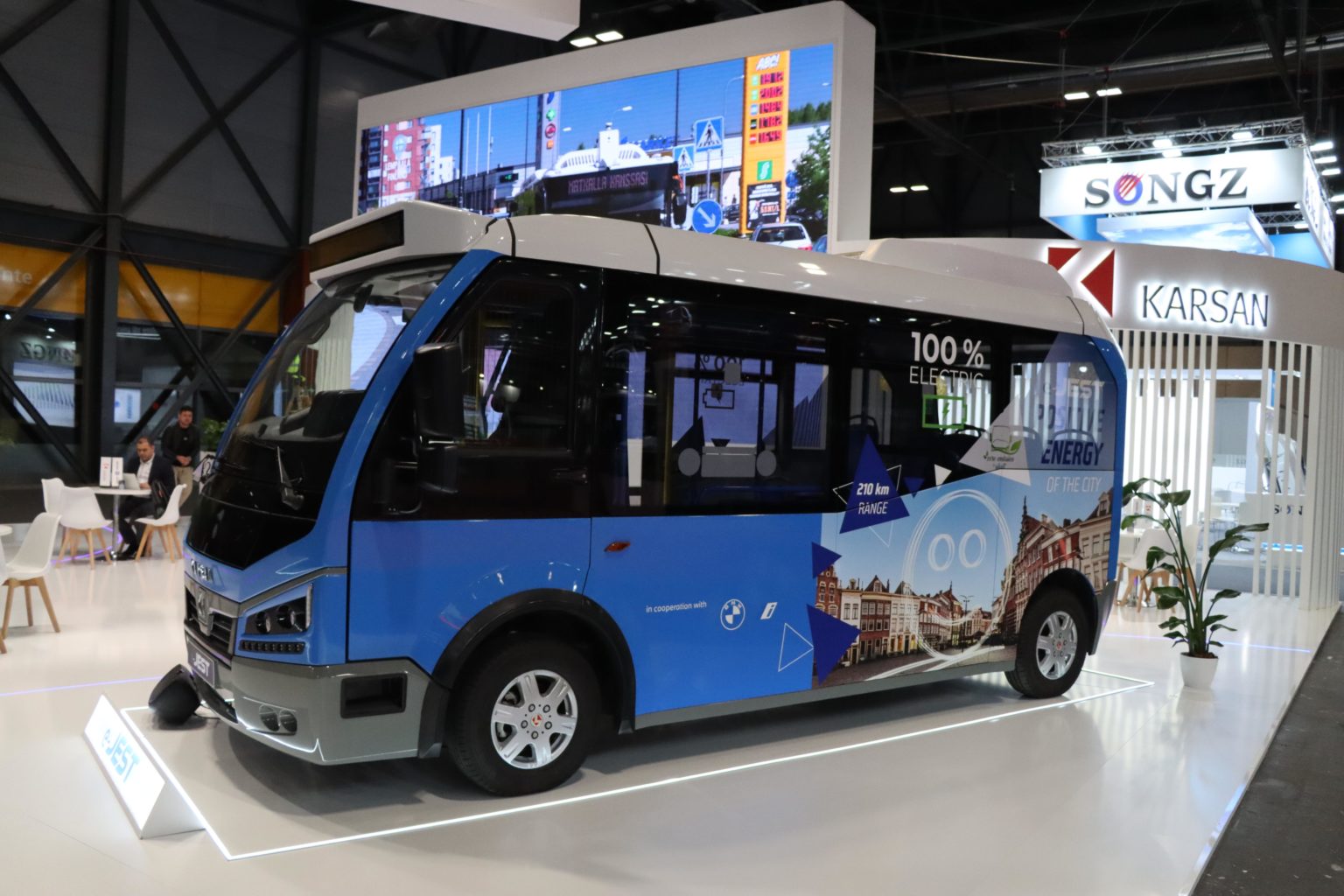
The E-Jest, one of the Karsan range due to come to the UK
Temsa
Temsa has not yet launched its city bus products in Spain, so the stand concentrated on the coach and intercity markets in which it expects to sell 170 units locally this year. UK customers will already be familiar with the MD9 midicoach and HD13 coach but not the new LDSB electric inter-city coach, seating up to 53. Exhibited in a metallic green livery, this has Temsa’s own Lithium-ion NMC batteries and battery management system, a 250 electric motor and the choice of 280kWh or 350kWh capacities for a maximum range of 350km. It has a direct drive system without a gearbox. Front and rear styling is new, there are 12.365m and 13.08m length options, an independent front axle and both kneel and lift functions as standard. Completing the line up is the Prestij SX midicoach. Temsa’s Urzan Uzunay said that Temsa would electrify its entire range, though he later said that he thought the answer for long-distance would be hydrogen, to which end, it has a partnership with Caetano which utilises Toyota fuel cell technology.
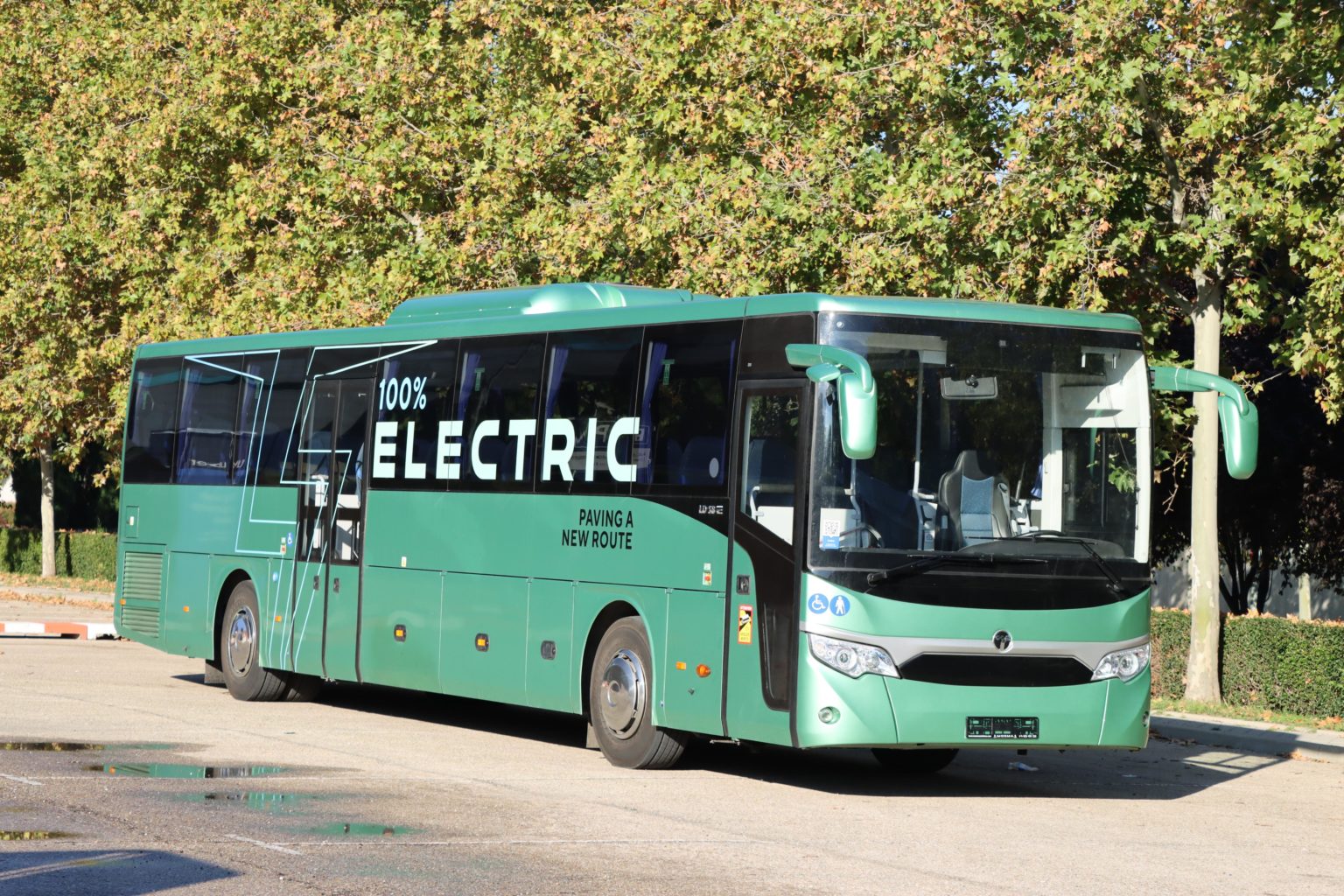
Temsa’s new LDSB electric inter-city coach, seating up to 53
Otokar
Otokar, showing in conjunction with local partner, Somauto, had the E-Territo U electric offered at 12m and 13m for up to 63 passengers. This had a 410kW electric motor and a 450kWh battery capacity. Other exhibits were the 9.2m Navigo T with Cummins ISBE4.5 engine and Allison automatic transmission, the 6.6m E-Centro small bus which has a maximum passenger capacity of 32, a 140Kw motor and 110kWh batteries and the latest version of Otokar’s large city bus design, the Kent C. Also present was the Ulyso T coach.
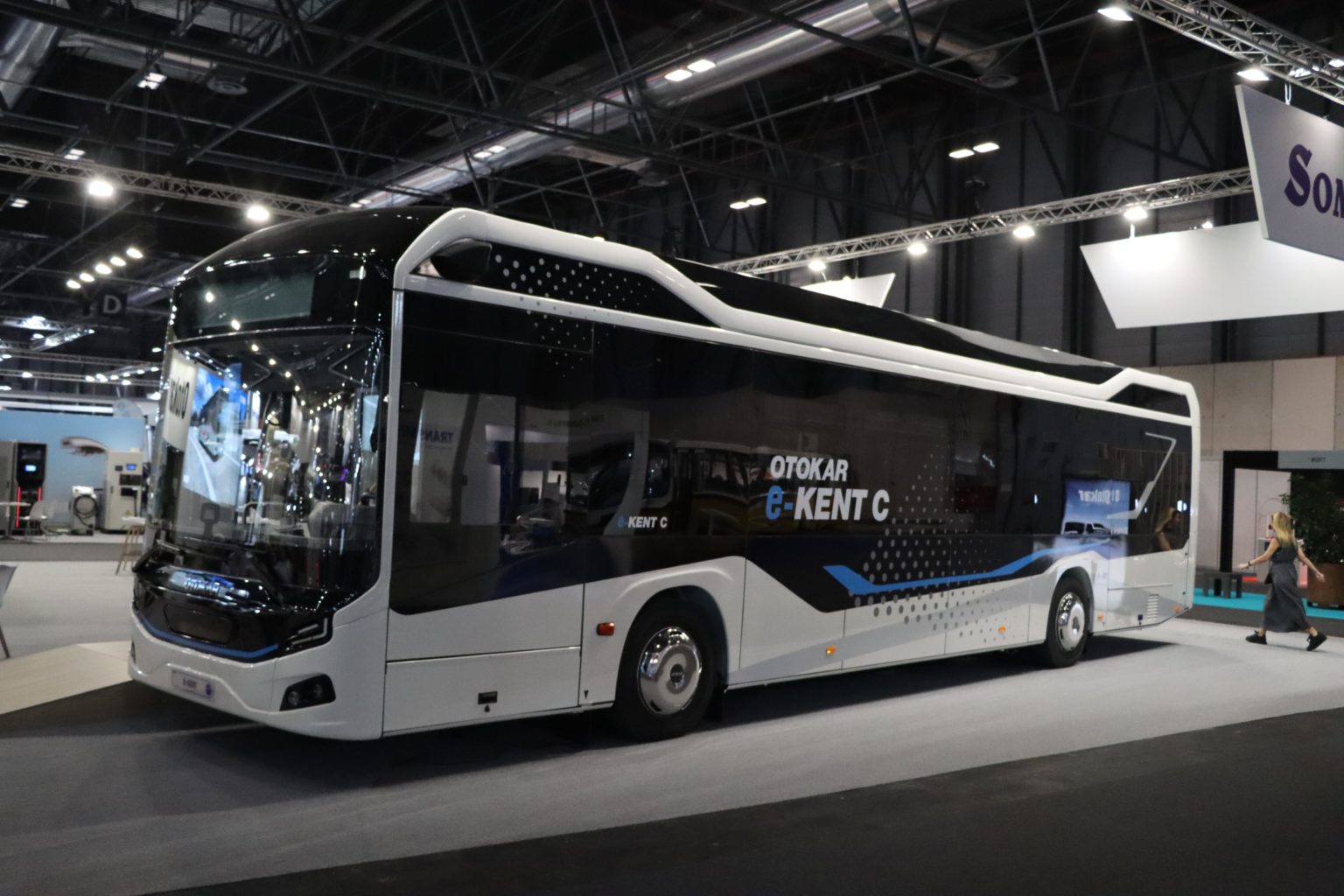
Otokar’s e-Kent C
Ferqui
Ferqui has long been supplying the UK, originally through Optare and more recently through Connaught PSV. A large and busy stand featured four vehicles, two of them electric. Consuming electricity rather than diesel were a Ford E-Transit based Cares accessible minibus with 430kW motor and the rather larger Iveco Daily based Lagos model with composite body. This was a right-hand drive example. Coaches included the Sprinter 519 based 8.005m Sunset S4, and the Iveco Daily based Iveco Daily based Sunrise 3.
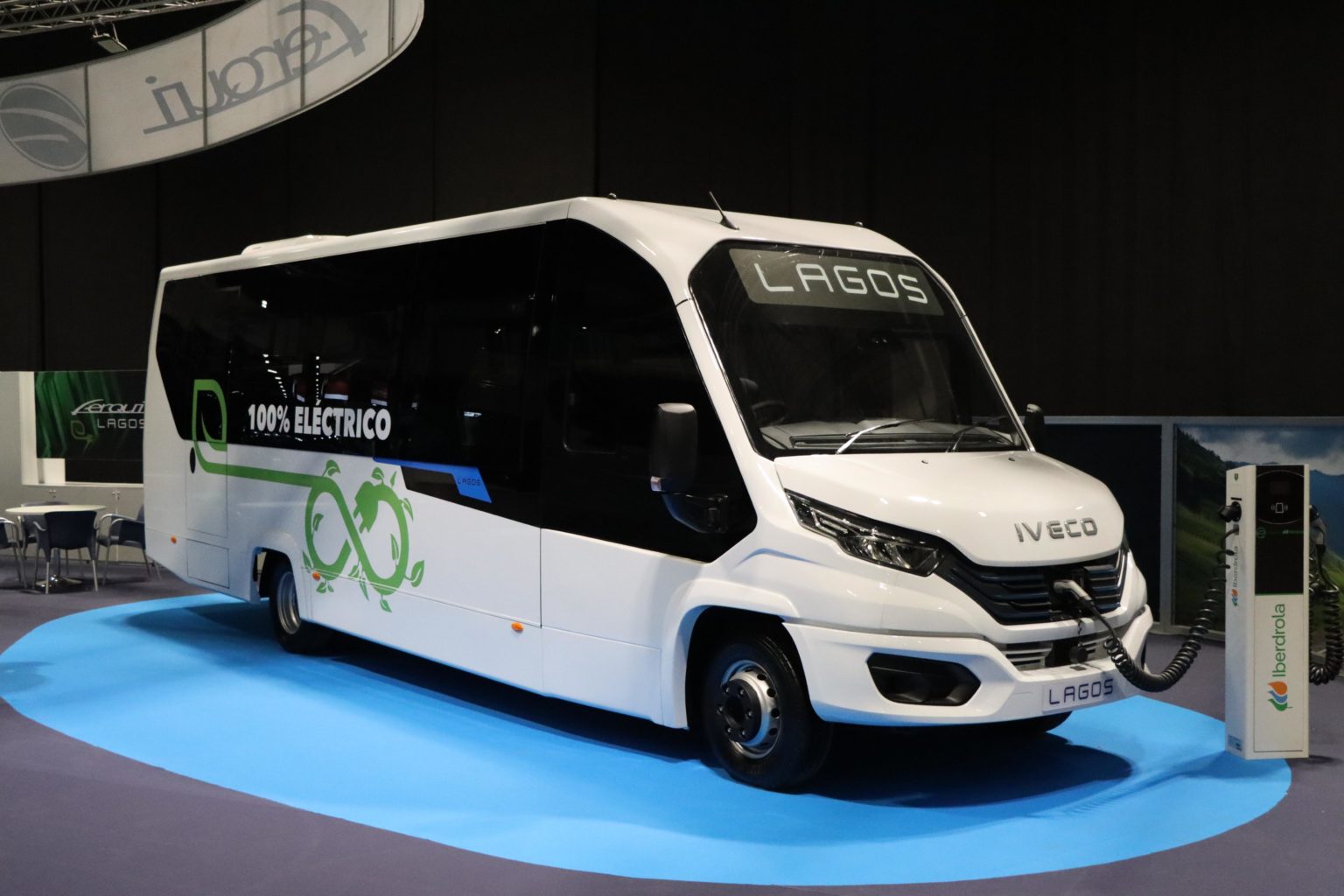
An Iveco Daily-based Lagos model with composite body from Ferqui
Car-Bus.net
Car-Bus.net is a Spanish coachbuilder that supplied vehicles to other manufacturers before 1996 when it created its own brand. It now delivers three vehicles per week. It has a ten-year association with EVM producing the Grand Tourer coach, based on the Spica, for the UK and Irish markets. I met Danny McGee in Madrid and he told me that ‘customers love them’. One will appear at the NEC in November.
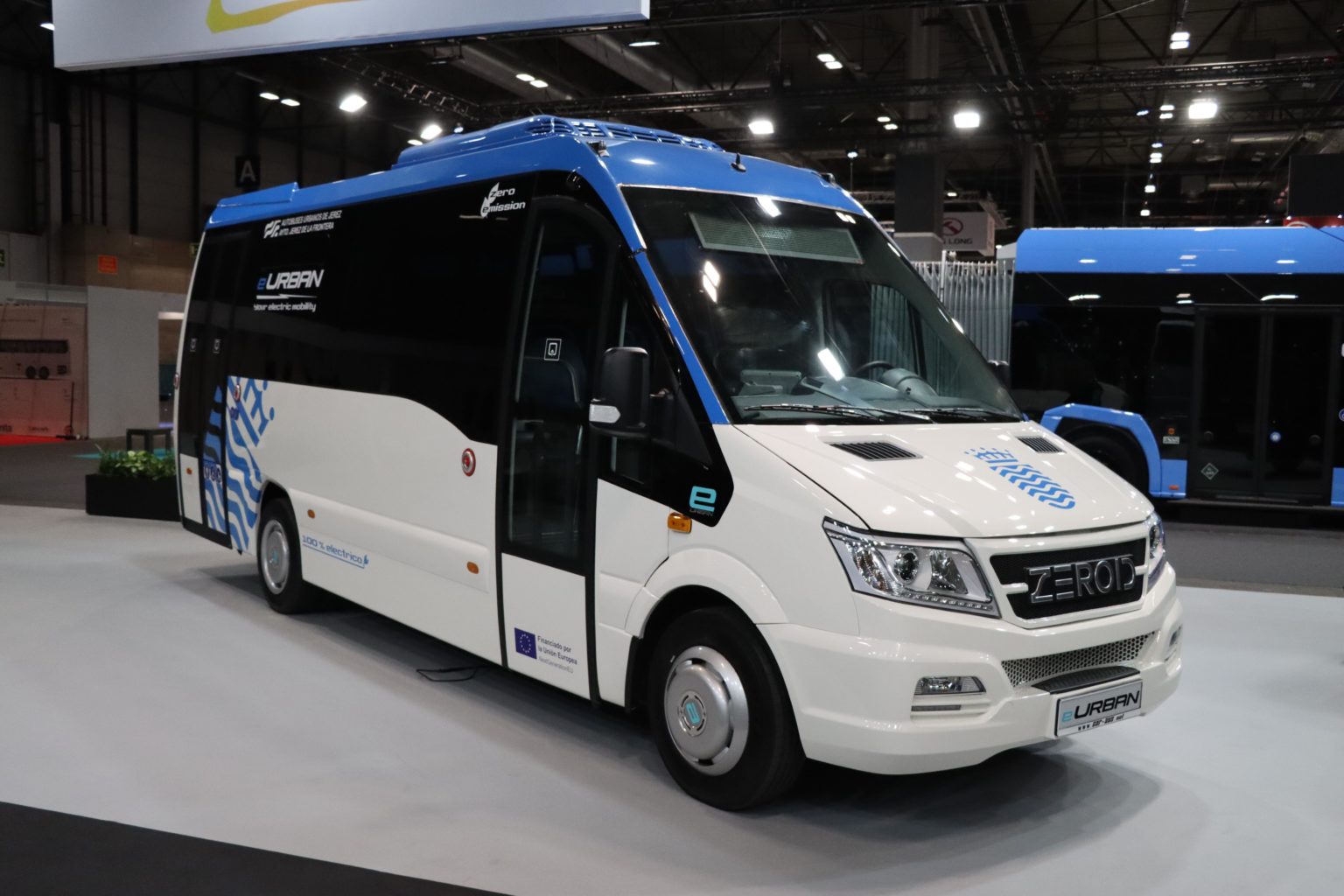
A coachbuilt Urban from Car-Bus.net on the Zeroid C36 electric chassis that had earlier participated in the Minibus Euro Test
Among the four exhibits on the stand was a coachbuilt Urban on the Zeroid C36 electric chassis that had earlier participated in the Minibus Euro Test. It had a low rear platform and batteries located between the axles. Zeroid is based in Barcelona and imports the base vehicles from China, certifying them locally. Car-Bus won the previous Bus Euro Test with its coachbuilt Shaula on a Sprinter chassis uprated to 7.5 tonnes, losing its Mercedes-Benz warranty in the process. One of these appeared as well as a Spica, on a 5.5tonne which can be offered with capacities of 19 or 22 seats. Both featured electrically operated boots. The final offering was a Diplomatic, a luxury 9+1+1 minibus on an electric Sprinter with 123kw motor and 115kWh batteries.
Anodolu Isuzu
Anodolu Isuzu is another to have come to the UK in recent years, again through EVM. Meeting the electrical need was a 7.42m long Novo Volt minicoach with Allison eGen Power 100S system giving 325kW maximum net power. It uses a CCS2 charger and has a 176kWh battery capacity. Diesel models were the 9.66m Visigo with Cummins B6.7 233kW engine and six-speed automatic ZF EcoLife transmission as well as an 8.516m Grand Toro 35-seater with four-cylinder ISB4 Cummins engine.
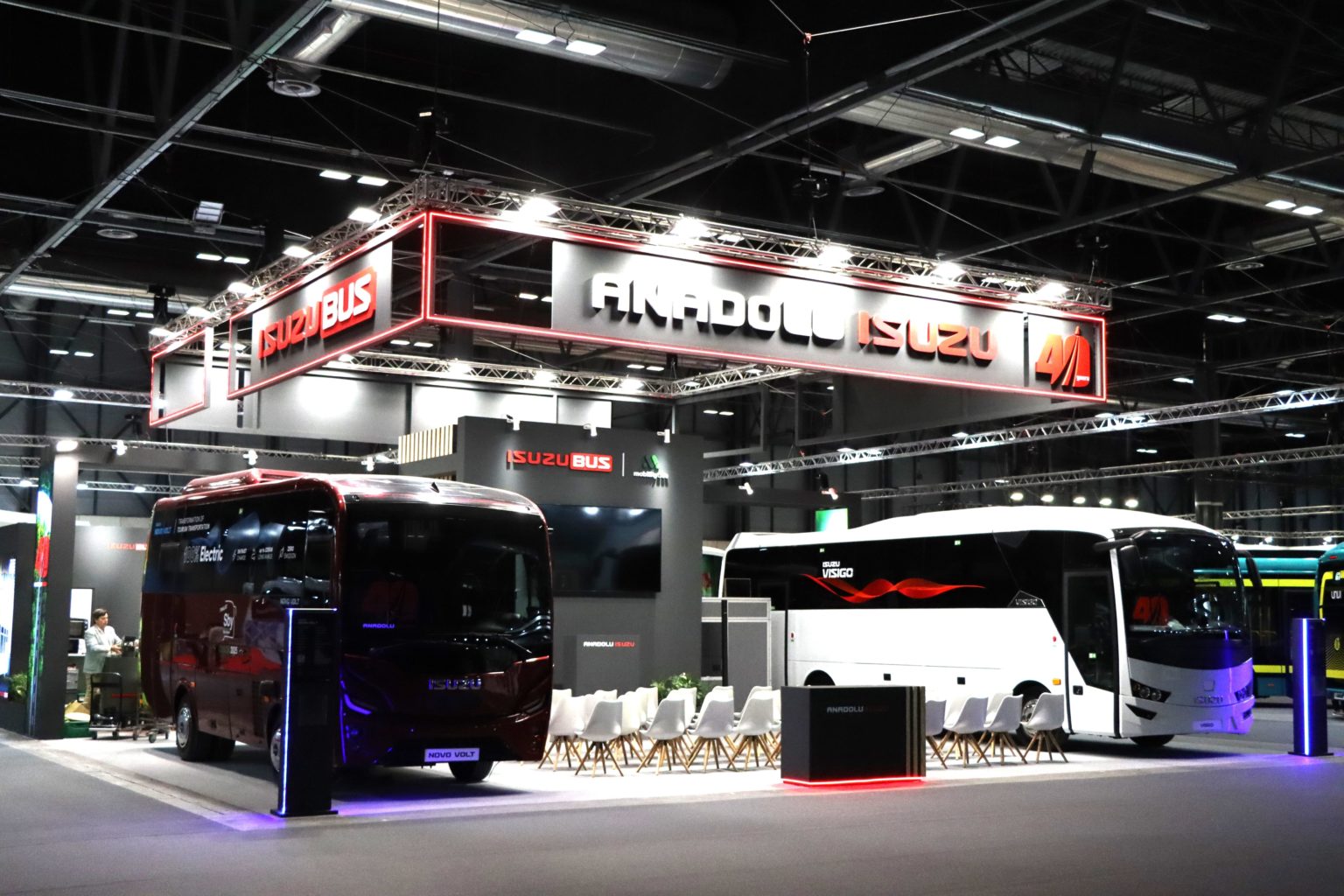
Unvi
Unvi showed four vehicles on its stand. These were a conversion of the Iveco Daily minibus with deep windows and power door; a Daily mounted M20 coachbuilt 29-seat coach trimmed in two-tone leather; an EC22 two-door city bus with plastic bus seats and alongside it the smaller eC24s, a centre door minibus.
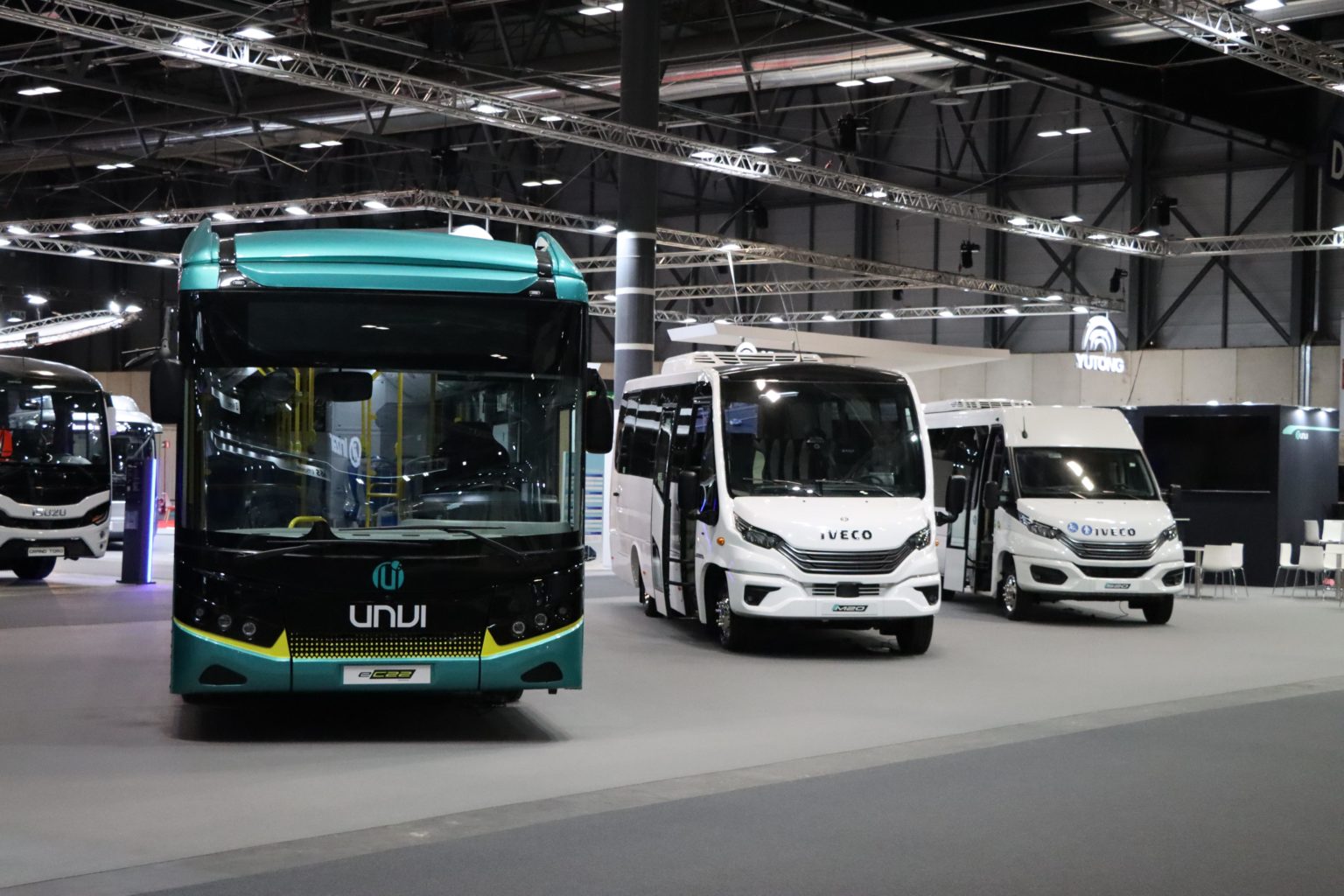
Avuero
Avuero, the growing Romanian convertor, showed an attractive and flexible Sprinter Electric conversion with folding seats that do not need dismounting to enable three wheelchairs to be loaded via a rear lift, although it can just as easily be used on schools or airport transfers. Also shown were the e-Ambra Daily-based electric city bus; a 22-seat Sprinter 519CDi with normal windows and a Sprinter 519CDi based conversion with double rear doors and Hidra lift.
Auto-Cuby
Auto-Cuby‘s large stand housed six minicoaches, as usual, most of them in black paint schemes. I’ve always found their high-spec minibuses attractive and a VIP-Line conversion of the Sprinter 419CDi with eight white leather captain’s seats was no exception. Several coachbuilt Tourist-Line coachbuilt coaches were shown on both Sprinter and Iveco Daily bases, the latter offering up to a maximum of 35 seats plus driver. There was also a Tourist Line Sprinter van conversion with large windows.
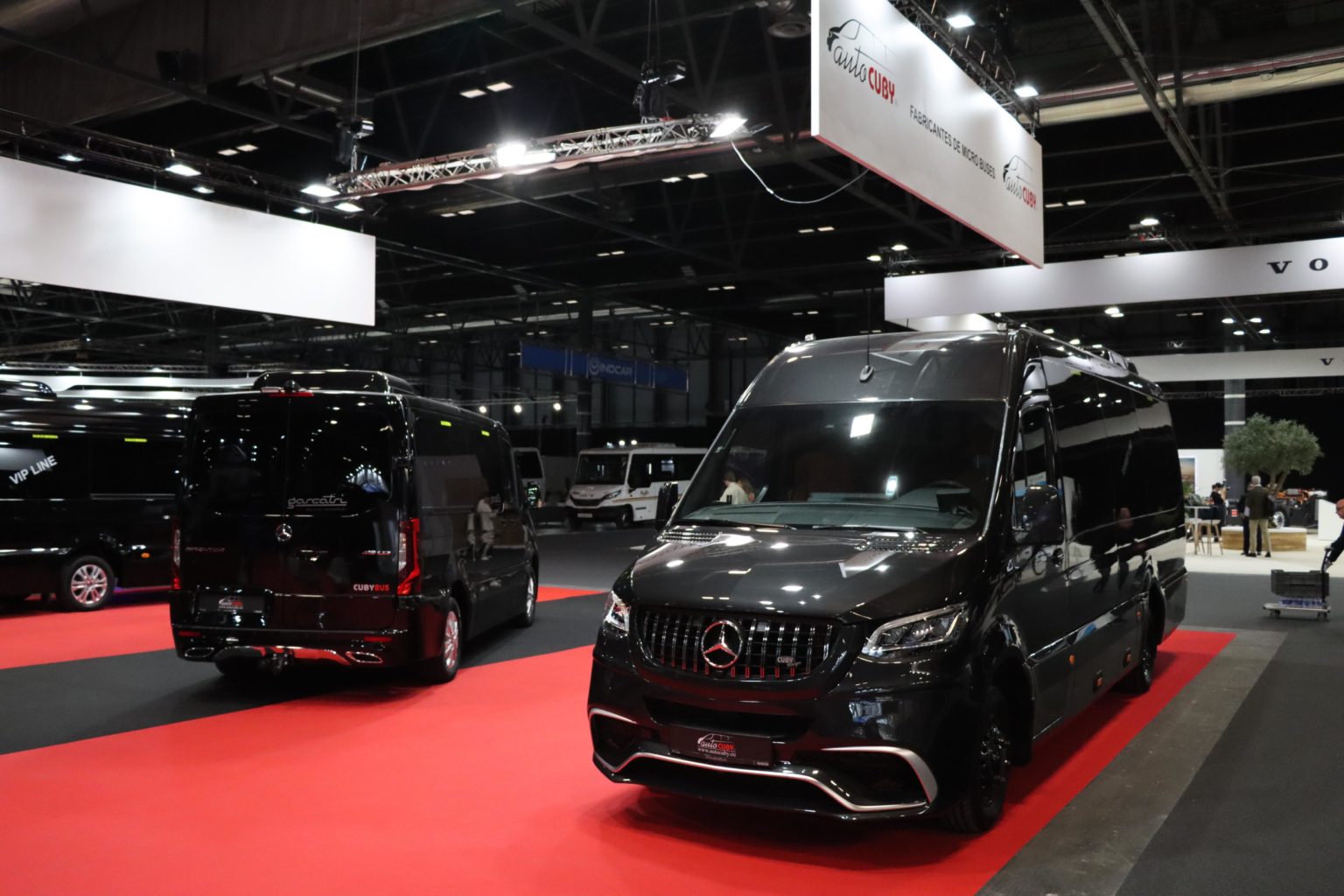
Several coachbuilt Tourist-Line coachbuilt coaches were shown on both Sprinter and Iveco Daily bases
Tremonia Mobility
Tremonia Mobility had good cause to be enthusiastic about their presence in Madrid, having participated in the Minibus Euro Test 2024 in the days leading up to the show and winning the coveted International Minibus of the Year 2025 award as a result. Taking centre place on their stand was the winner, a Tremonia City 75 electric, an 8.468m long city minibus that takes as its starting point the Mercedes-Benz Sprinter, though only the front most sections of this are used in their end product. It features a large front floor area, large centre doors and an additional door at the rear nearside. The driveline has the Elinta electrical package. Plans for the coming year are for the weight to be reduced, possibly by using thinner glass, to further increase the passenger capacity.
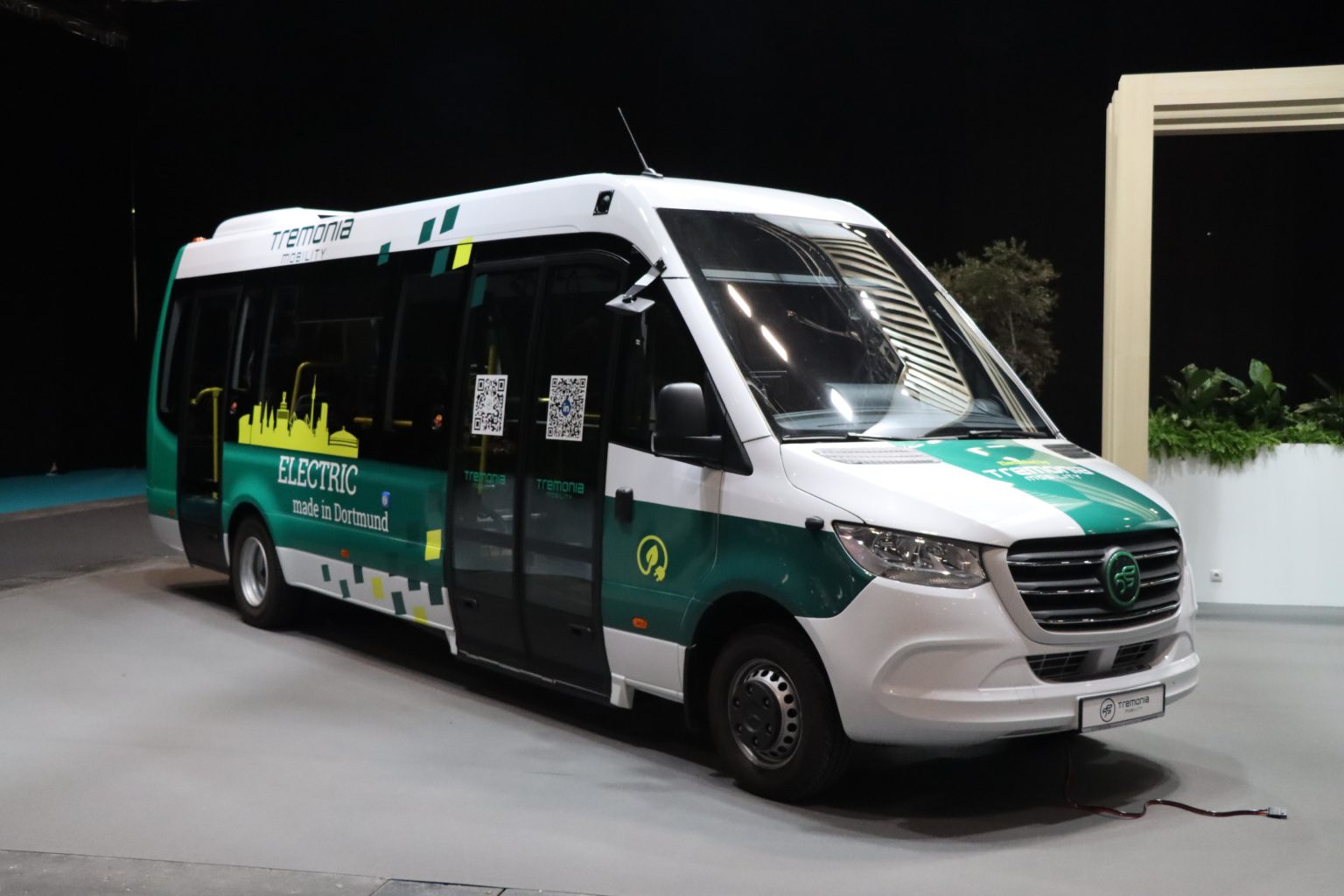
A Tremonia City 75 electric, an 8.468m long city minibus that took the International Minibus of the Year title
Tremonia also builds other, smaller Sprinter-based minibuses including the Mobility 23, Transfer 35, Transfer 45 and Electric City 45 as well as a diesel-powered version of the City 75. In the UK EVM offers Tremonia produced medium wheelbase Transfer 23s with ten seats and is working on an upgraded version of the Transfer 45 as a luxury entry-level product with racks, air con, privacy glass and 16-22 leather seats. EVM has no plans to offer the City 75.
Altas Auto
Altas Auto’s two minibuses were a 7.367m Cityline with 22 passenger capacity (13+9) and 170cv EuroVIe engine and the Tourline L 19+1+1 minicoach with 190cv Euro VIE engine. Atlas is yet another manufacturer represented in the UK by EVM. Altas produces the Cityline, E Cityline and Tourline ranges in an agreement that now goes back ten years, with numbers growing steadily through that period.
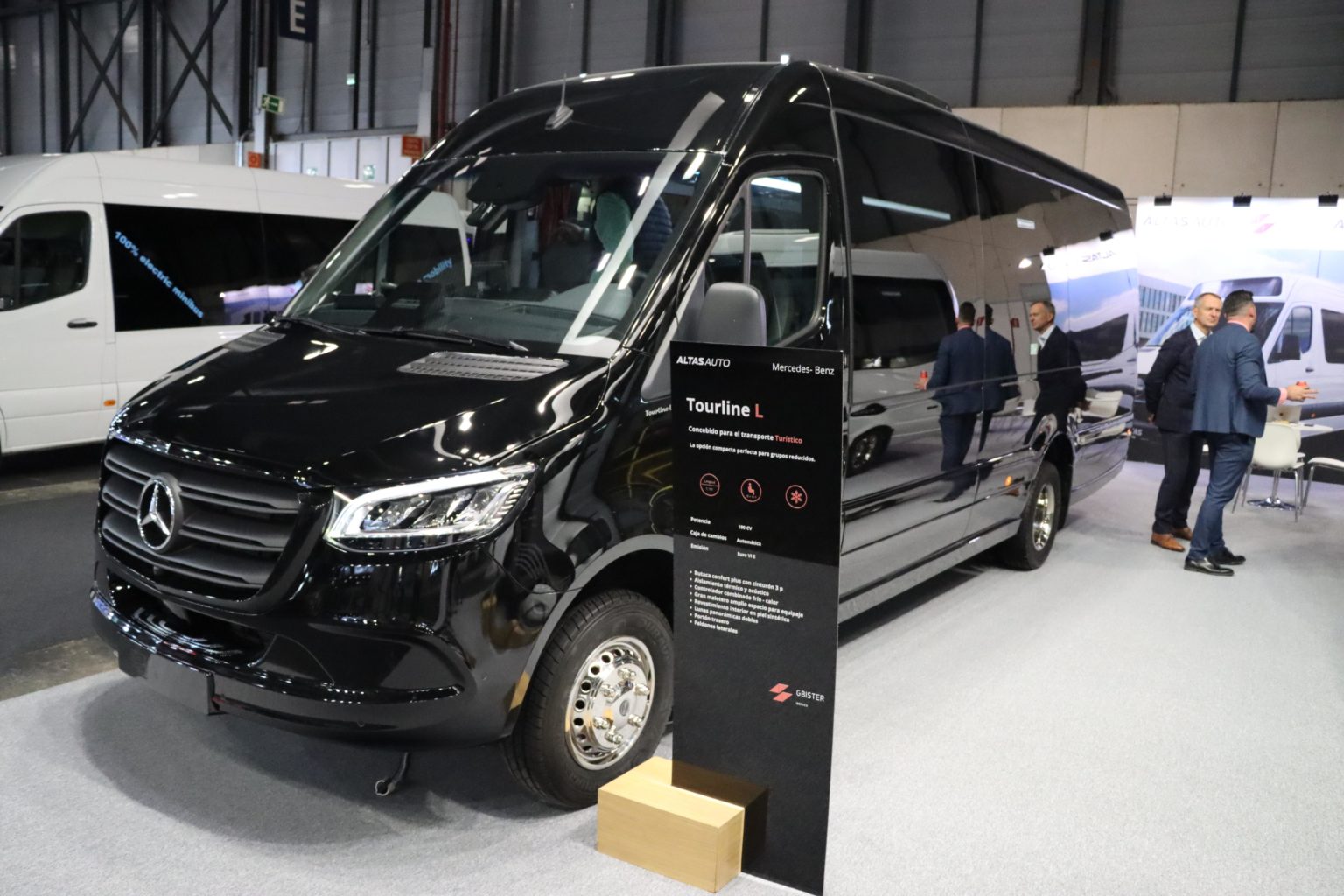
The Tourline L 19+1+1 minicoach with 190cv Euro VIE engine displayed by Altas Auto
Tekaydinlar
Represented in Spain by G Bister Iberica, Tekaydinlar displayed a 27+1+1 seat, 8.096m, coachbuilt Sprinter Icaro with 27 passenger seats and two doorways as well as a 7.743m Sprinter Zacor.
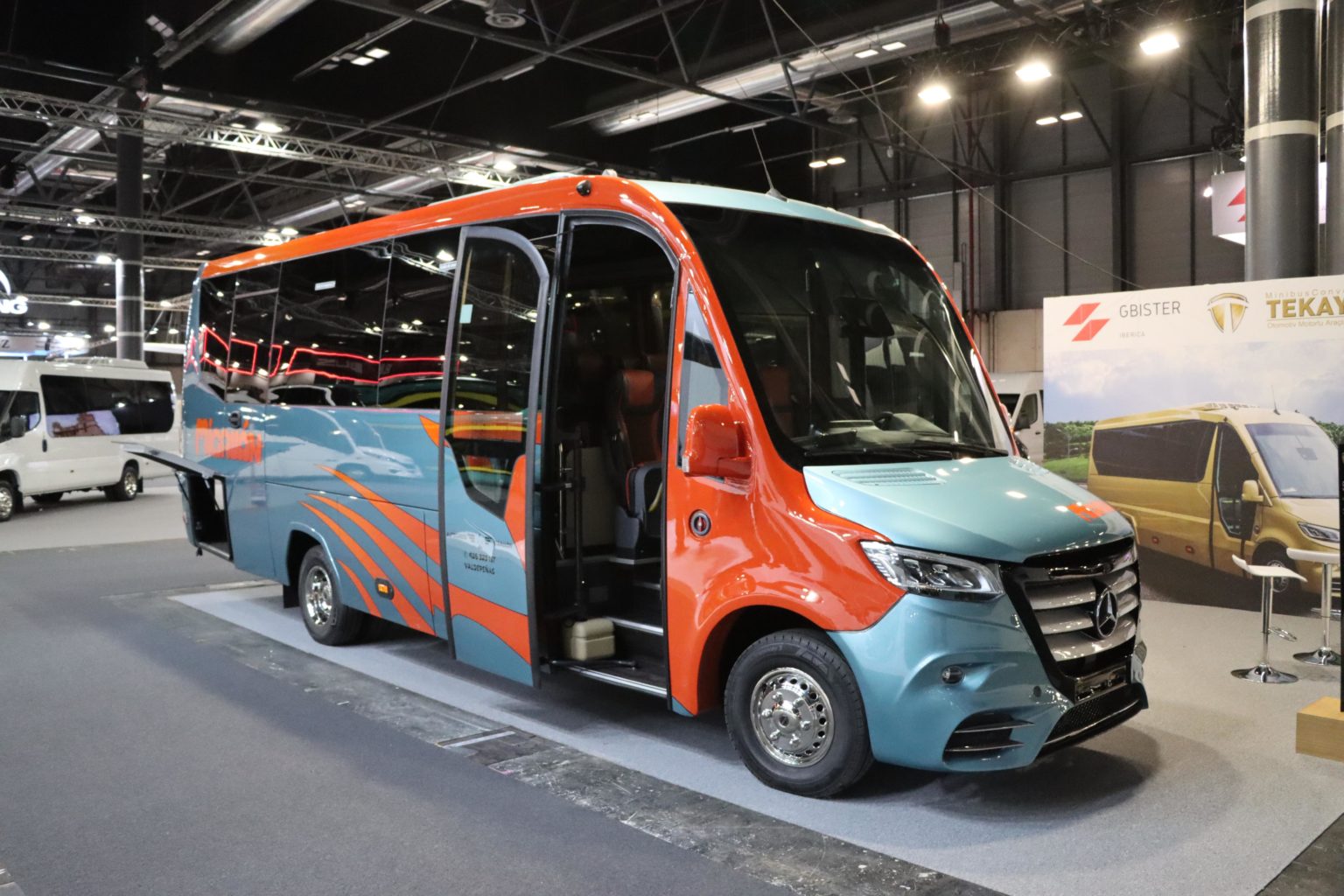
Tekaydinlar displayed a 27+1+1 seat, 8.096m, coachbuilt Sprinter Icaro with 27 passenger seats
Yutong
Yutong was making its first appearance at the FIAA and plans to start offering its products in Iberia. CEO for Europe, Jack Li, said that the company had built a total of 36,500 buses in 2023 and expected sales volume to be over 40,000 in 2024, when it expects to deliver over 1,500 electric buses and coaches in Europe. In total, it has 180,000 buses in service worldwide with 7,000 buses in Europe already of which 2,000 are electric. His press conference speech stressed safety, quality control, environmental issues and support, as well as the breadth of the product offering. It plants a tree for every electric bus sold.
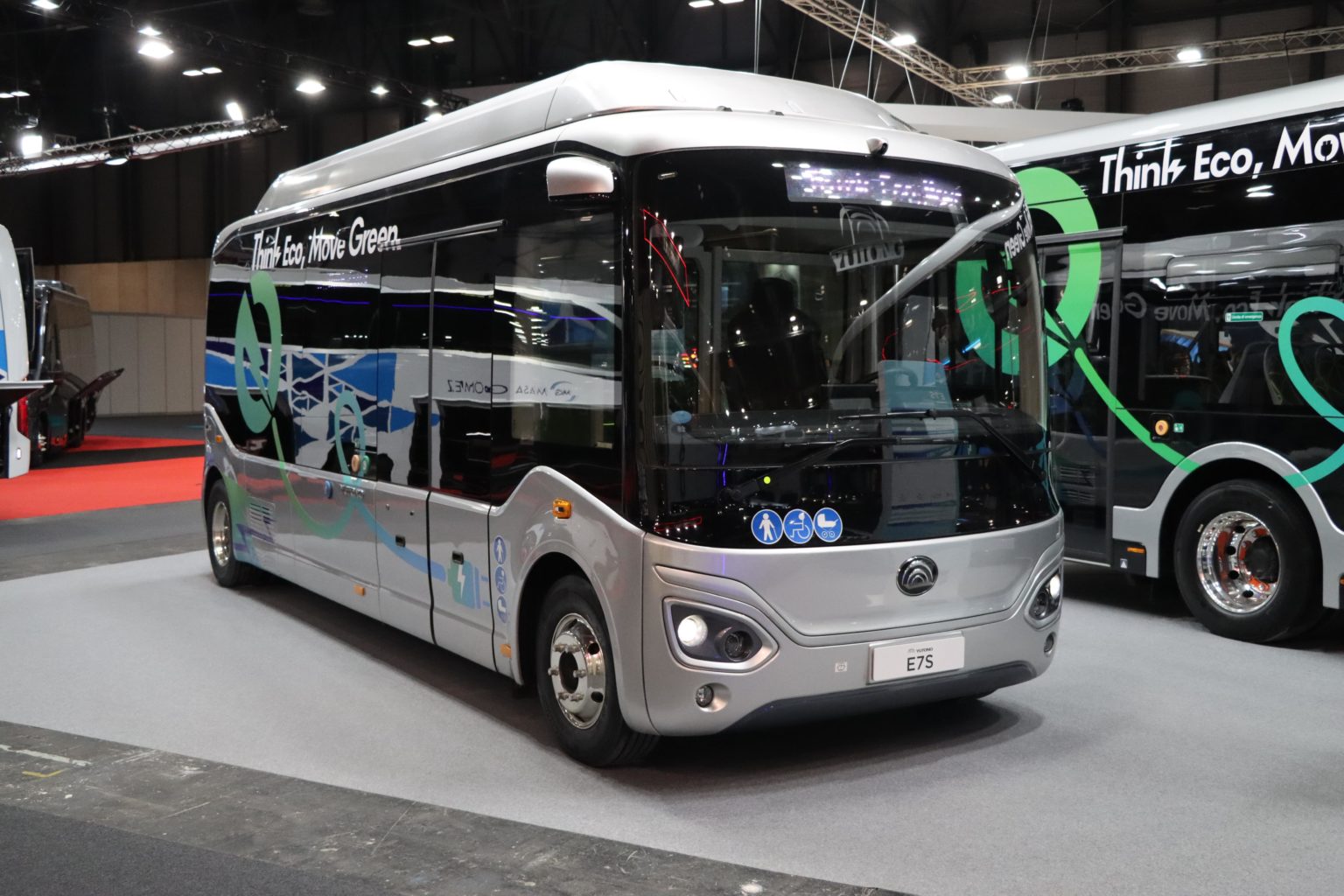
An E7S 7m minibus, a 10.57m U10 81-passenger bus from Yutong
On the stand were an E7S 7m minibus, a 10.57m U10 81-passenger bus, a T12E 12.24m long, 3.71m high electric coach and an IC12E 12.465m Class II inter-city electric coach with front and centre entrance with 59 seats. The T12E had a battery capacity of 422kWh, while the IC12E offered 350kWh, though 282kWh is an option. Busworld 2025 will see the launch of a new generation of IC12E that will be lighter and more spacious.
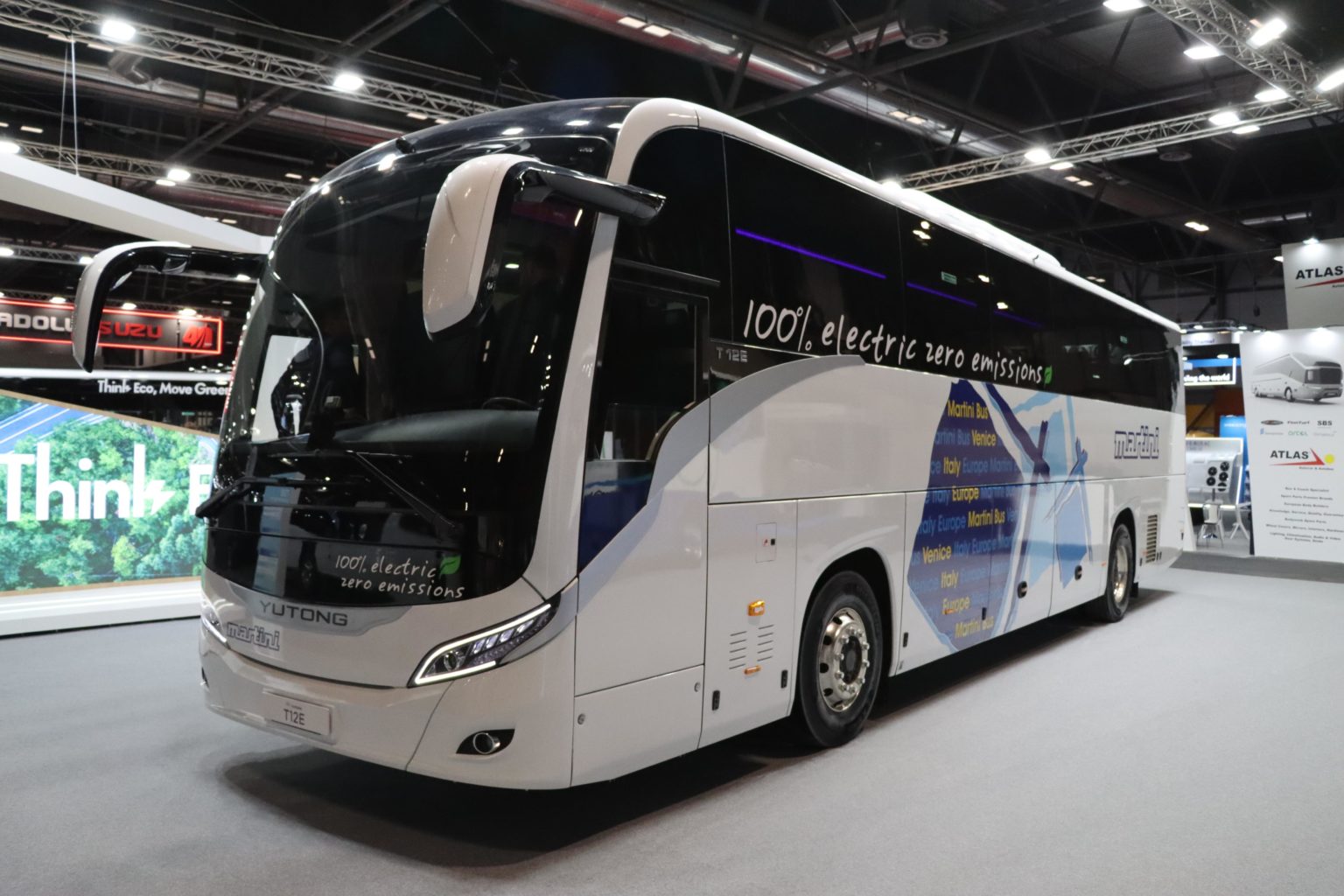
A Yutong T12E 12.24m long, 3.71m high electric coach
King Long
King Long was early to the UK market and neither the quality nor support met expectations at that time. However, their reception in Spain has been better and will exceed 100 units in the market this year, they claimed. Four models were shown, among them the M Combo electric coach with distinctive flowing lines and a strange grille incorporating constantly phasing lights. It will go into production as both a diesel and an electric in 2025. Also displayed were the U12 zero, U13 and C10, which are developments of earlier models. A hybrid version of the U13 is to be offered. The U12 zero is a full electric inter-urban coach shown as a 12m but also to be made available at 15m. It featured a wide centre door in addition to the front entrance.
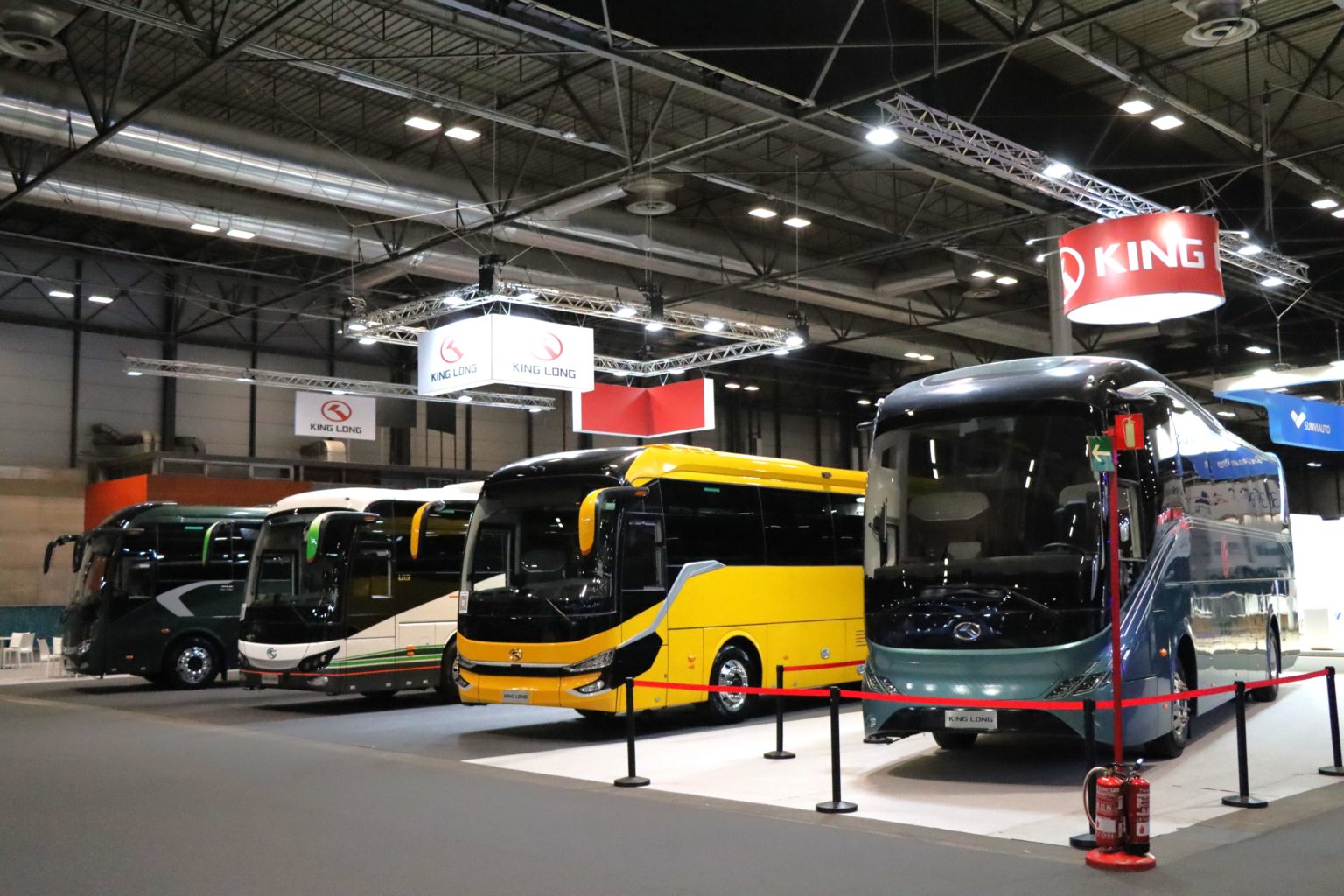
Alfa Bus
Another of the many Chinese manufacturers tackling the market is Alfa Bus based at Wuxi near Suzhou (where Higer is based). Shown were an E City 12 12.2m city bus with Alfa’s own 300kW motor and 423kWh CATL batteries as well as an ECityLO8 8.2m two-door midibus with single rear wheels. An 8.5m version will be introduced next year along with a 6.4m microbus. A 13.2m city bus option is also offered.
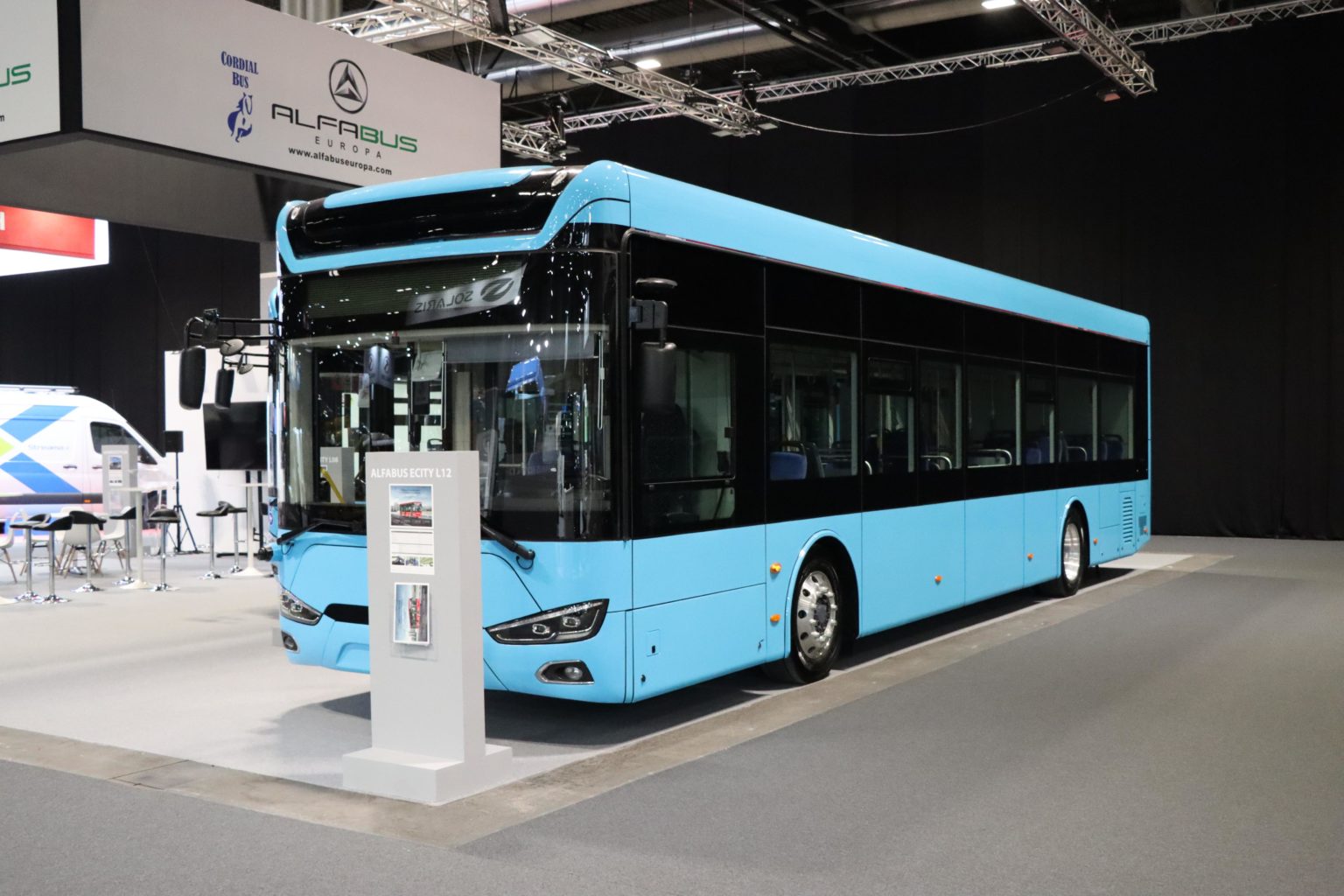
An Alfa Bus E City 12 12.2m city bus with the manufacurer’s own 300kW motor and 423kWh CATL batteries
Old timers
As with many shows, there were a number of ‘old-timers’ to be seen among the modern exhibits and two of these were half-cab British double-deckers from the excellent Museo EMT. One was a Leyland OPD2 with Metro Cammell Weymann bodywork which, unusually, had both the steering wheel and the rear entrance on the same side. The other was a Guy Arab II with more adventurous styling incorporating a sloping front and smaller windows, although I was not able to trace the bodybuilder. Also represented were various Pegaso, Renault and other locally built buses including what looked like an early Setra integral but carried Pegaso badges.
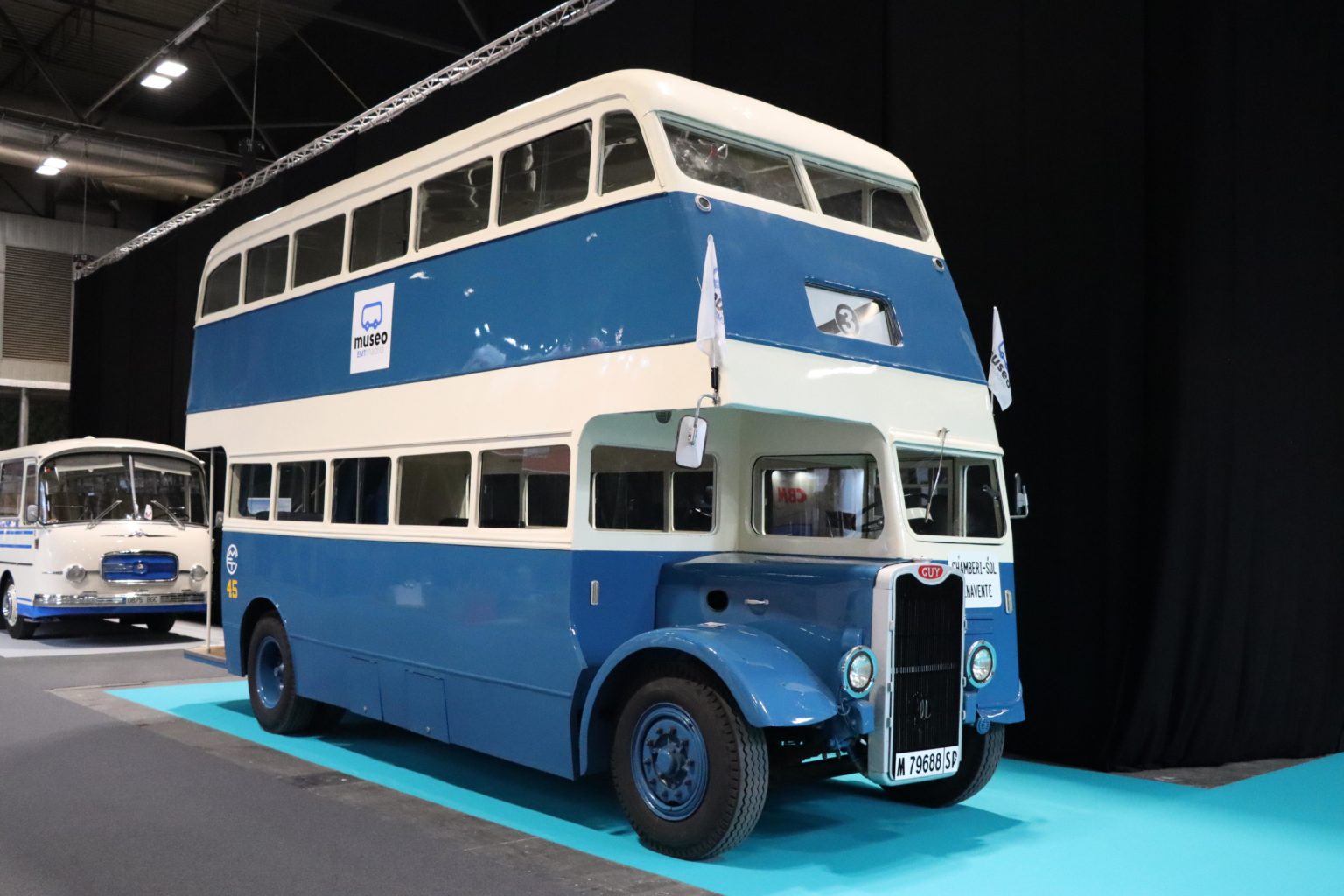
Guy Arab II
Last Word
The 2022 edition of the FIAA included almost no Spanish manufacturers. More of what was once a multitude of Spanish players have fallen by the wayside since, with Noge Bus a recent casualty and Sunsundegui currently experiencing major difficulties, but most of those that remain healthy were present this time, either in their own right or on the stands of chassis manufacturers. I do not have figures for it but it appears there is a continuing trend towards the big players supplying complete integral products but body on chassis production remains an important element of the mix, indeed Volvo appears to be moving towards only supplying chassis rather than complete coaches, at least in the Iberian market. In the larger midicoach sector, traditionally a strong one in Spain, there still seem to be limited options to mount products on, Car-Bus turning to the Barcelona based Zeroid concern for its largely Chinese-built C36 electric chassis as a new alternative. Purchase prices for electric vehicles remain much higher than for diesels but there are some limited signs of convergence, especially when whole life cost is considered.
European manufacturers continue to complain bitterly that European public funds are being used to subsidise 80% and sometimes even more of the difference in cost of zero emission buses and coaches that are built in China and benefit only their economy. Yet the manufacturers of these products do not face the same expensive employment legislation and other legal requirements, nor receive the same state subsidies that contribute to making their European built products more expensive.
